Salar de Uyuni, the largest salt flat on Earth, is a major highlight on any Bolivian driving tour. Measuring a whopping 12,106 sq km, the salar is an expanse of blinding whiteness that was formed by the evaporation of a giant prehistoric lake. The terrain looks deceptively firm in all directions, but it’s not uncommon for vehicles to bust through the salty crust and get stuck in the soft mud underneath. We had heard stories of people in 4×4’s being stuck for days with no other vehicles around to provide a tow. So when our American friends, John and Paula, told us they would join us on the salar, we were happy to share the adventure with them.
After our trip to the Amazon Basin, Gregor and I returned to Hotel Oberland in Mallasa to meet up with John and Paula. They had been driving the Americas in their truck camper since November 2014, but had decided to take a 6-week break from their rig to visit family in The Netherlands. John and Paula had just returned from their European vacation and were settling back into camper life in South America. To help ease their transition, we planned our salar driving route over Swiss-inspired meals at Hotel Oberland.
The plan was to spend 3 days and 2 nights on the Salar de Uyuni, completely self-sustained. It was June – the middle of Bolivia’s winter and one of the coldest months to visit the salt flats. The salar sits at a hostile elevation of 3,653 m and overnight temperatures had been dipping to -10 deg C. It wasn’t the ideal place for any kind of camper malfunction or domestic drama, so we all made an extra effort to prepare for the trip. We checked all vehicle systems, repaired long-ignored items, filled up with water and propane, created food plans, and prepped our winter clothing and bedding.
Once our rigs were prepped, we left Mallasa and headed for Uyuni – the launching point for trips to the salar. On the way there, we drove through an epic sandstorm for a nerve-wrecking 30 minutes. John and Paula got some interesting shots of Lucky disappearing in the dust.
Once we arrived in Uyuni, we filled up our gas tanks and all our extra jerry cans. This brings up an interesting quirk about driving in Bolivia…
Getting Gas is Not Easy
Bolivia has a two-tiered gas pricing system:
- Locals can buy gas at 3 Bolivianos per litre ($0.60 CAD/$0.45 USD)
- Drivers with foreign license plates pay over 8 Bolivianos per litre – almost three times more.
This two-tiered system was designed to ensure that gas subsidies are rightfully provided to Bolivians, who happen to be some of the poorest people in South America. Video cameras are installed in many gas stations to track license plates and to ensure that attendants charge foreigners the proper rate.
Most foreigners (including us) are perfectly okay with paying the higher gas price. But here’s the problem:
When we pull up to the pump, gas attendants typically refuse to serve us because they don’t want to do the extra paperwork to process the higher rate. No Bolivian plate, no gas.
So how does a foreigner get gas in Bolivia? Well, according to experienced overlanders, you can try any one of the following:
- Pull up to the pump and don’t move until you are served. Make a big fuss until you have completely annoyed all the people behind you and all the workers at the station. Theoretically, they’ll sell you gas at any price just to get rid of you.
- Pull up to the pump and ask for gas “without a receipt” (sin factura). Then bargain for a gas price that falls between the local rate and foreigner rate (5 or 6 Bolivianos per litre). The attendant processes the transaction at the local rate, but gets to pocket the difference between the price you paid and what a local would have paid. This tactic works when there is no video camera on site.
- If there is a video camera on site, leave the car around the corner and walk up to the pump with jerry cans (that way, no one sees your license plate). Bargain for an intermediate gas price as per #2. Carry your full jerry cans back to the car.
Fun fact:
When Janice shleps a 20-litre jerry can full of gas across any significant distance, she walks like a zombie carrying corpse.
Gregor and I have tried all of the above tricks to fill up in Bolivia. Sometimes we got gas, other times we were flat out refused. It was frustrating as hell, but we kept reminding ourselves that this was all part of the adventure. Who knows, maybe one day we’ll find ourselves working in a felt-lined cubicle somewhere and we’ll be wishing that we were back in Bolivia struggling to buy gas.
The Town of Uyuni
Uyuni is best known to international travellers as the gateway to the salt flats. This wind-blown outpost has a god-forsaken “why-would-anyone-live-here” kinda feel, but the town has enough hostels, tour companies, and souvenir shops to make it seem like an acceptable stopover. What the town doesn’t have is a proper campground or parking area where overlanders can stay overnight. So we set up camp in front of a military base, across the street from Minuteman Pizza. The restaurant let us use their washrooms as much as we wanted. In return, we ate their pizza.
The temperature dropped to -5 deg C that night, making the indoor van temperature just above freezing. When I reached for the olive oil to cook some eggs the next morning, nothing came out. The oil congealed inside the bottle.
After breakfast, John, Paula, Gregor, and I walked around Uyuni looking for food and supplies for our salar trip. Like many other towns in Latin America, there were plenty of hardware shops, street markets, and tiendas (little grocery stores) that sold everything we needed. You could even buy plastic action figures and garden gnomes if you wanted.

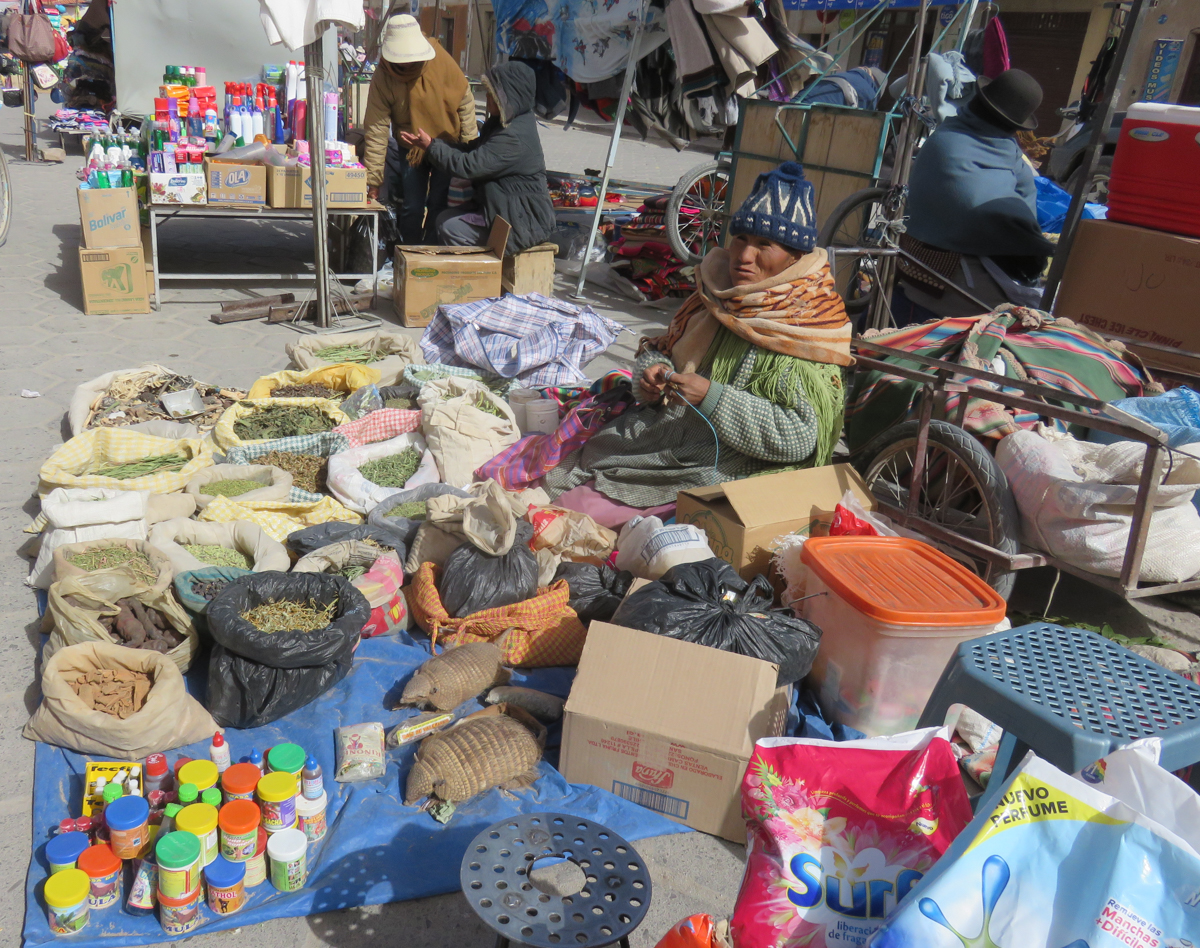
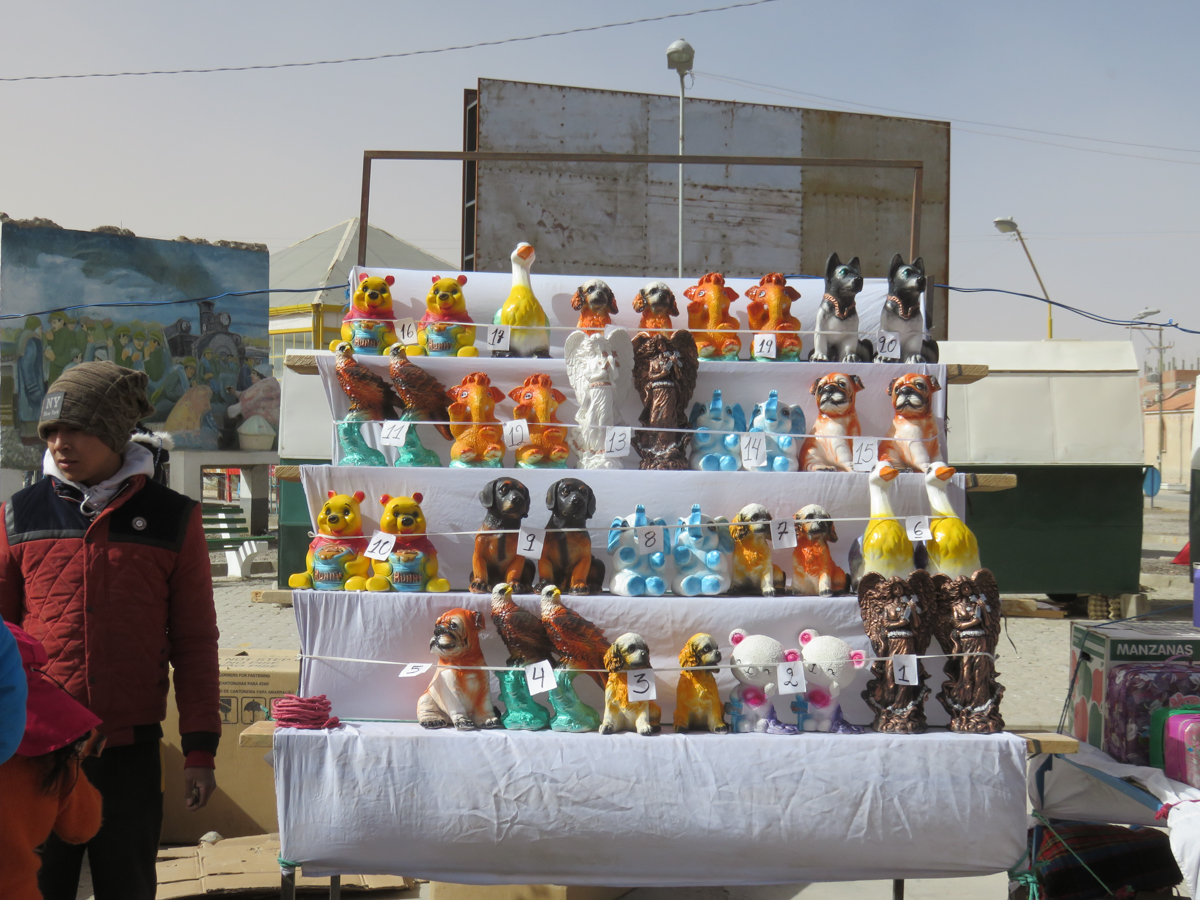
Once our rigs were provisioned, we gassed up and went to the car wash. It’s a popular practice in Uyuni to take your vehicle to the car wash and get motor oil sprayed on the undercarriage so that salt from the salar doesn’t corrode the underside. John and Paula gave LoJo the oil treatment, but Gregor decided that Lucky would only get an exterior wash. One day he would need to crawl under the van for some sort of repair and he didn’t want to deal with oil-covered parts.
Camping at the Uyuni Train Cemetery
We decided to move camp to an abandoned train yard on the night before our salar journey. There are no real camping facilities there, but we heard that the old train cars provided some shelter from the bitter high-altitude wind. It was an eerie but fascinating place, and we all had fun taking photos among the wreckage.
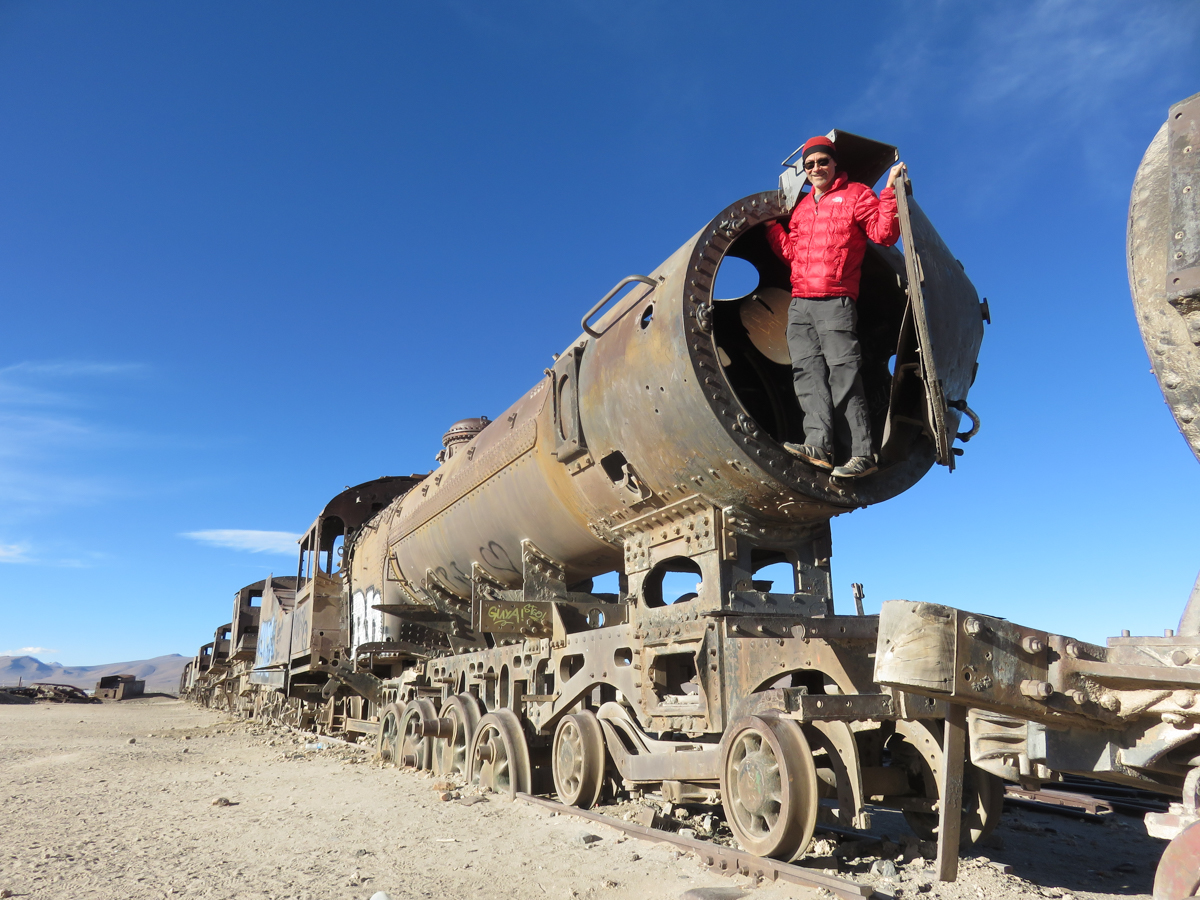
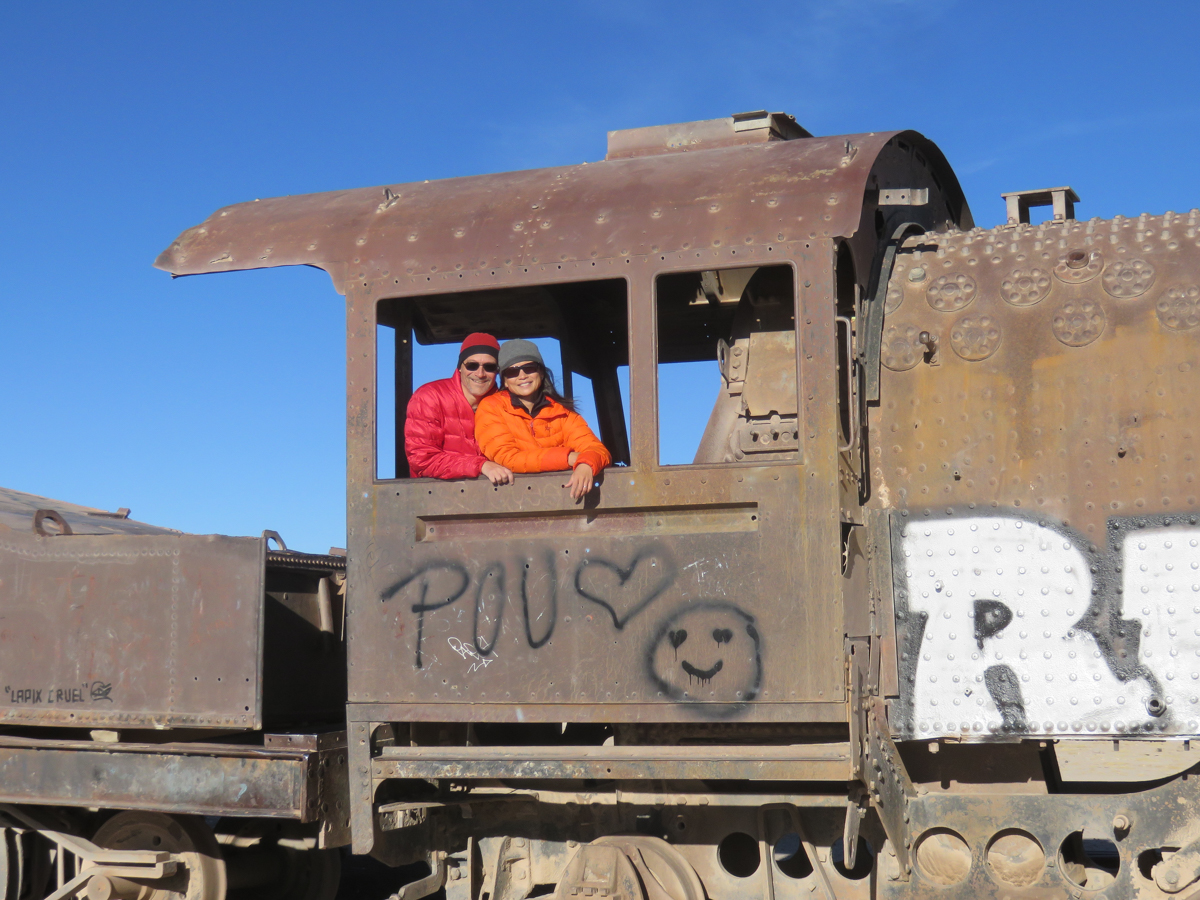
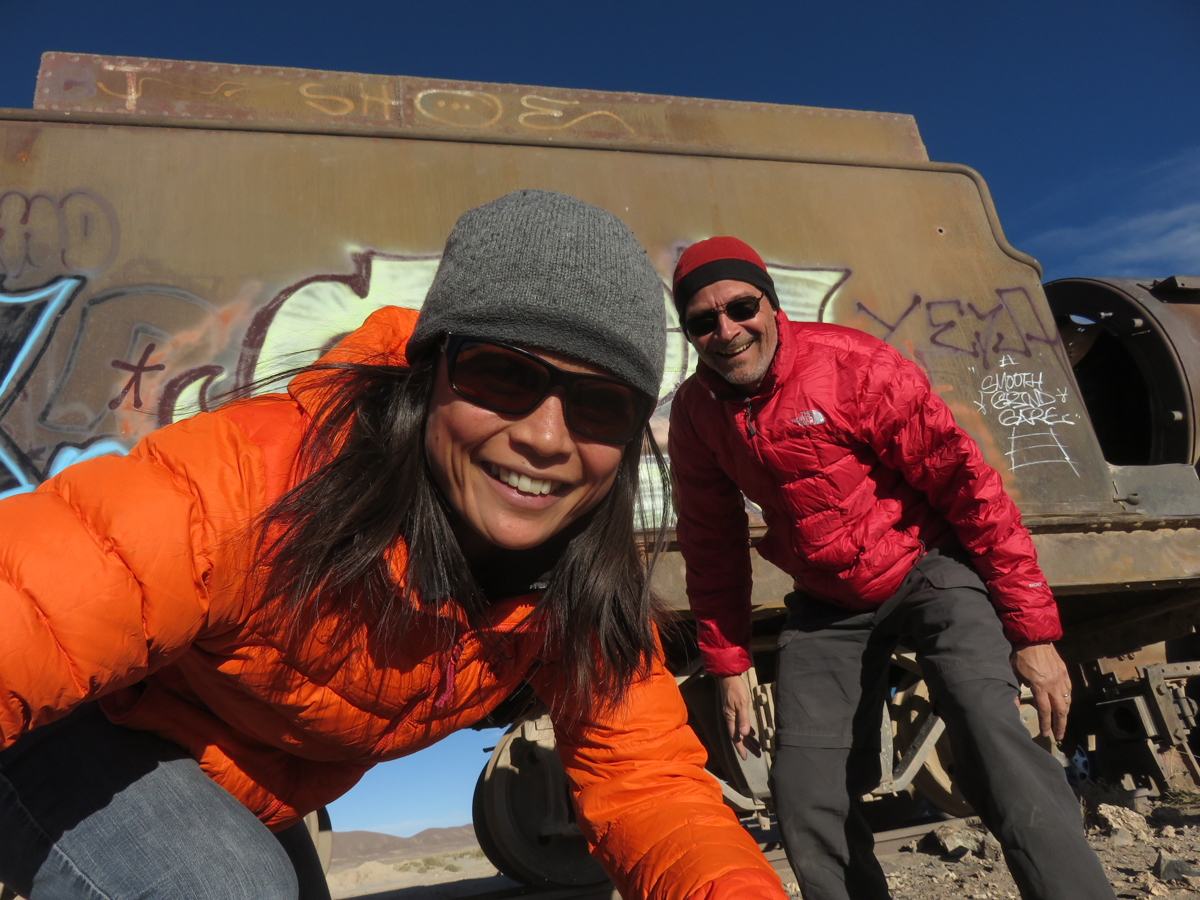
John set up a 10-second timer on his camera for a group photo on one of the train cars. We eventually realized that the camera was accidentally set to take a photo every 10 seconds. After 122 shots, the results were hilarious. Here’s a super fun flip-book video that Paula created from that photo shoot (turn up the sound):
Exploring the Salt Flats
It was overcast on the day we entered Salar de Uyuni. When Lucky left the gravel road and touched wheels to the salt, it was kind of mind-blowing. The salar was so vast and so white, except for the tracks of the Land Cruisers that regularly shuttled tourists back and forth.
We followed the tracks to our first destination, Playa Blanca Salt Hotel. There are several “salt hotels” in and around the salar, and they are all made of salt blocks – including the furniture inside. Near the hotel is a Dakar rally monument, which is also made of salt.
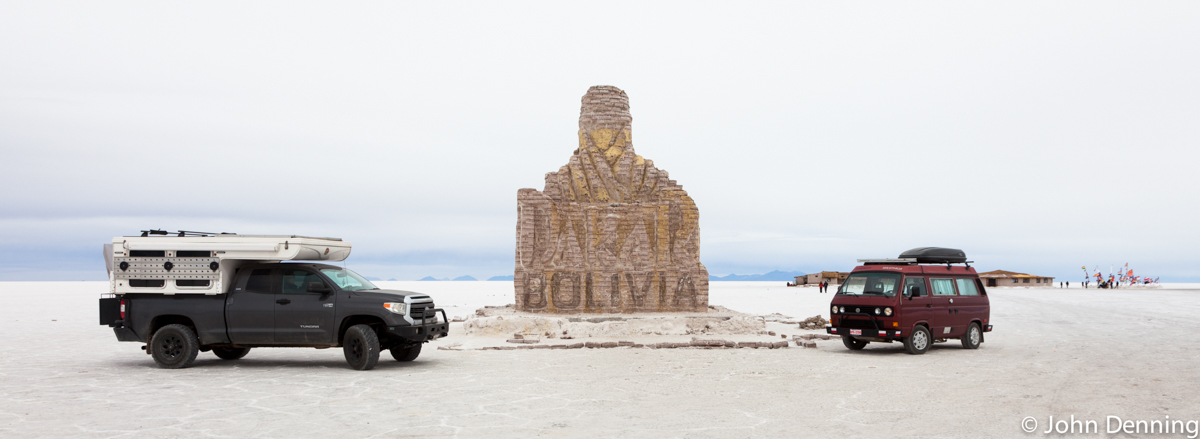
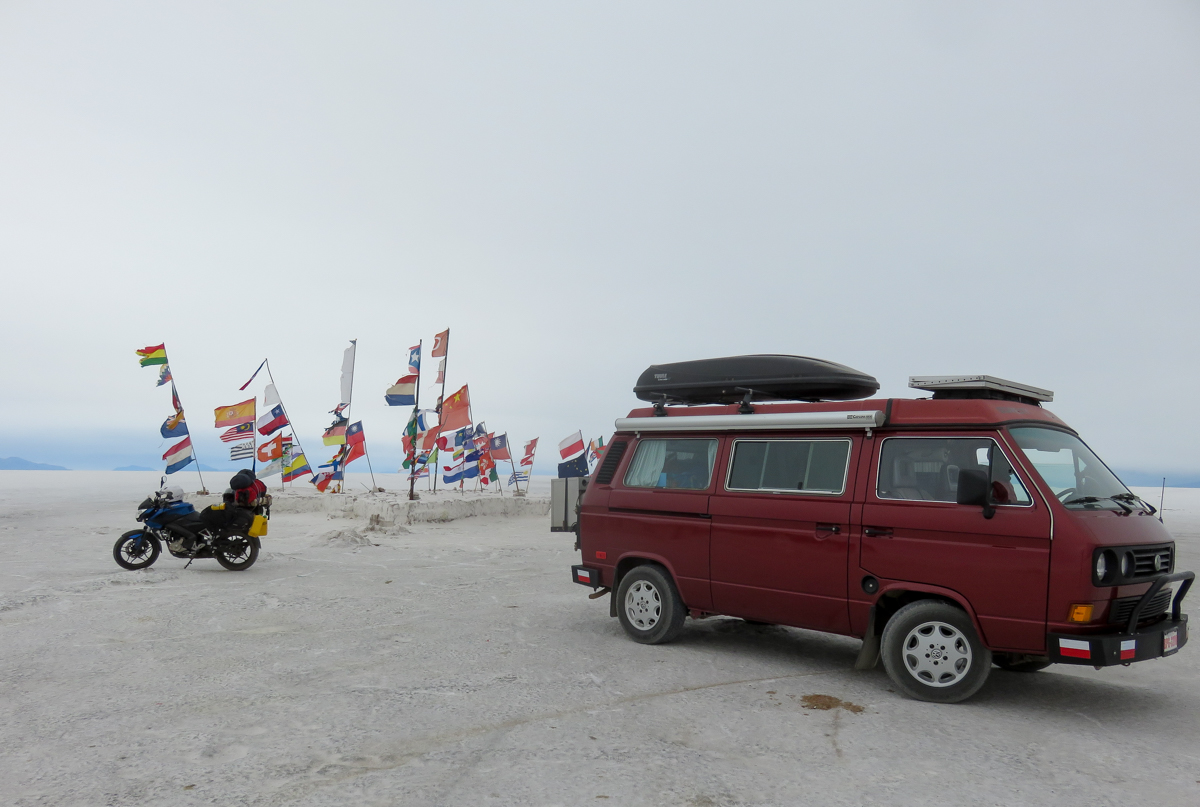
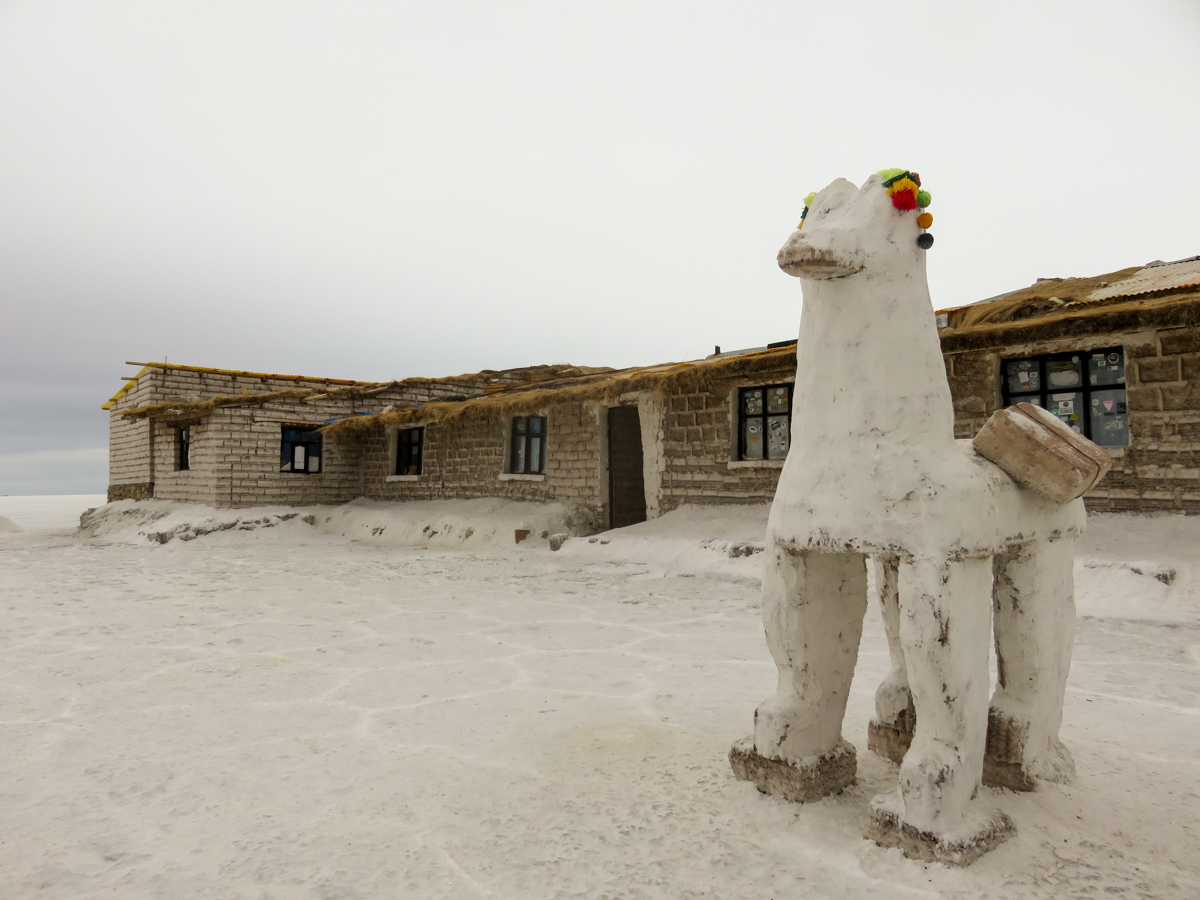
Playa Blanca Salt Hotel
Next stop was Isla Incahuasi, an island in the middle of the salar that was once the top of an ancient volcano submerged underwater. From a distance, the island looked like a tiny little bump on the horizon and it continued to look impossibly tiny even though we were racing towards it at 80 km/hr. This is the trippy thing about driving on the salar: you lose all perspective and objects can appear closer or farther than they really are.
We hiked to the top of Isla Incahuasi, being careful not to impale ourselves on the monstrous cacti that covered the island. Such a surreal place.
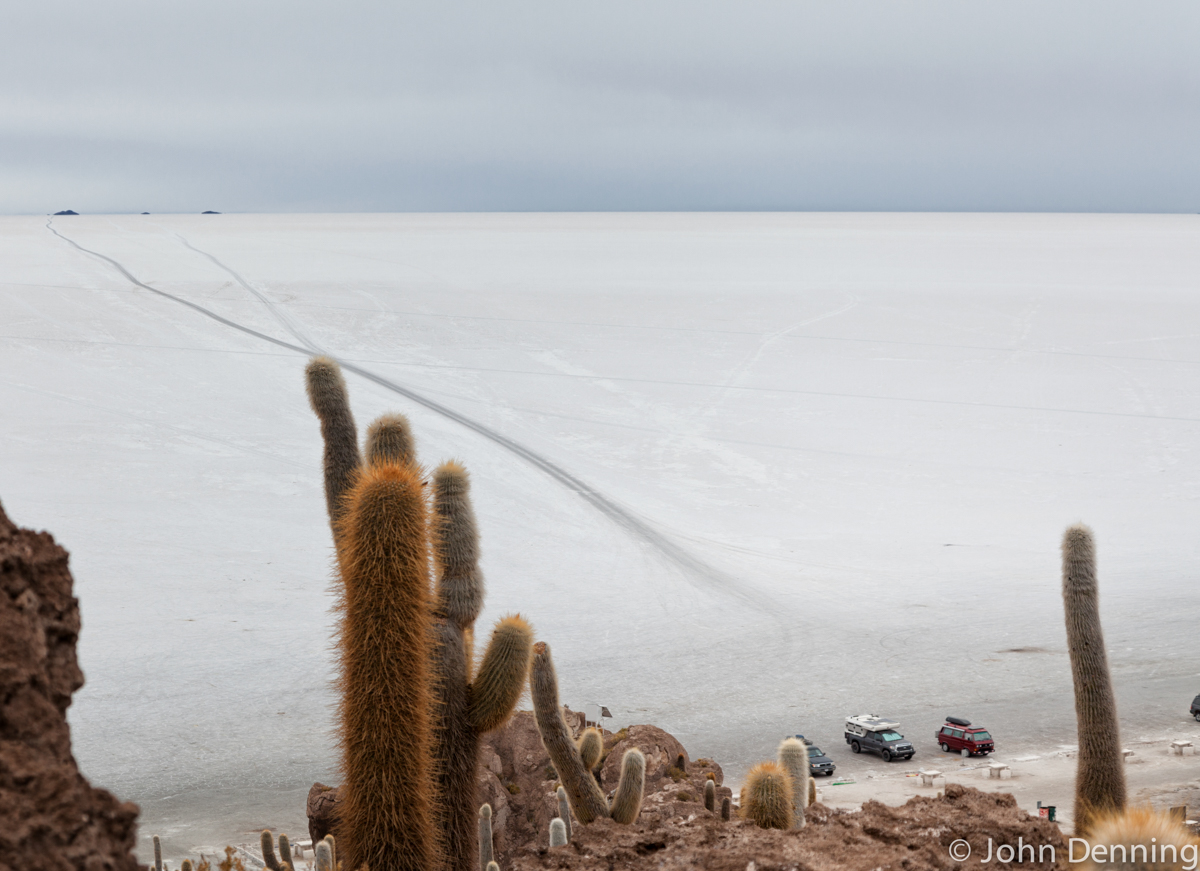
Picking a camp spot on the salar was no simple matter. We wanted to be close to an island to protect from the wind (LoJo’s canvas pop-top acts like a sail and John and Paula would sway in their camper like a ship at sea). However, we didn’t want to camp in the island’s designated parking area because there was too much traffic. We could move to the backside of the island, but we couldn’t park too close to the edge because the area where salt meets rock is a common place for vehicles to bust through. After much deliberation, we picked a spot about 25 m away from Isla Incahuasi.
It was another freezing night in our rigs, but the sun came out the next morning to warm us up.
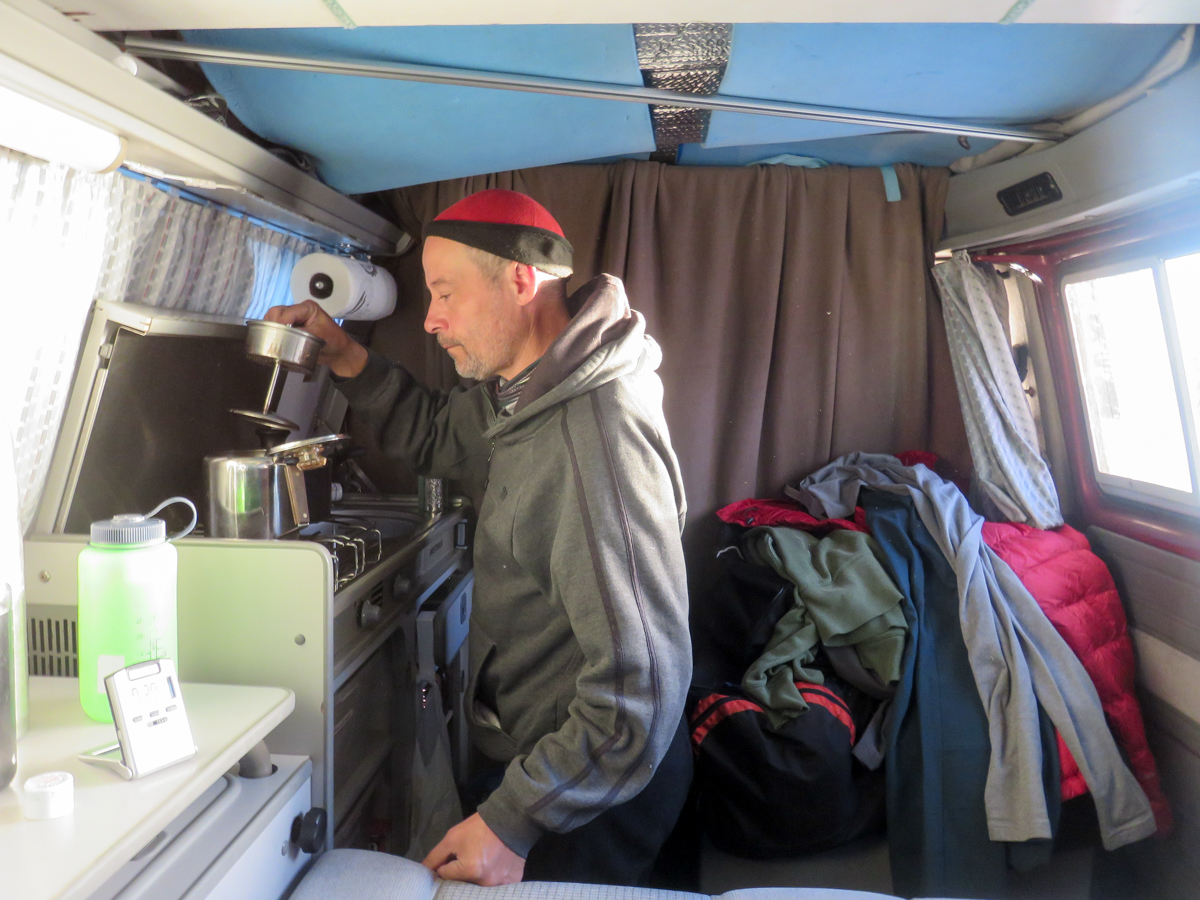
Making the morning coffee
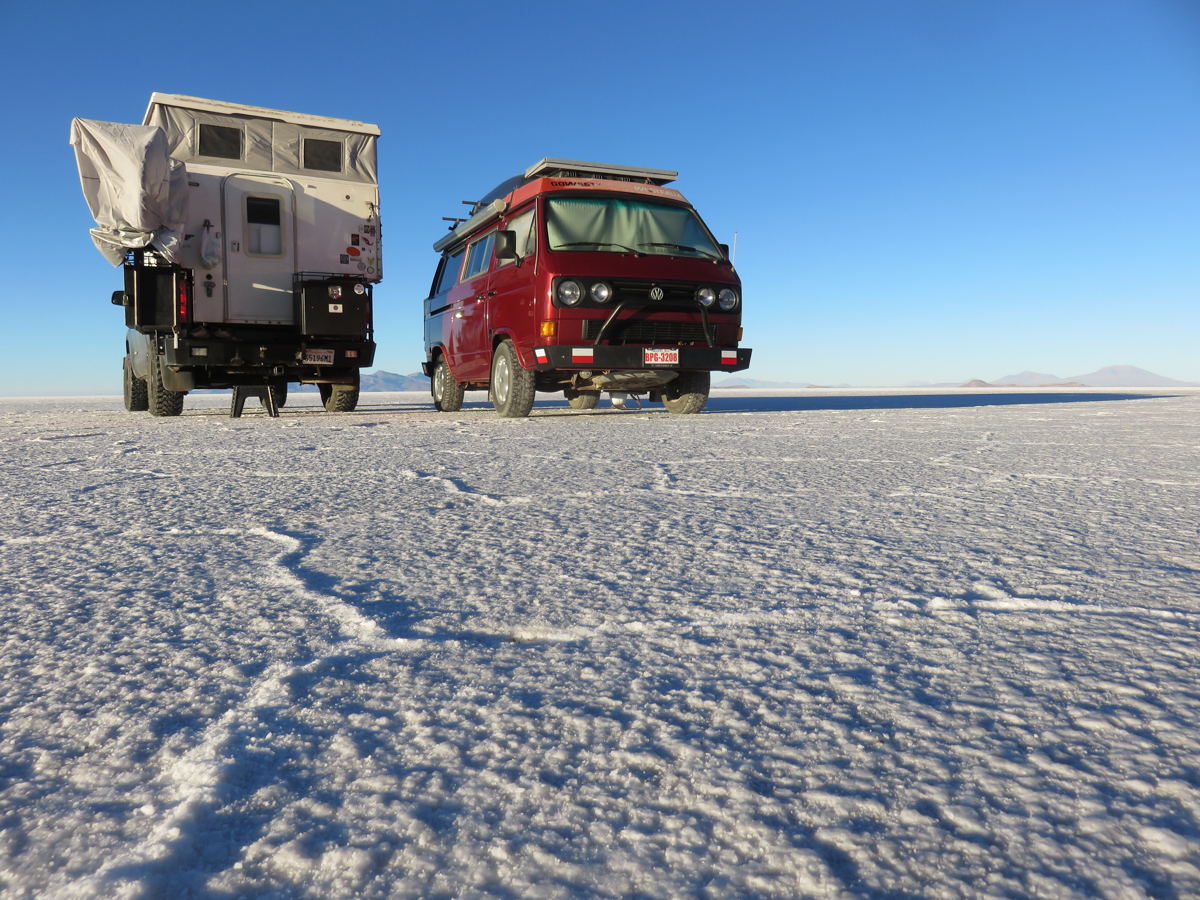
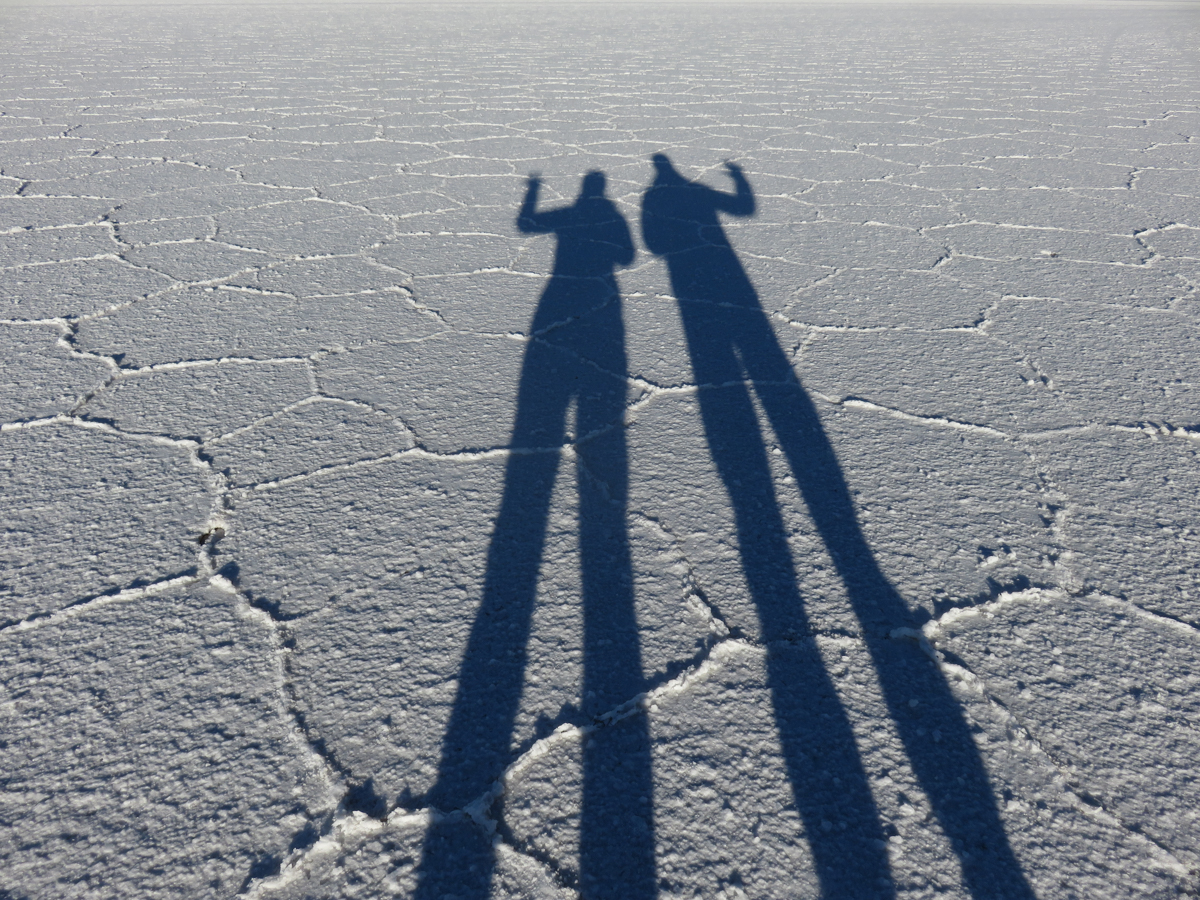
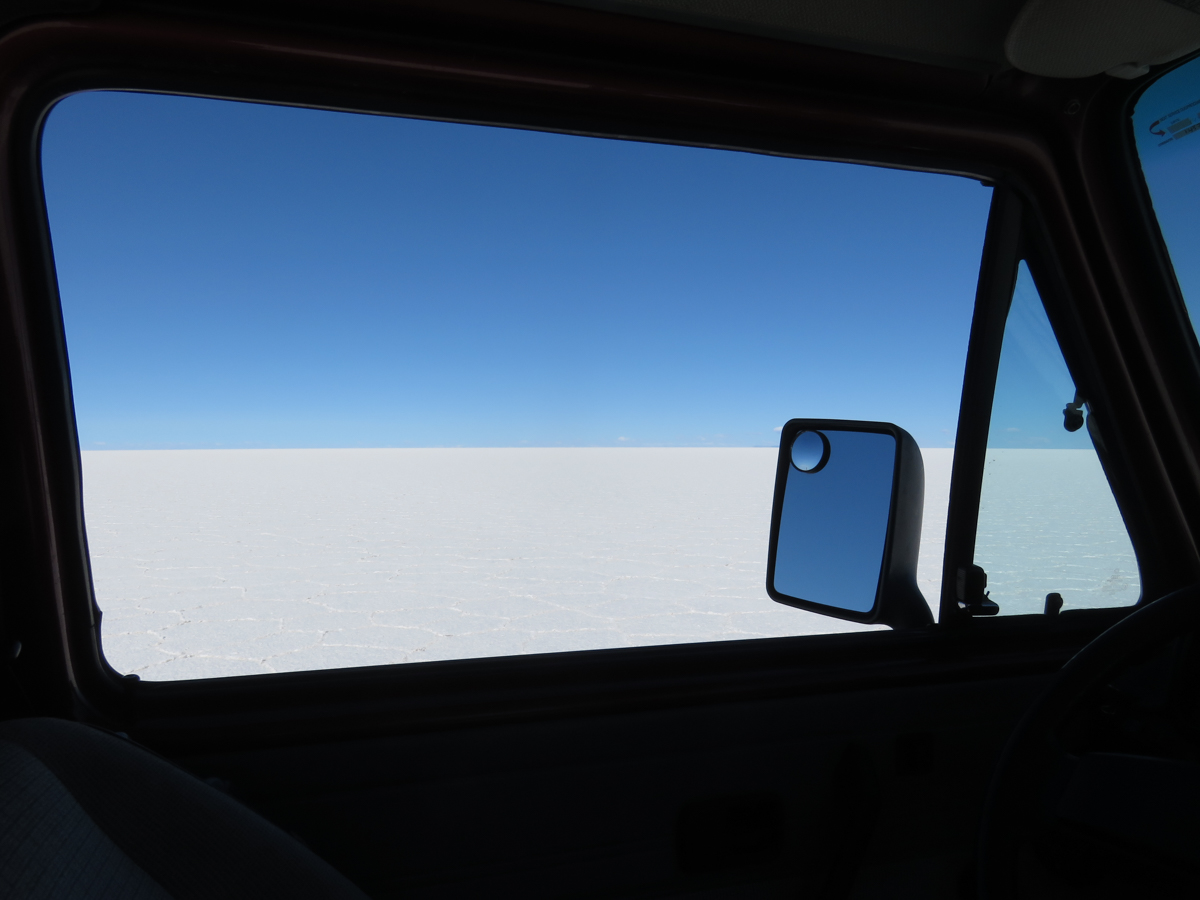
The sky was so unrealistically clear and the ground looked so ridiculously uniform that I felt like I was in a weird dream. Surely I would wake up and find myself in some hotel parking lot. John and Paula can corroborate the fact that I was really there. Here’s a photo to prove it:
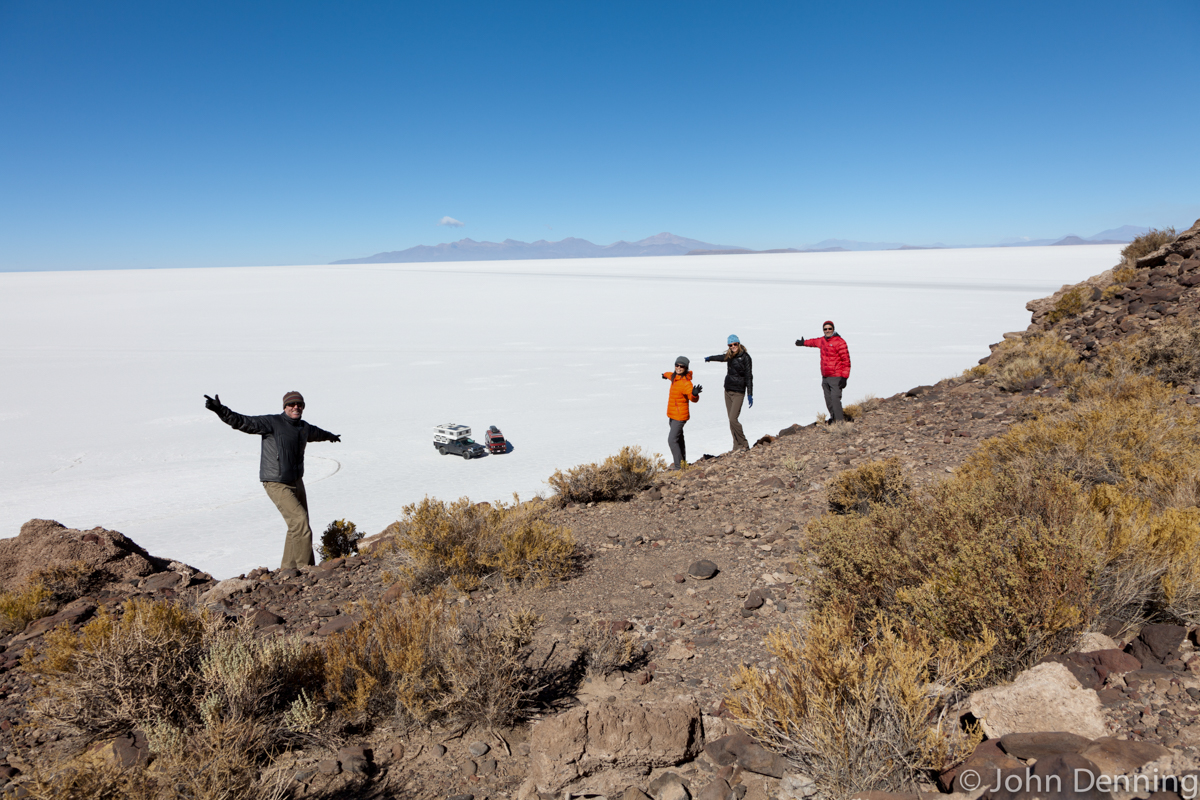
The More the Merrier
The mission for our second day on the salar was to drive to Isla Pescado, another cactus-covered island in the middle of nowhere. We heard that we could hike to an interesting cave there, so we packed up and headed out.
While hiking on Isla Pescado, we saw some familiar faces heading toward us. It was our Westy mate Ben (from New Mexico), his dog Lorenzo, our fellow Canadian Tanya (from Ontario), and her boyfriend Philipp (from Germany). Gregor and I originally met them all in Peru and we kept bumping into them ever since. We all caught up with each other as we hiked to the island’s cave.
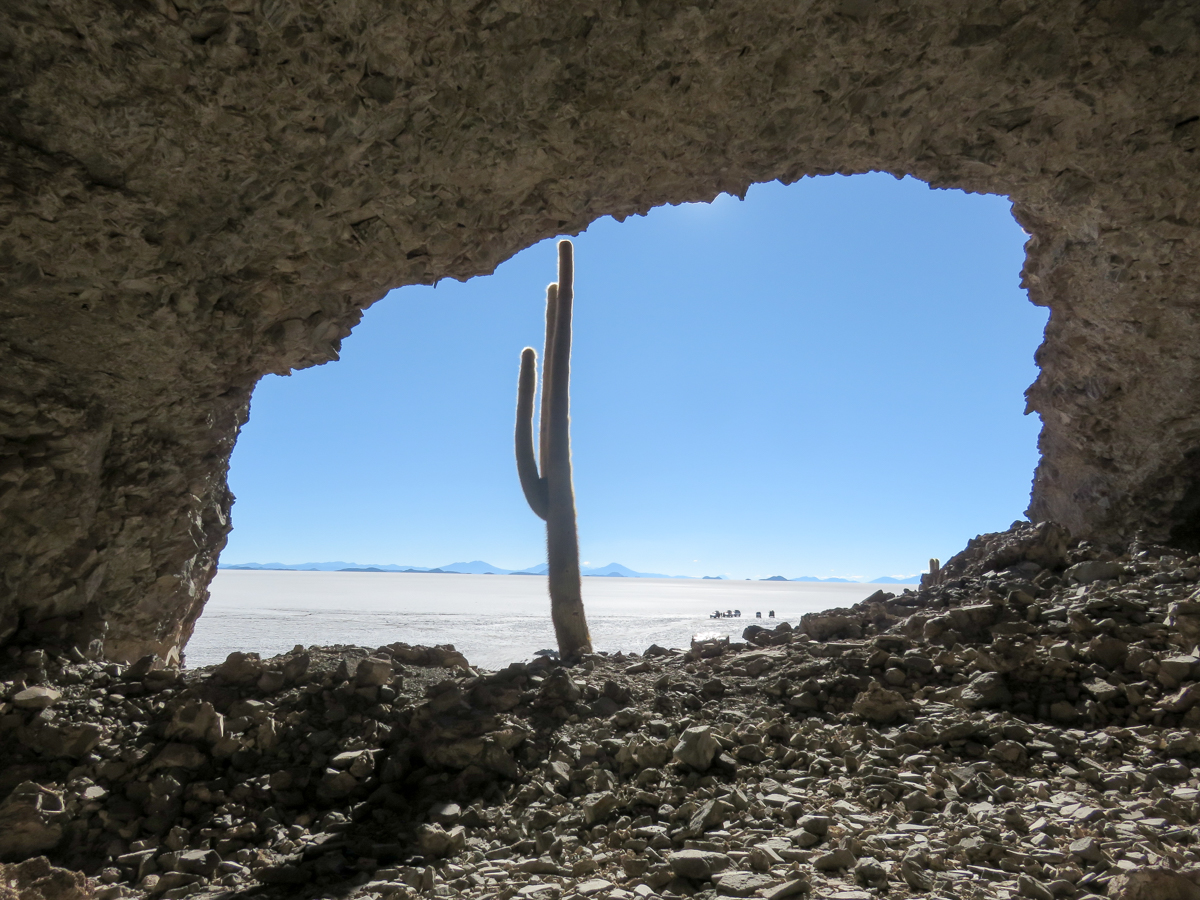
The rigs:
‘Gulliver’ – Mitsubishi Bürow Camper (Tanya and Philipp, Canada)
‘LoJo’ – Toyota 4WD Tundra with Hallmark Camper (John and Paula, USA)
‘Lucky’ – VW Westfalia Vanagon Camper (Janice and Gregor, Canada)
‘Wally’ – VW Westfalia Vanagon Weekender (Ben and Lorenzo, USA)
That night, we all camped together smack-dab in the middle of the salt flats. The boys arranged our rigs in a square formation to create a wind-protected area for cooking and socializing. It was great to be on the salar with friends.
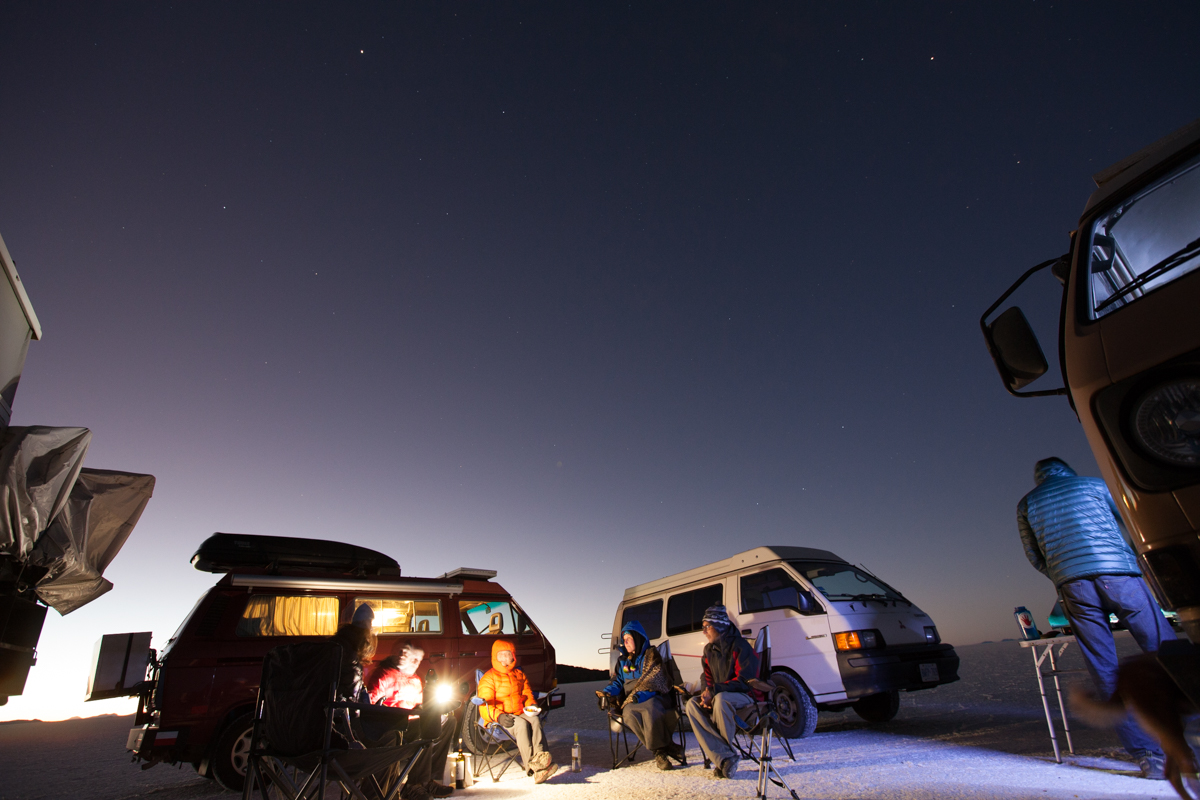
Photo by John
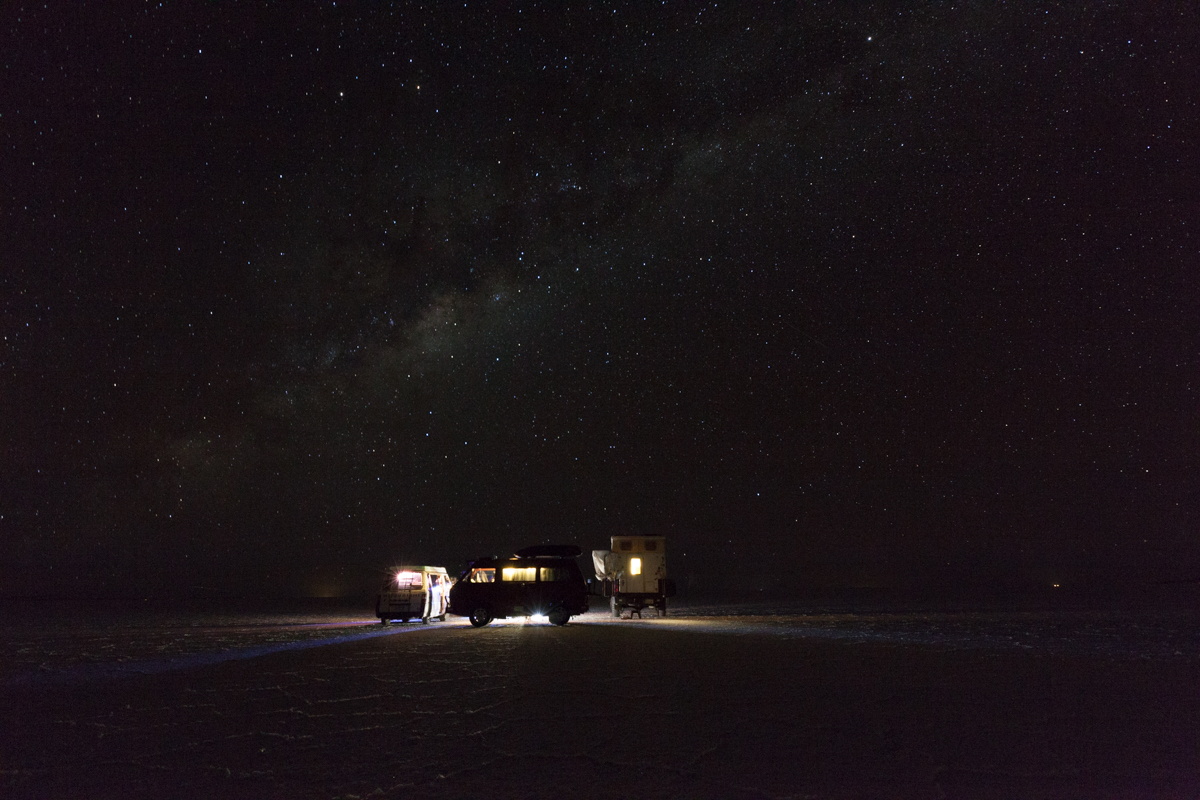
Photo by John
Gazing at the stars in the middle of the salar was truly magical. With no light pollution, the night sky shimmered with thousands of sparkling gems and streaks of pixie dust. We were all just tiny little creatures in this great big universe.
Shifting Perspective
On sunny days, the Salar de Uyuni provides expansive views and lighting conditions that can’t be reproduced anywhere else. With dazzling blue sky above and a hypnotic sea of white below, it’s perfect for taking photos with interesting perspectives.
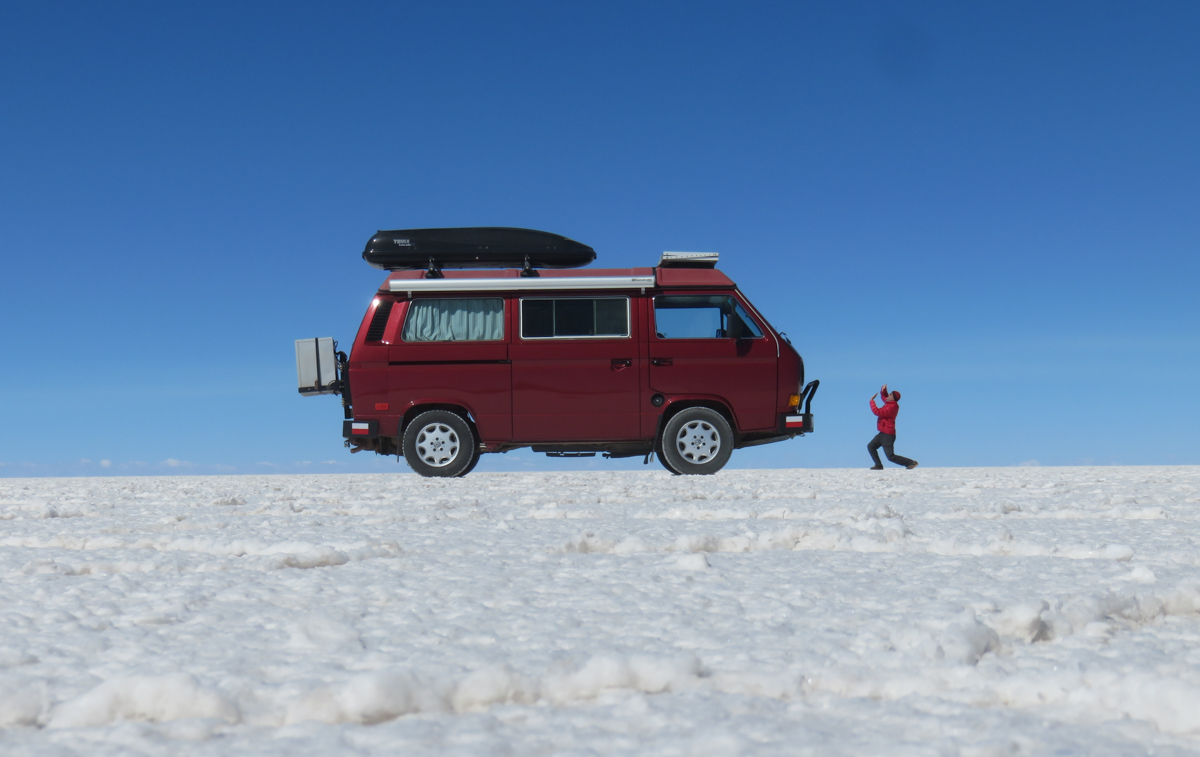
Gregor’s Birthday
After three days on the salar, we returned to Uyuni with John and Paula to celebrate Gregor’s 52nd birthday at Minuteman Pizza. Gregor has celebrated two birthdays on our Pan-American road trip and both times were with John and Paula (the first was in Lake Atitlan, Guatemala). We were so happy that our friends were there for his special day and we were grateful that we got to share the salar experience with them.
For Gregor’s birthday, John and Paula gave him a necklace with a chakana, an Andean cross. The cross has four points representing a compass and in between each point are three steps representing life in the heavens, the Earth, and the underworld.
Our friends first learned about the Andean cross when they visited Isla del Sol on Lake Titicaca (you can read their blog post here). The cross symbolizes the Andean belief that Pacha Mama (Mother Earth) is the provider of life-sustaining gifts. Salar de Uyuni isn’t capable of sustaining many life forms due to its extreme dryness, but it’s certainly far from lifeless. It’s a natural wonder that makes you feel like you’re in the middle of nowhere, everywhere – a sensation that can humble even the biggest of egos. I like to think that it’s Pacha Mama’s way of saying: “There was water here once and now it’s gone, so take a look around and remember that I’m still here.”

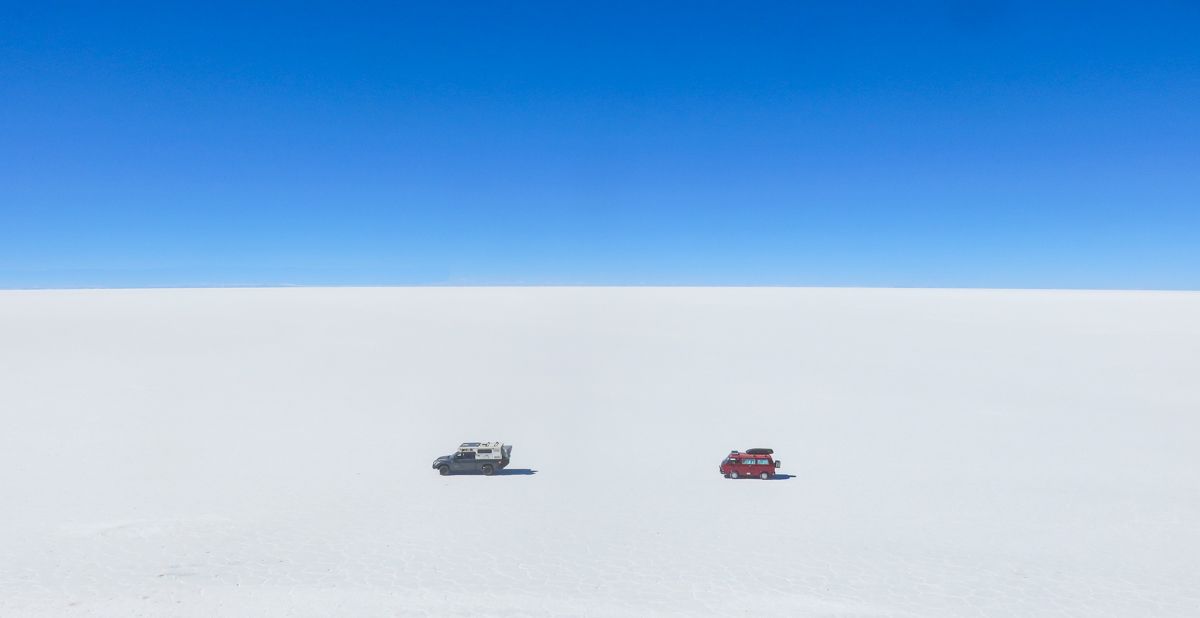

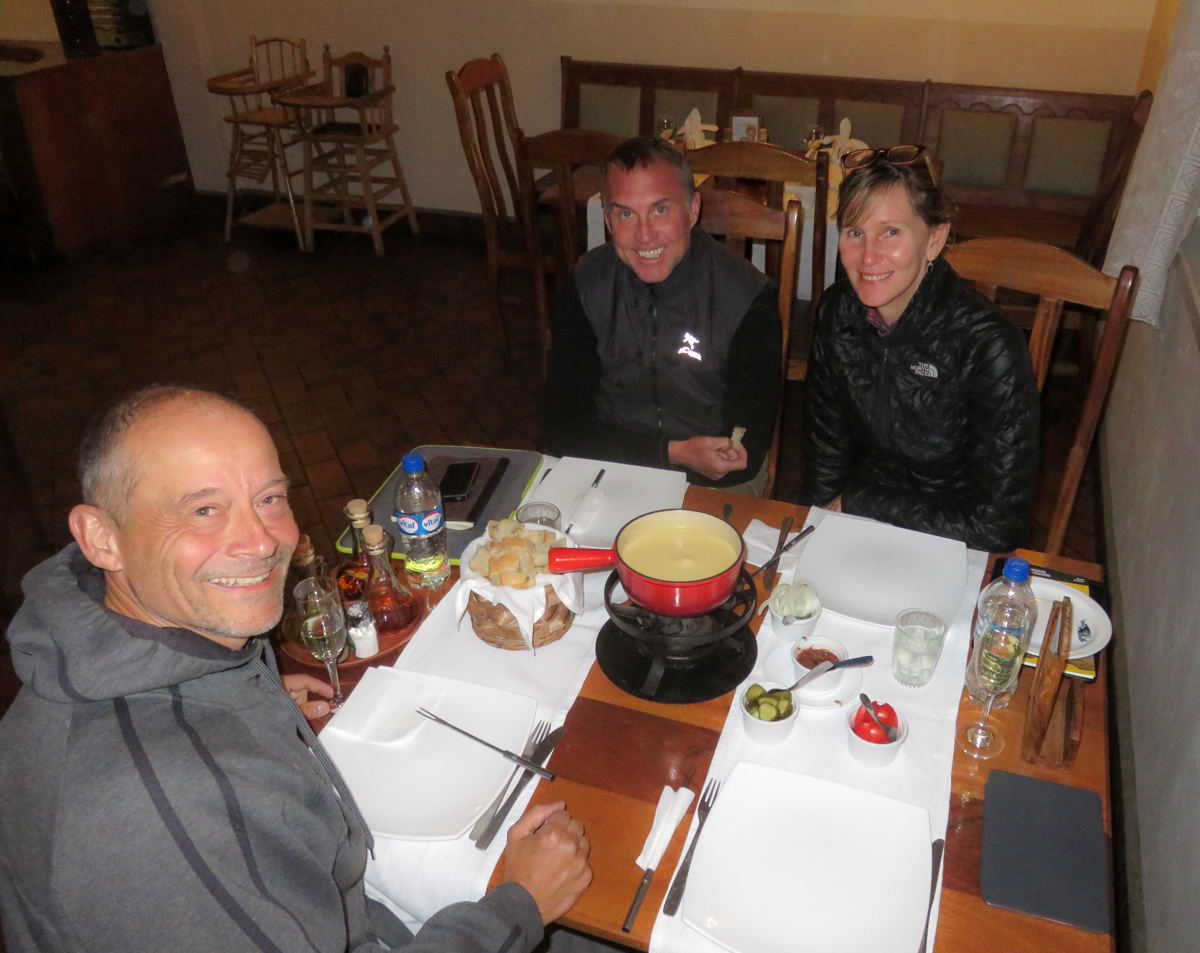
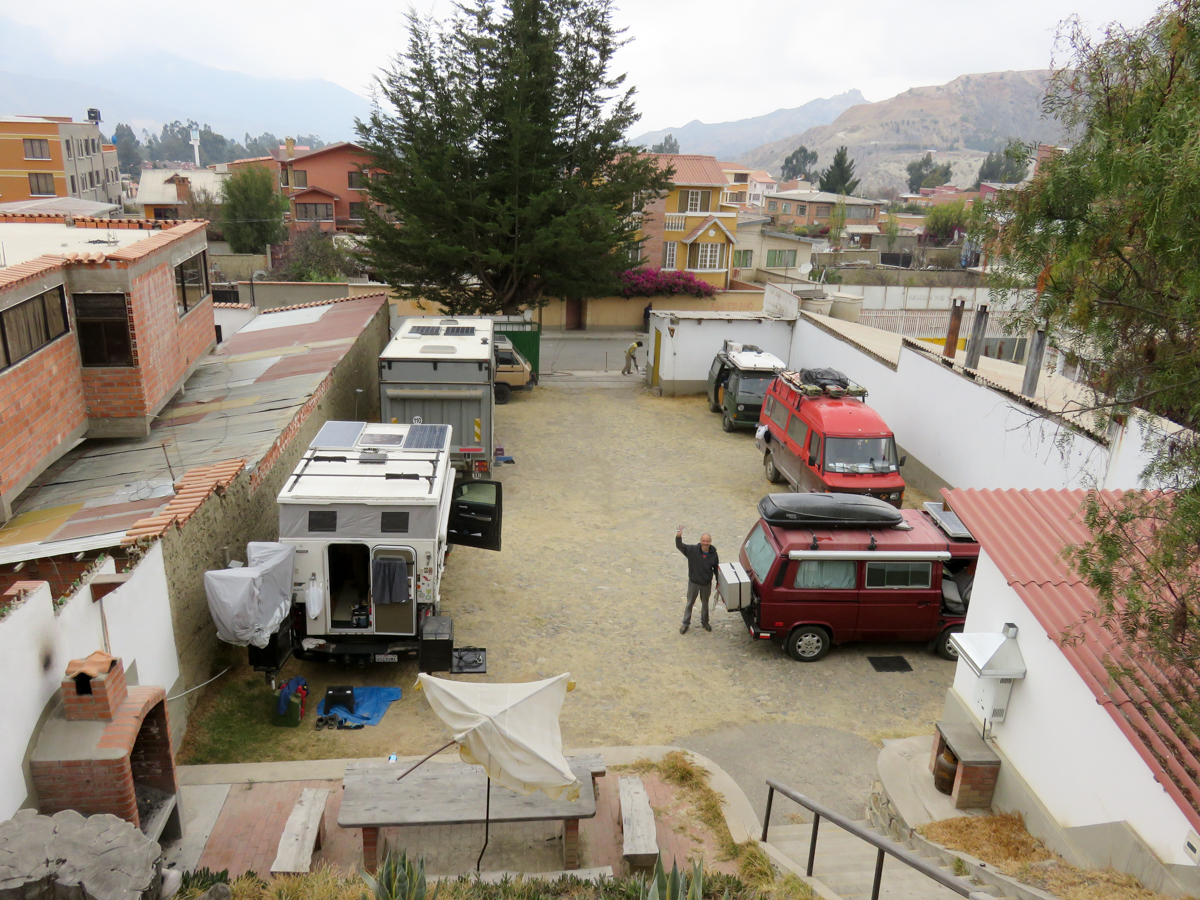
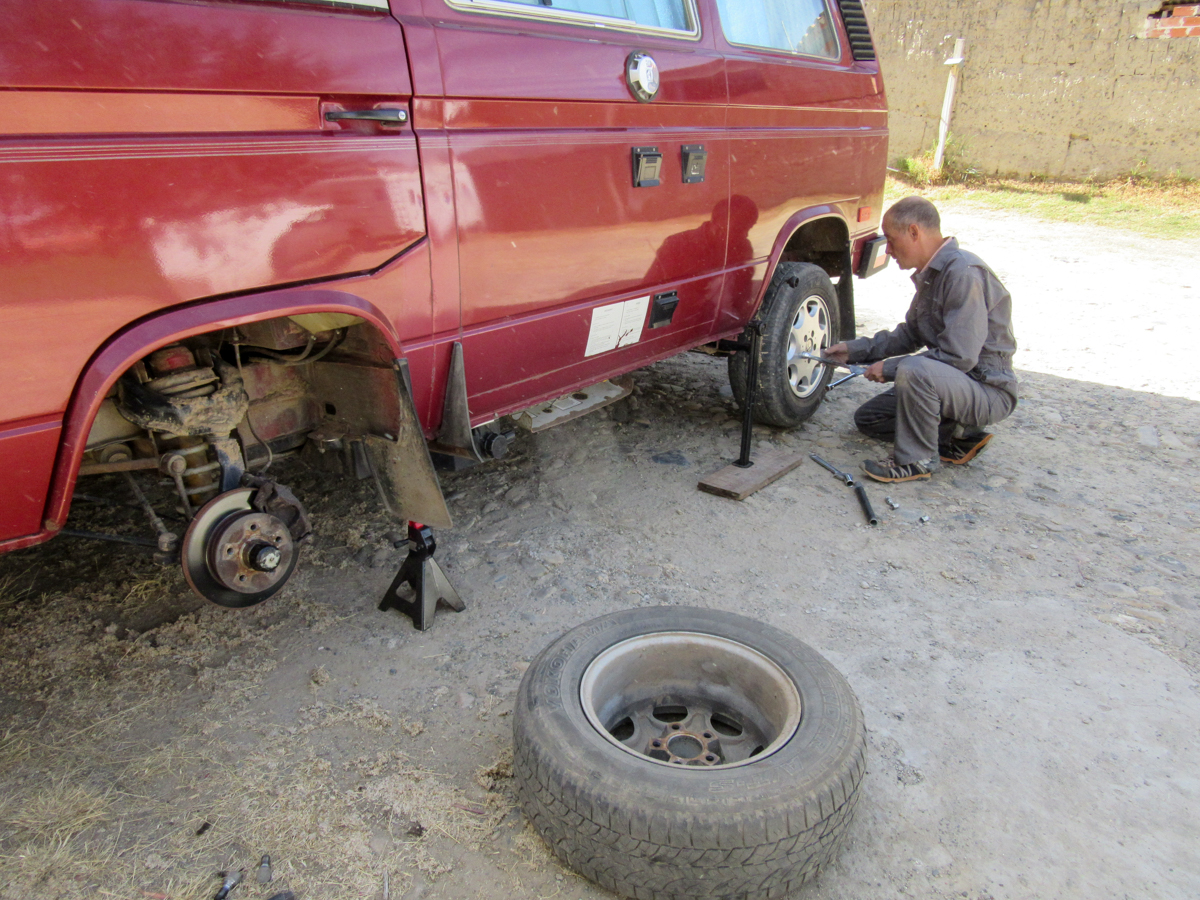
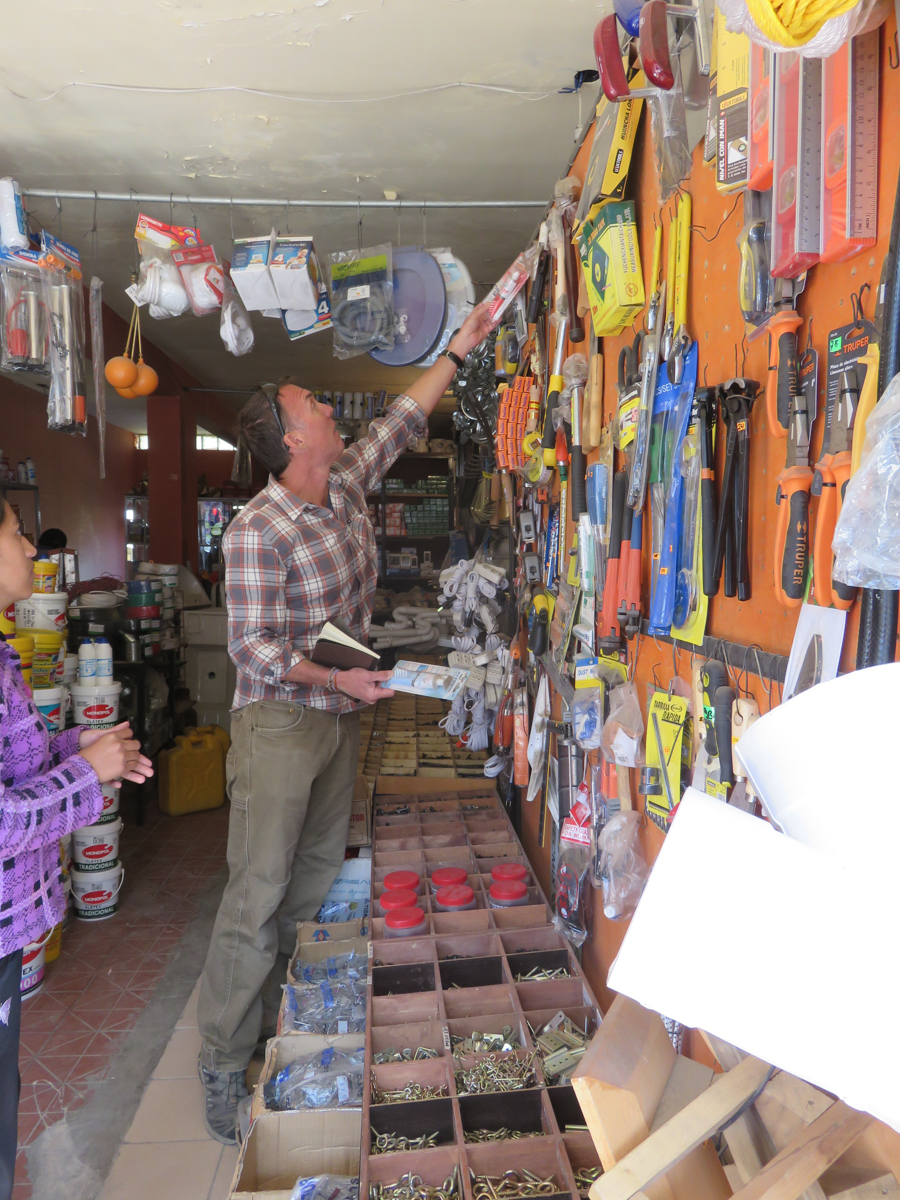
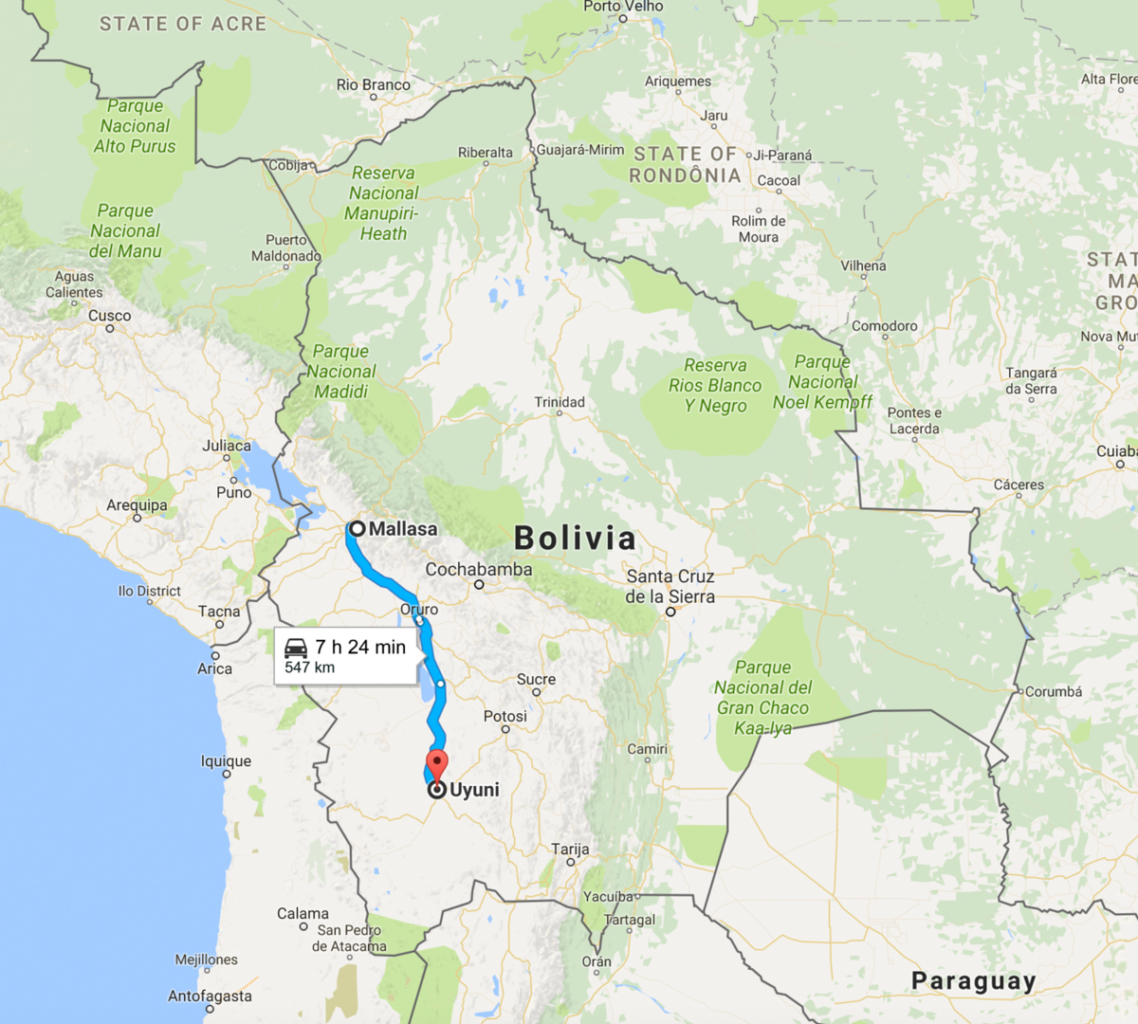
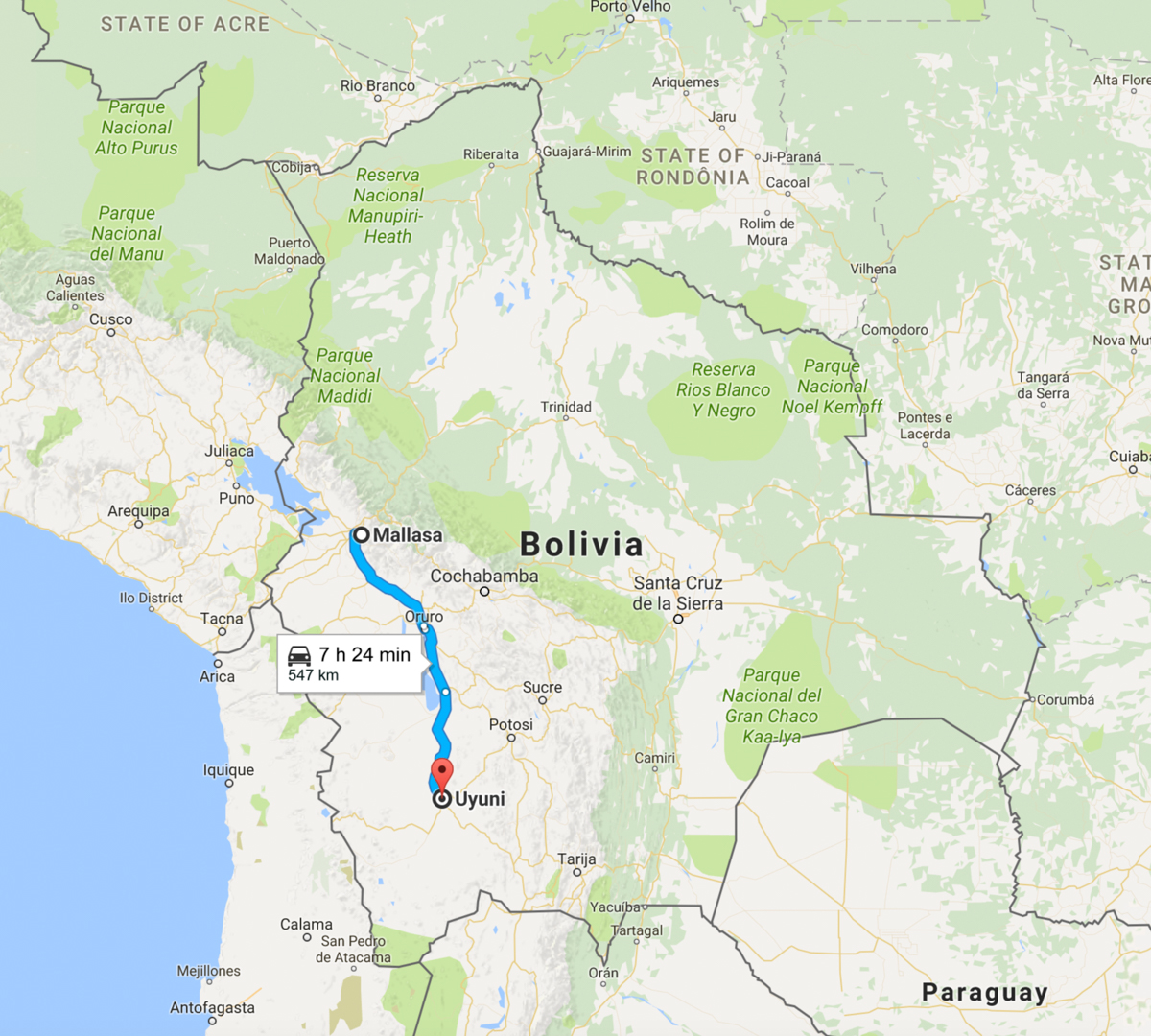
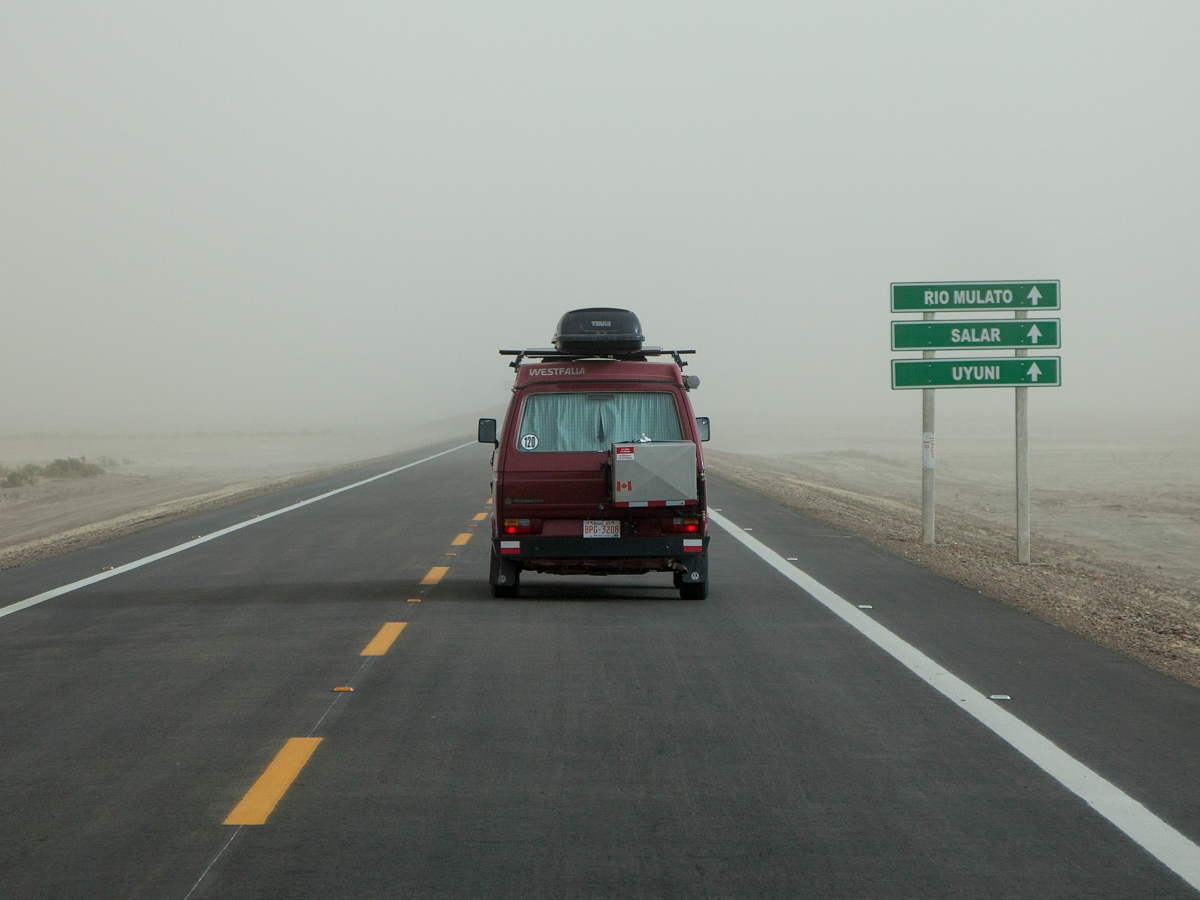
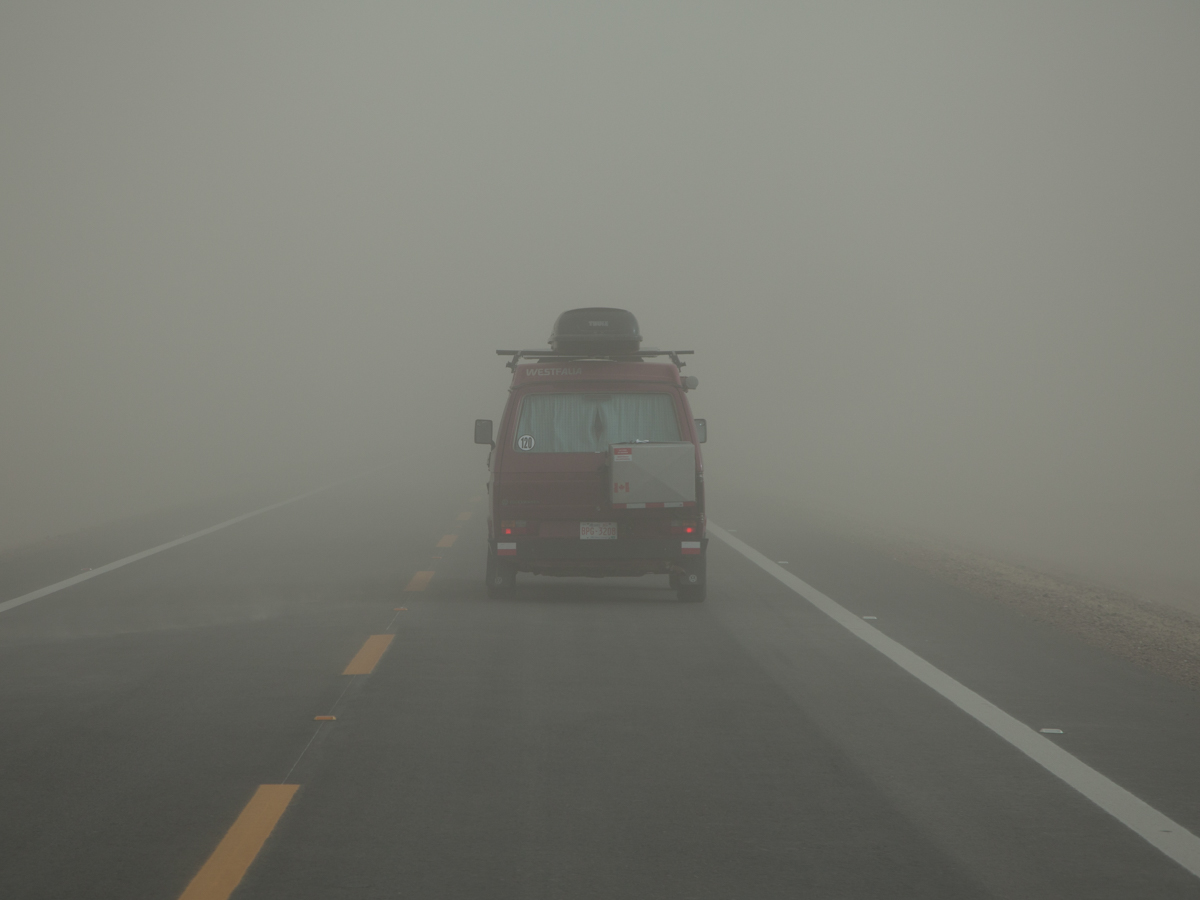
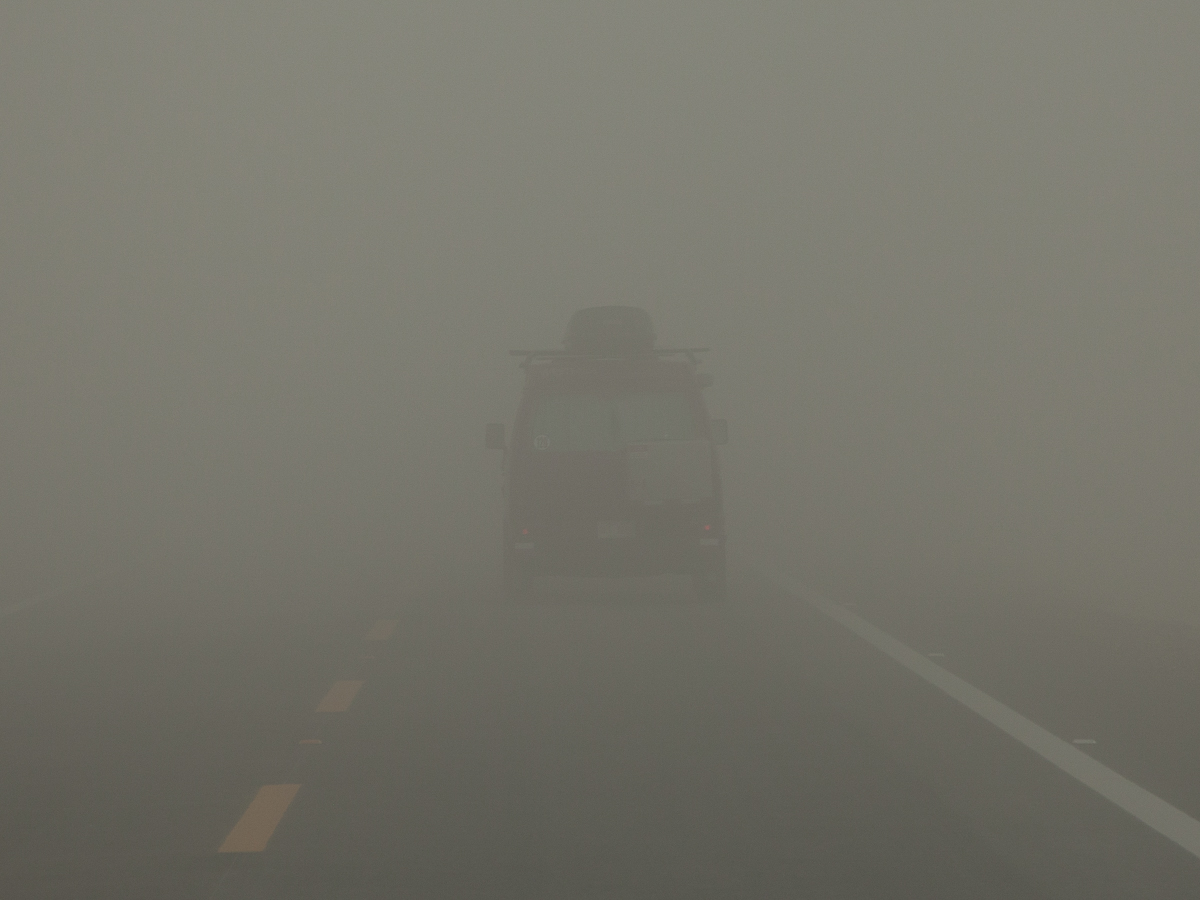
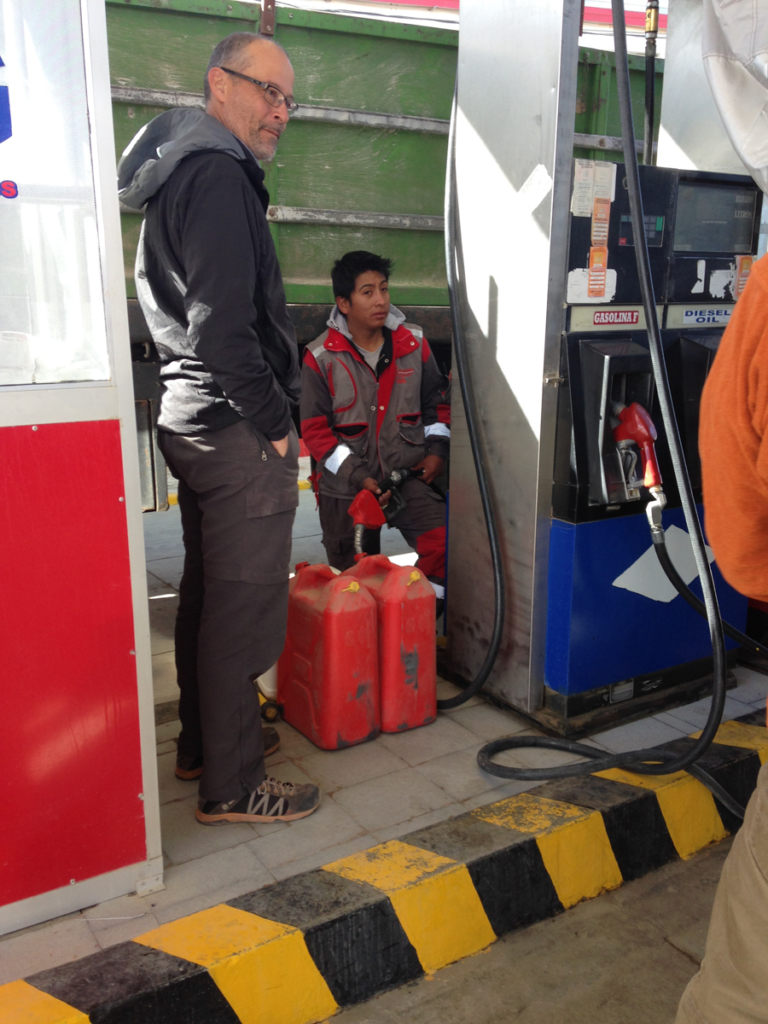

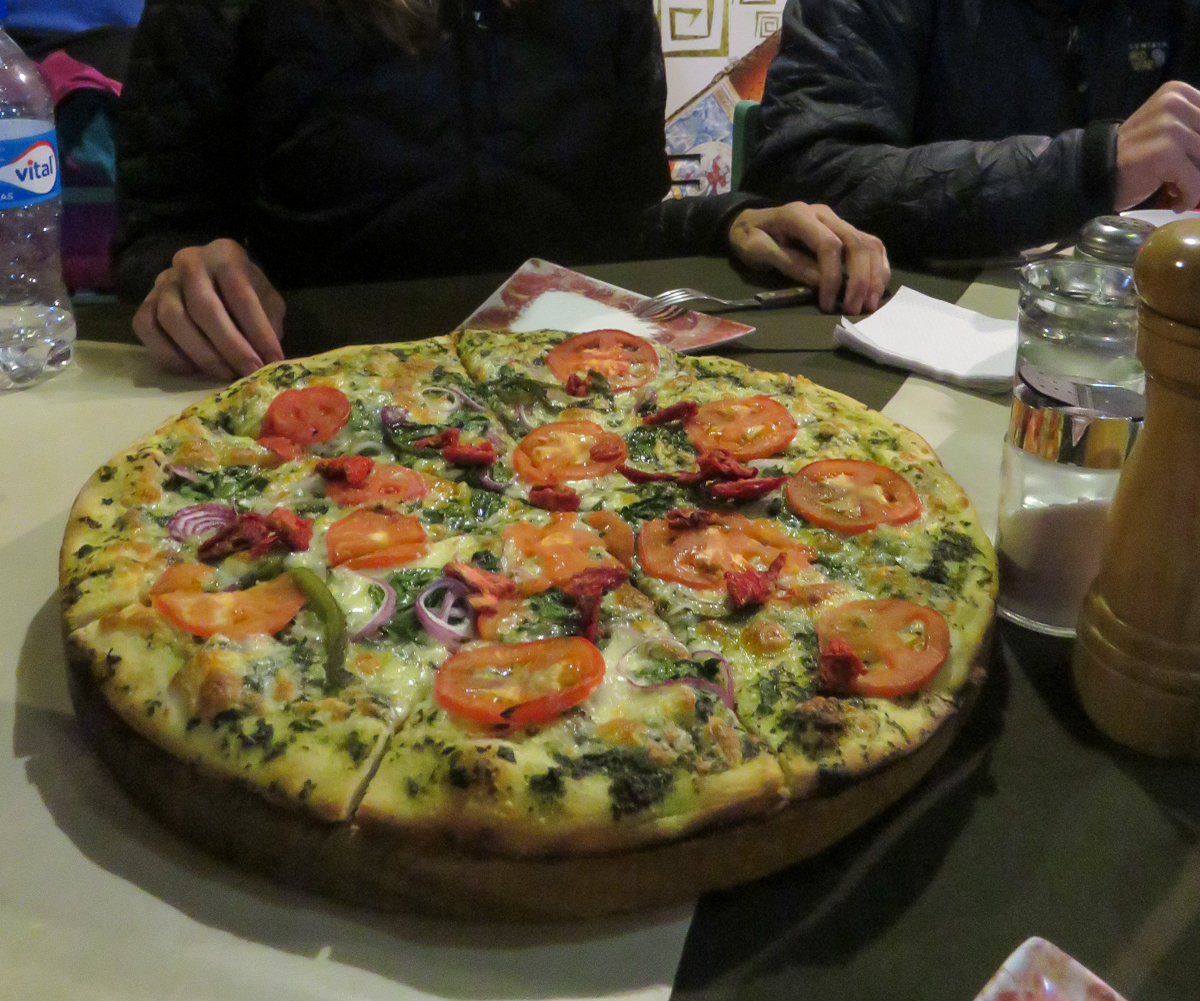
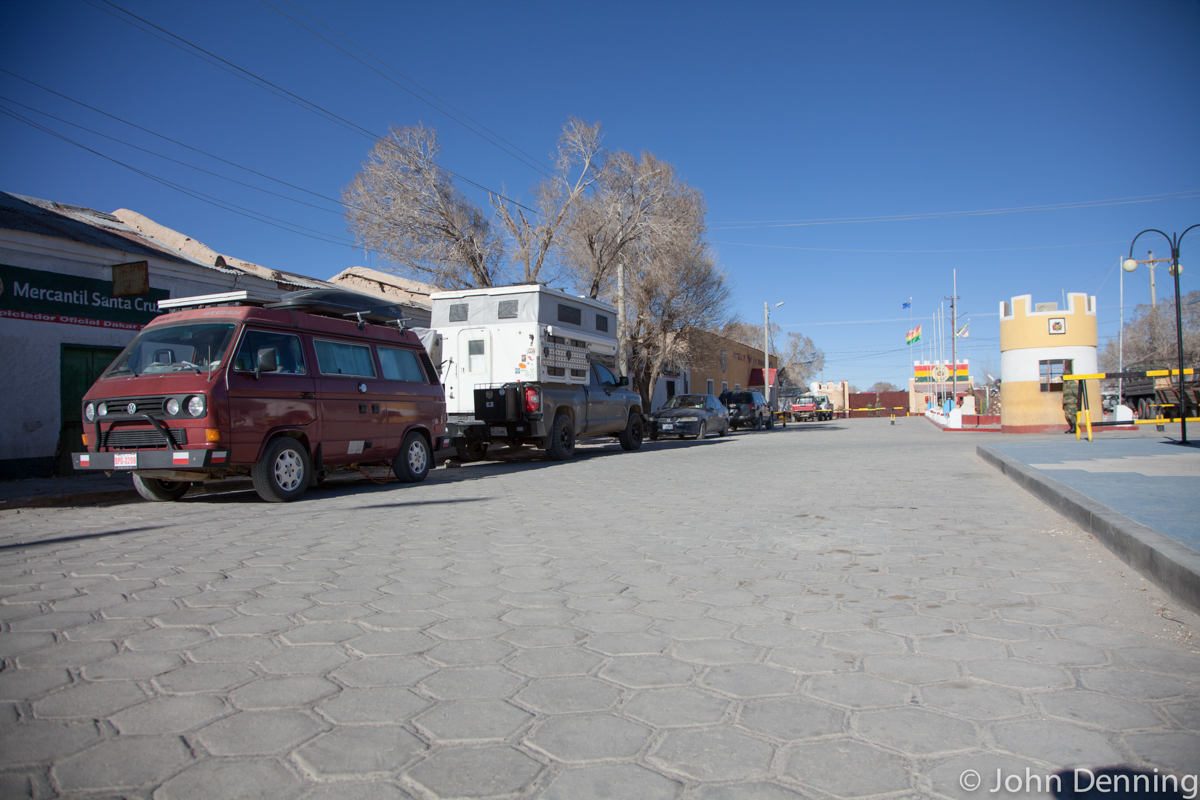
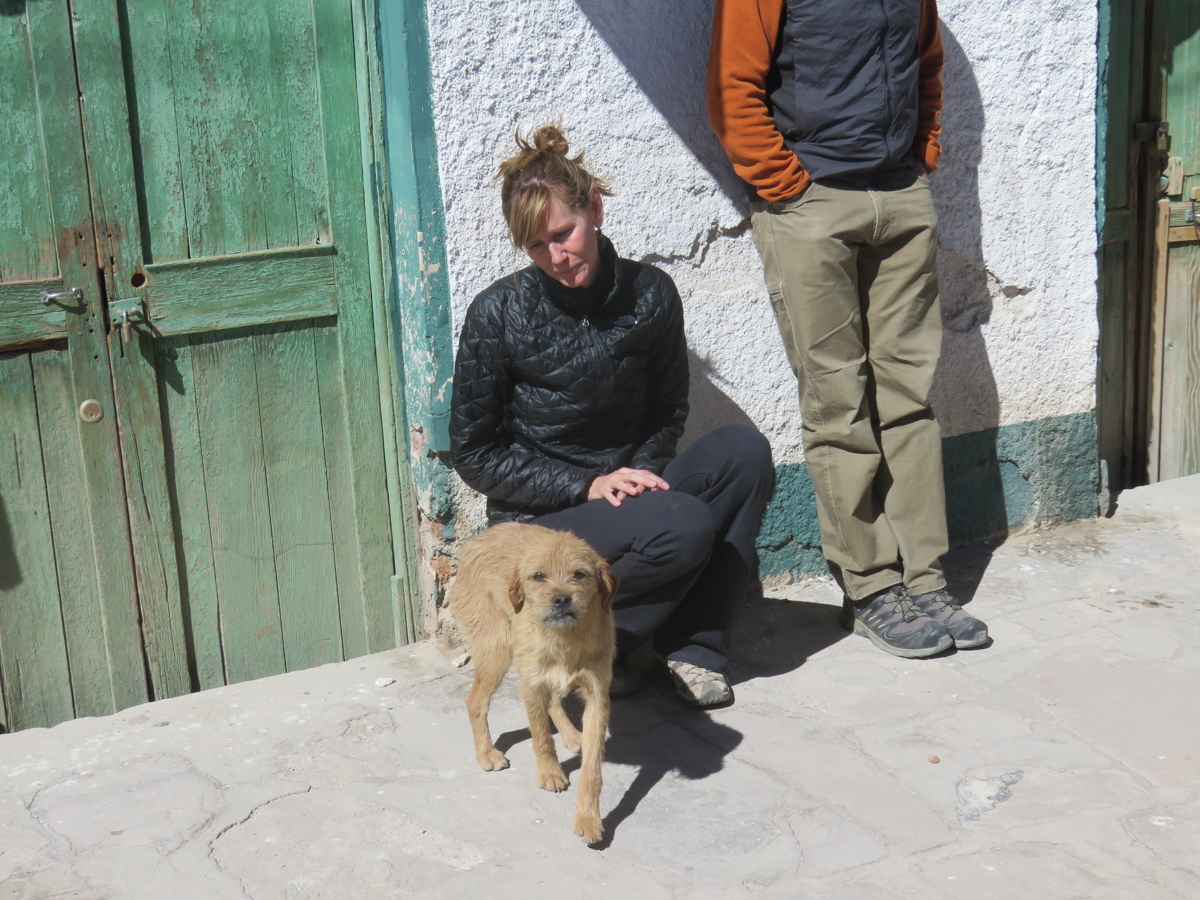
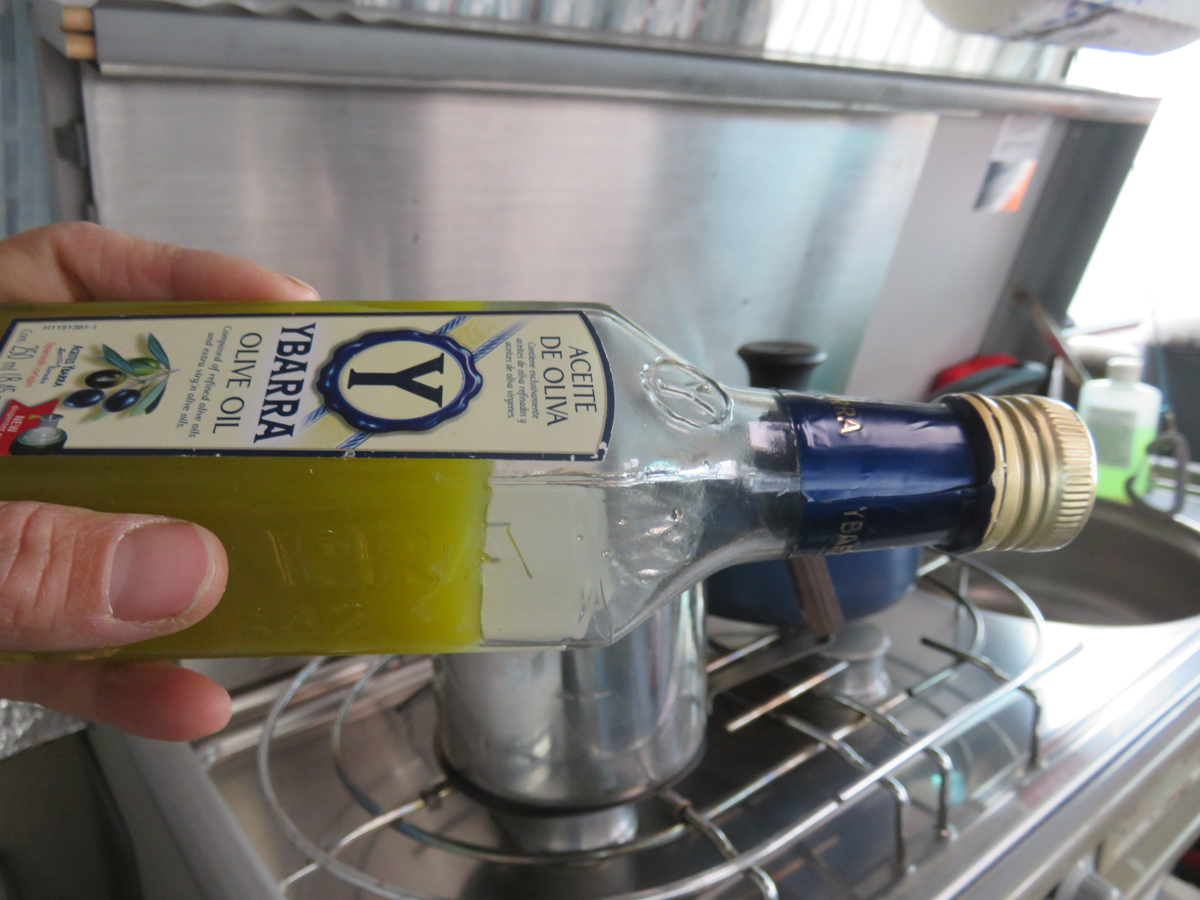
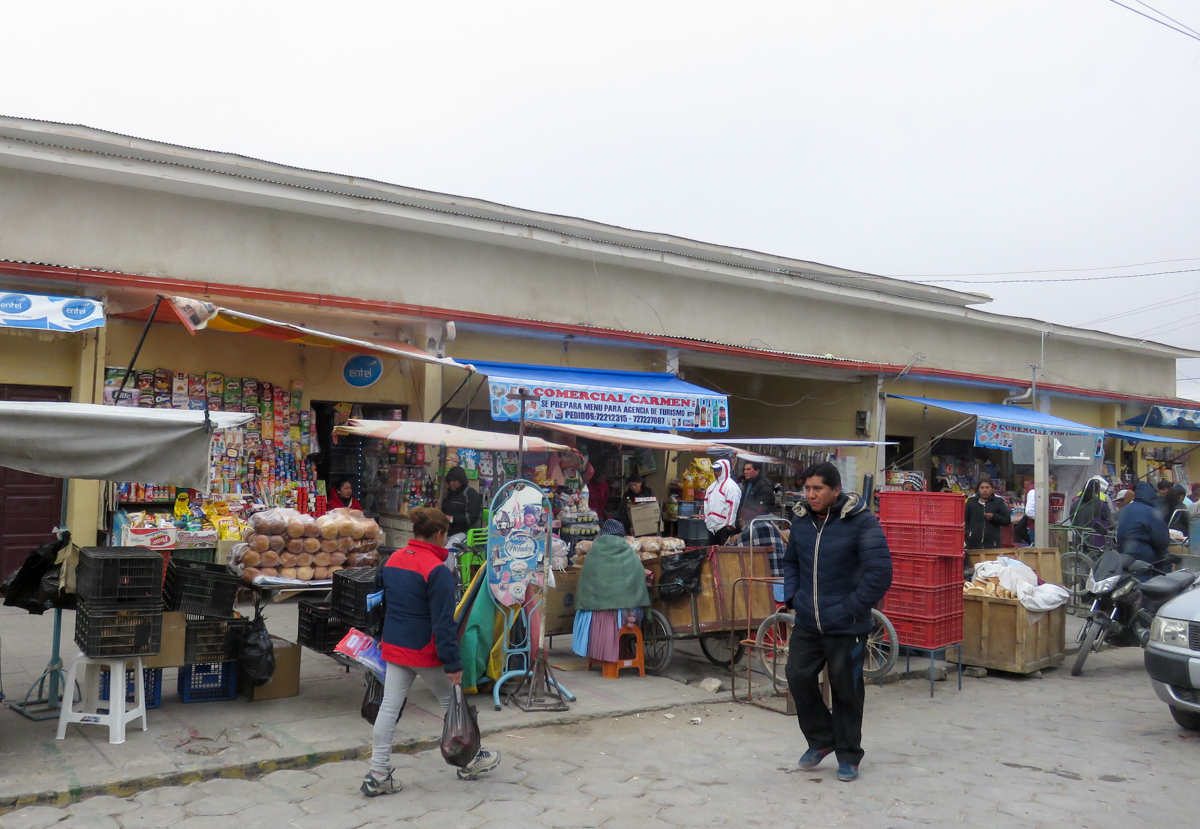
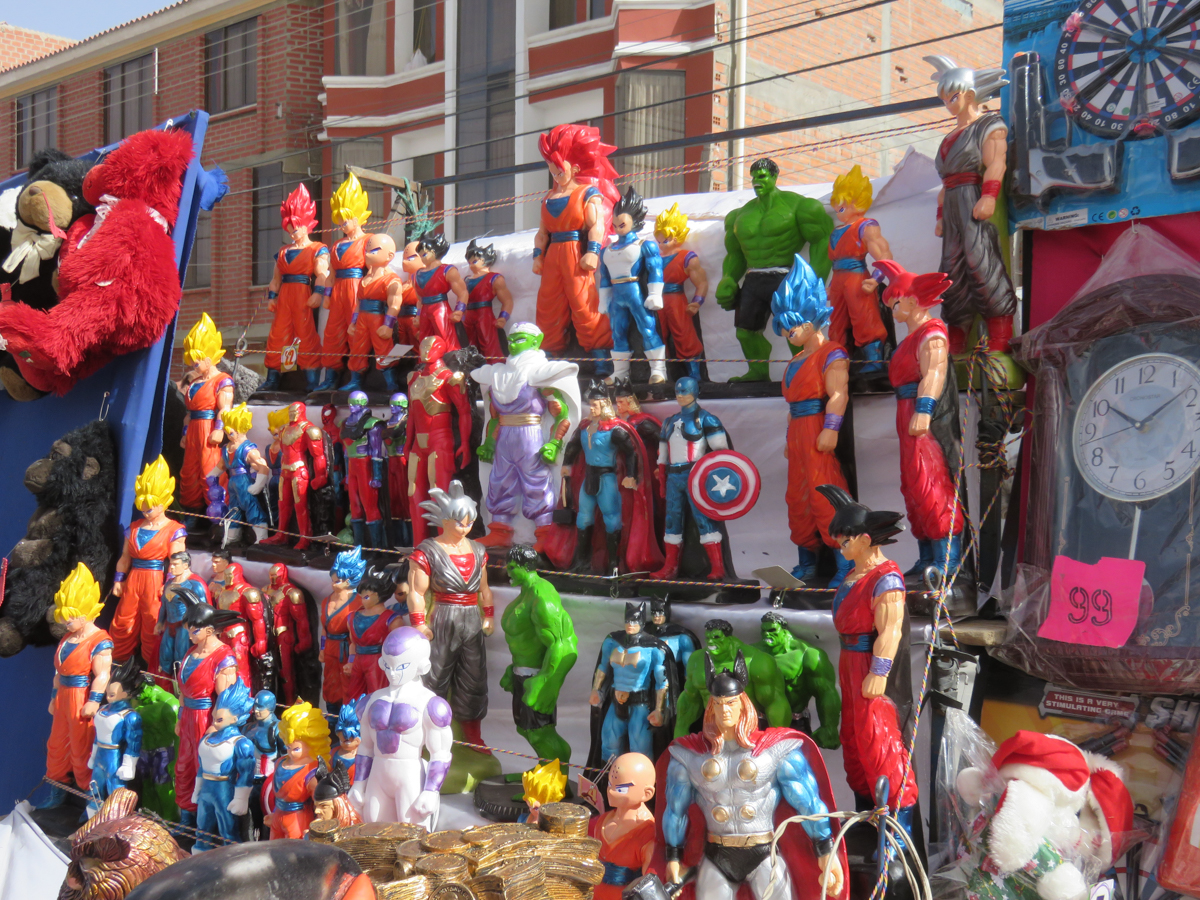

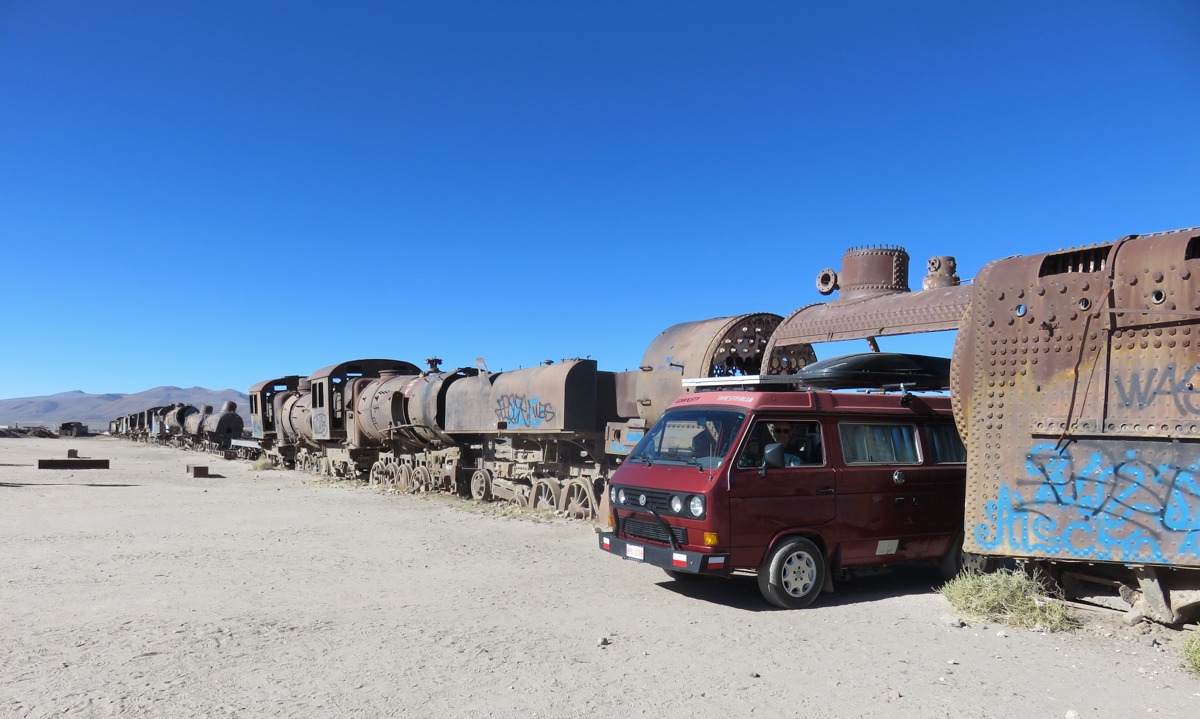
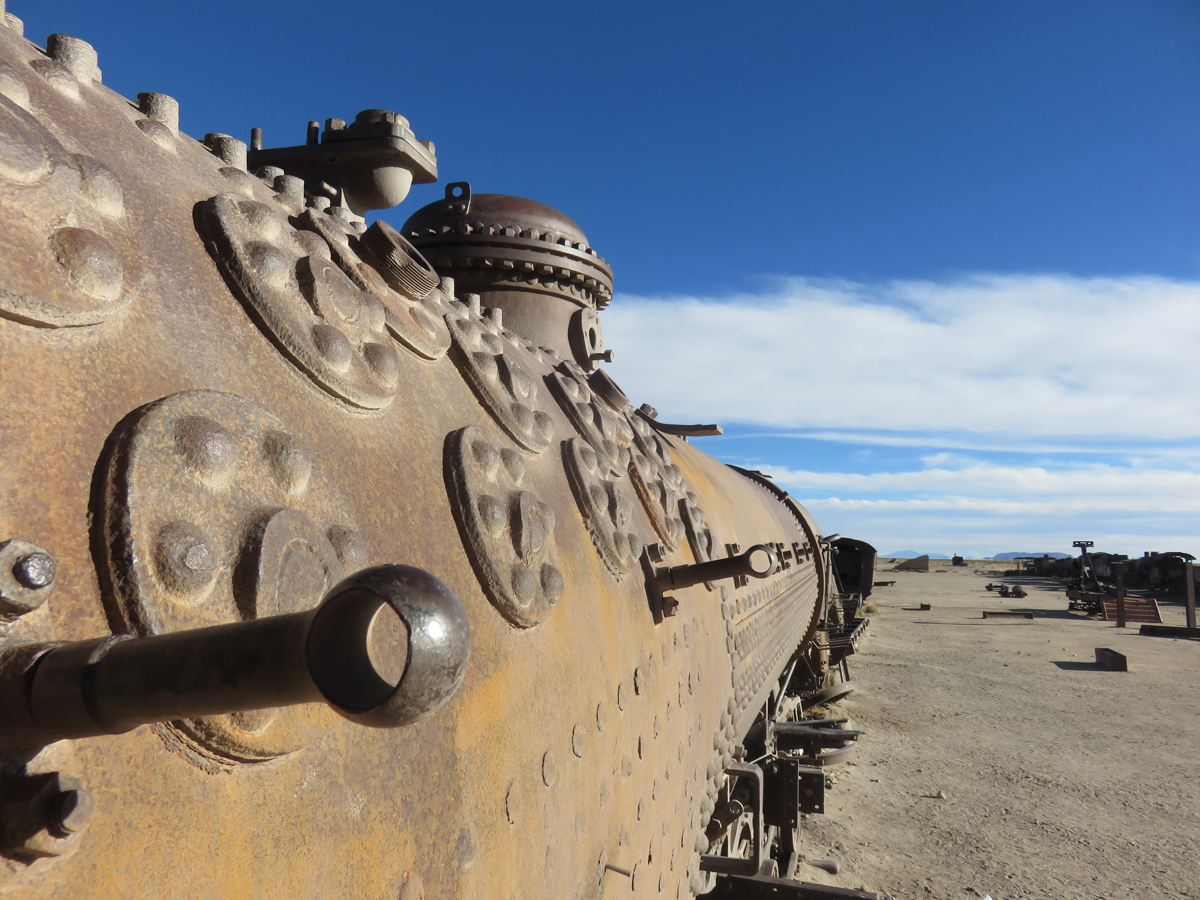
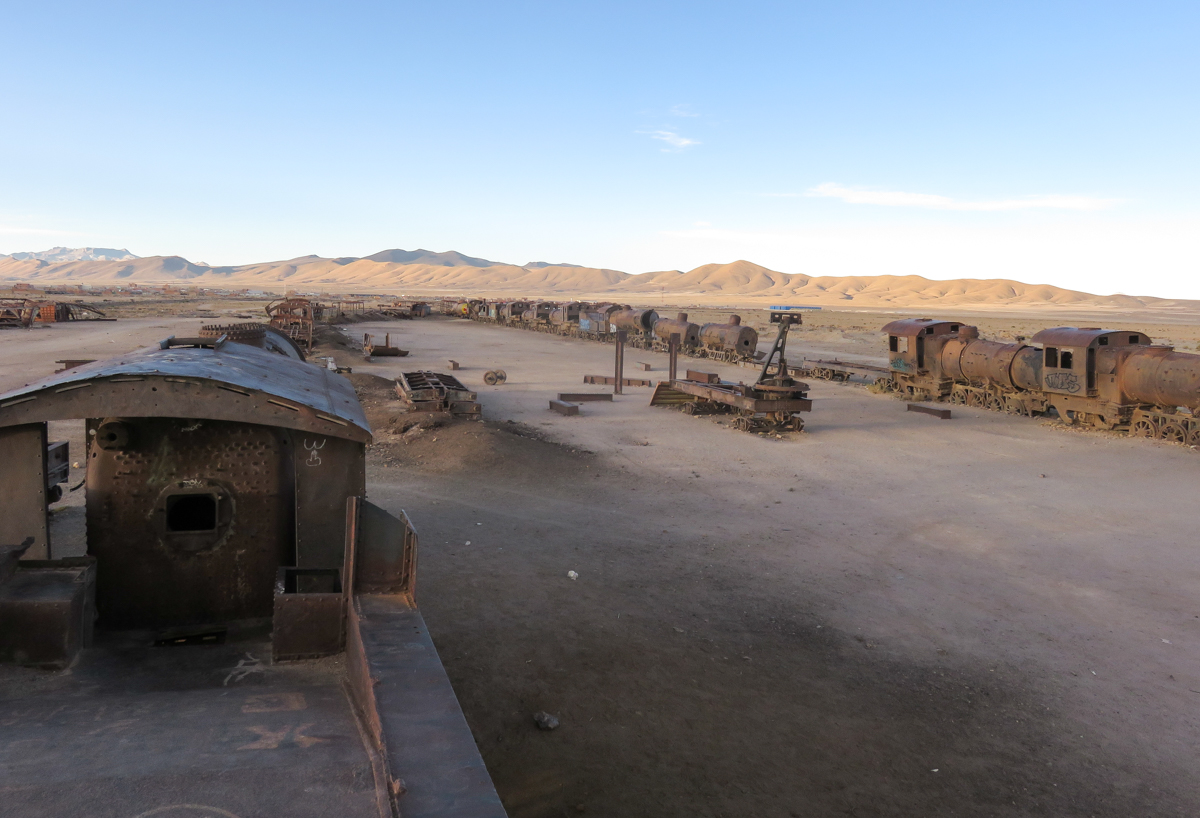
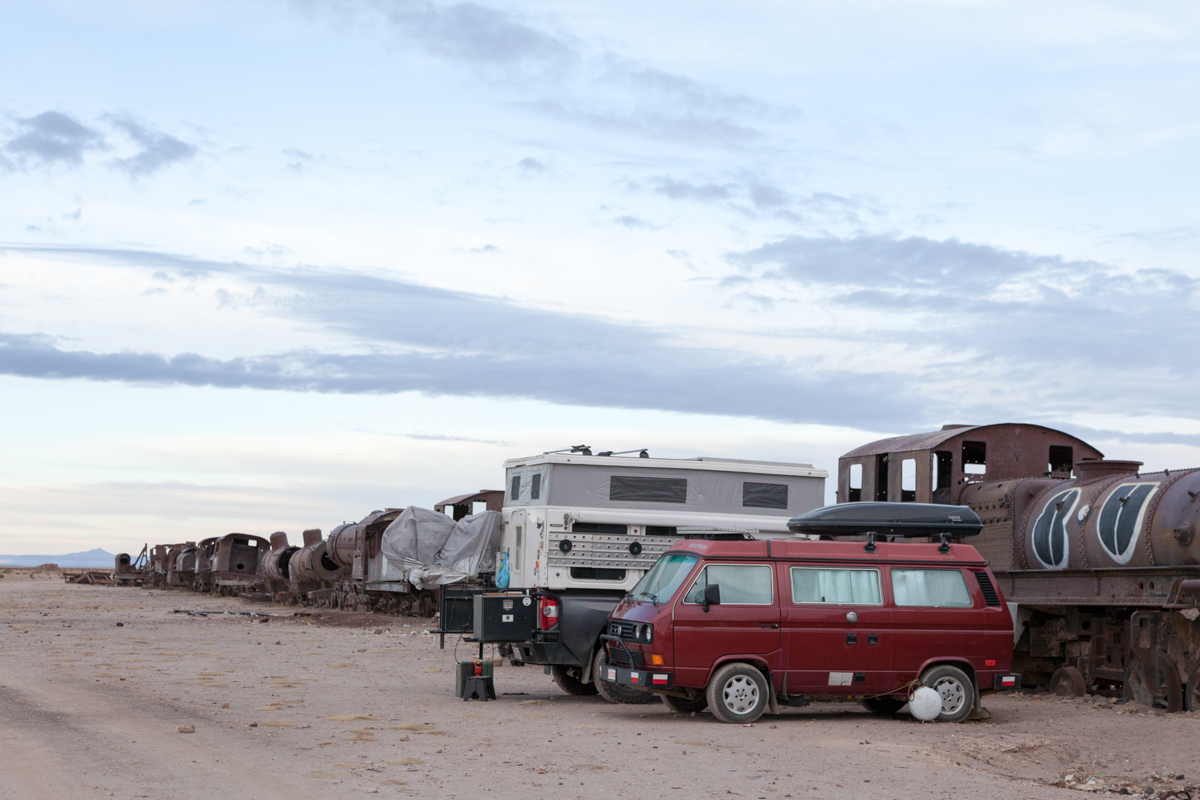
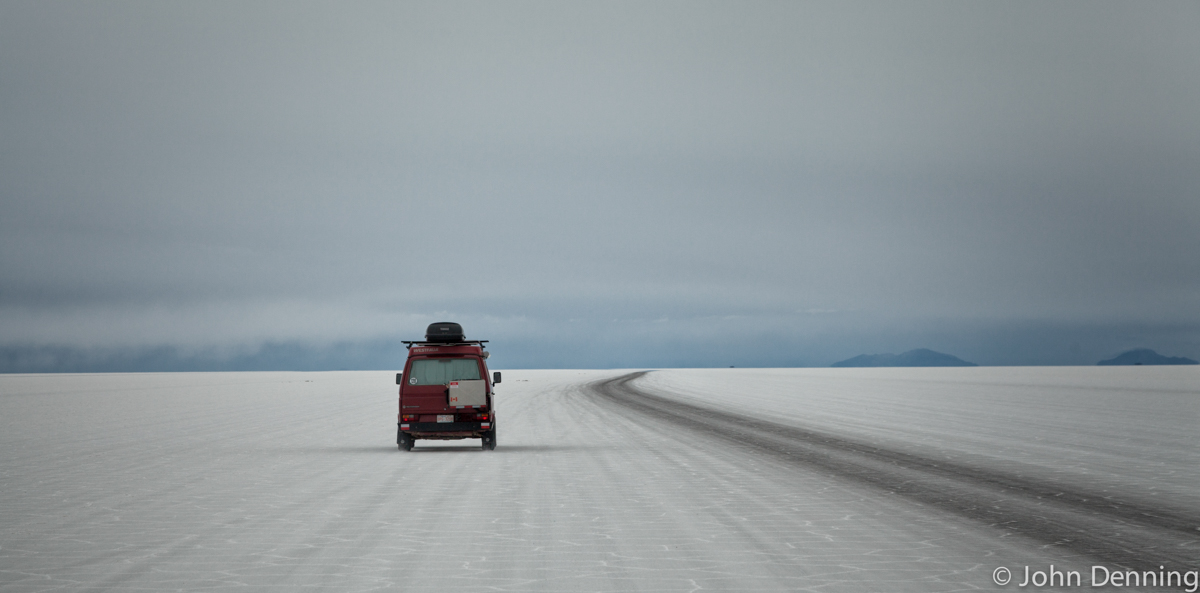
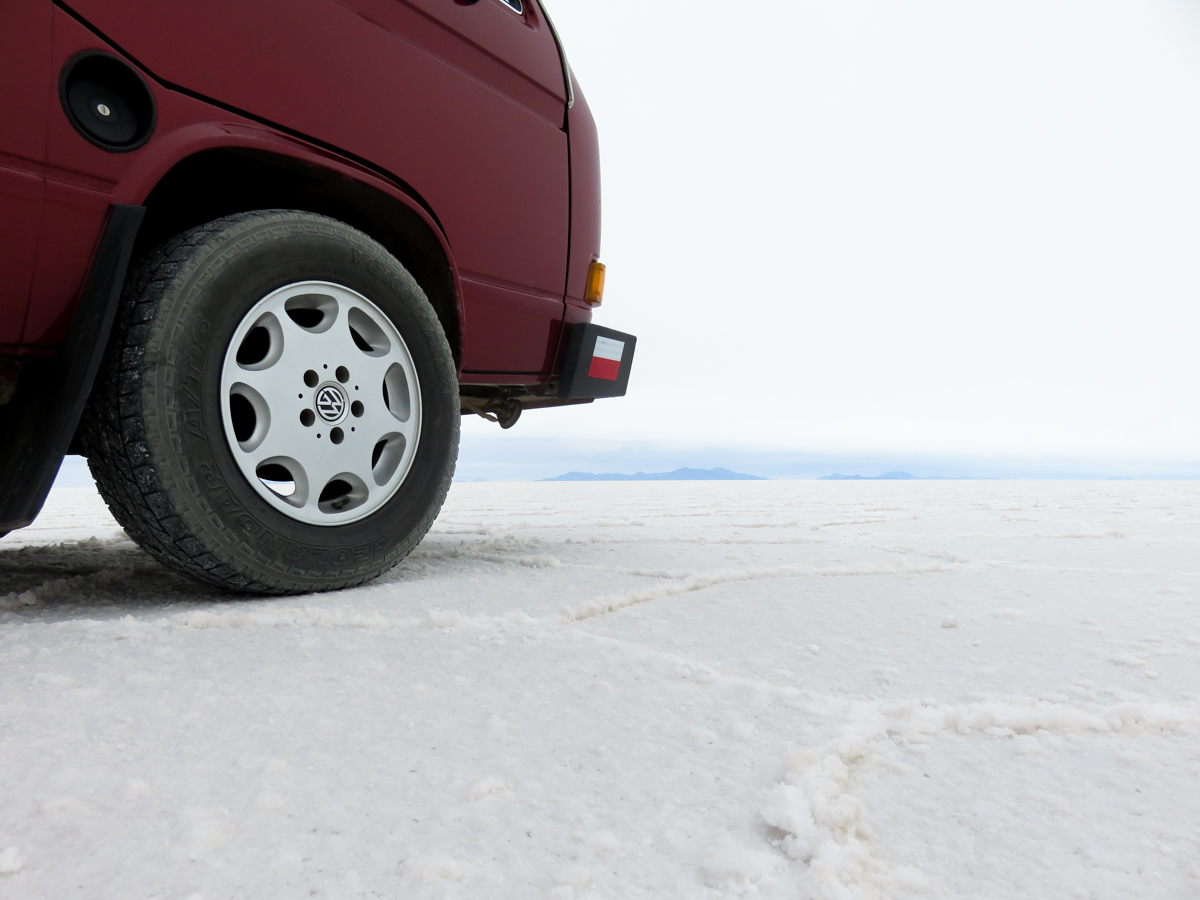
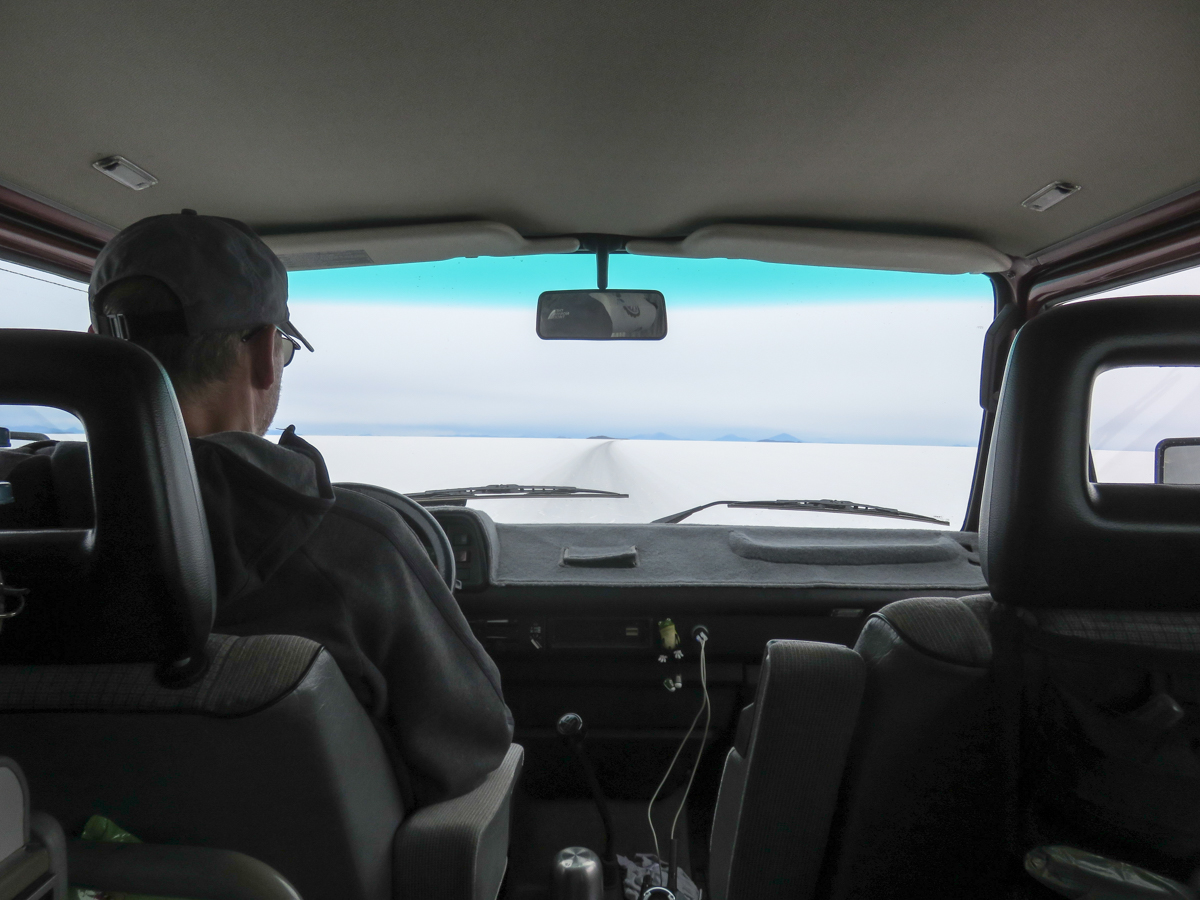
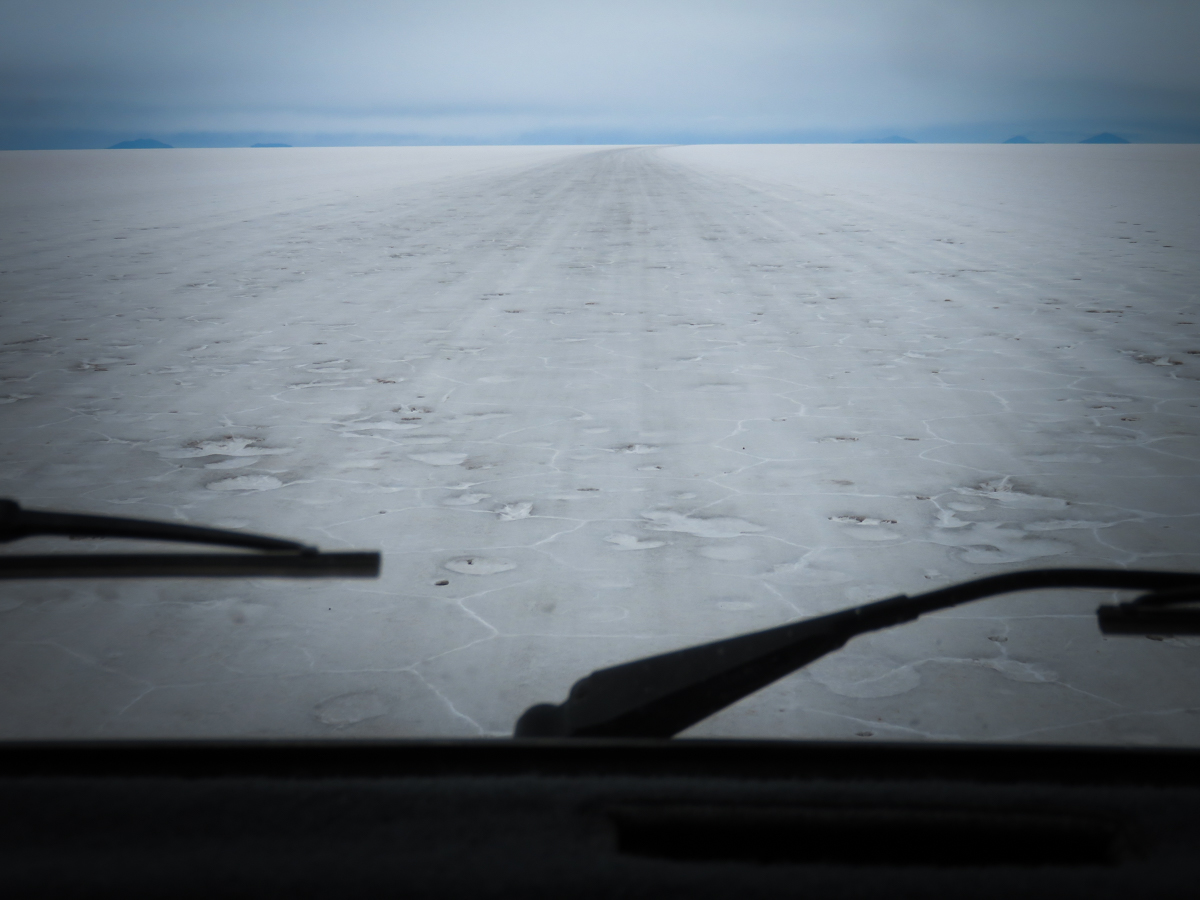
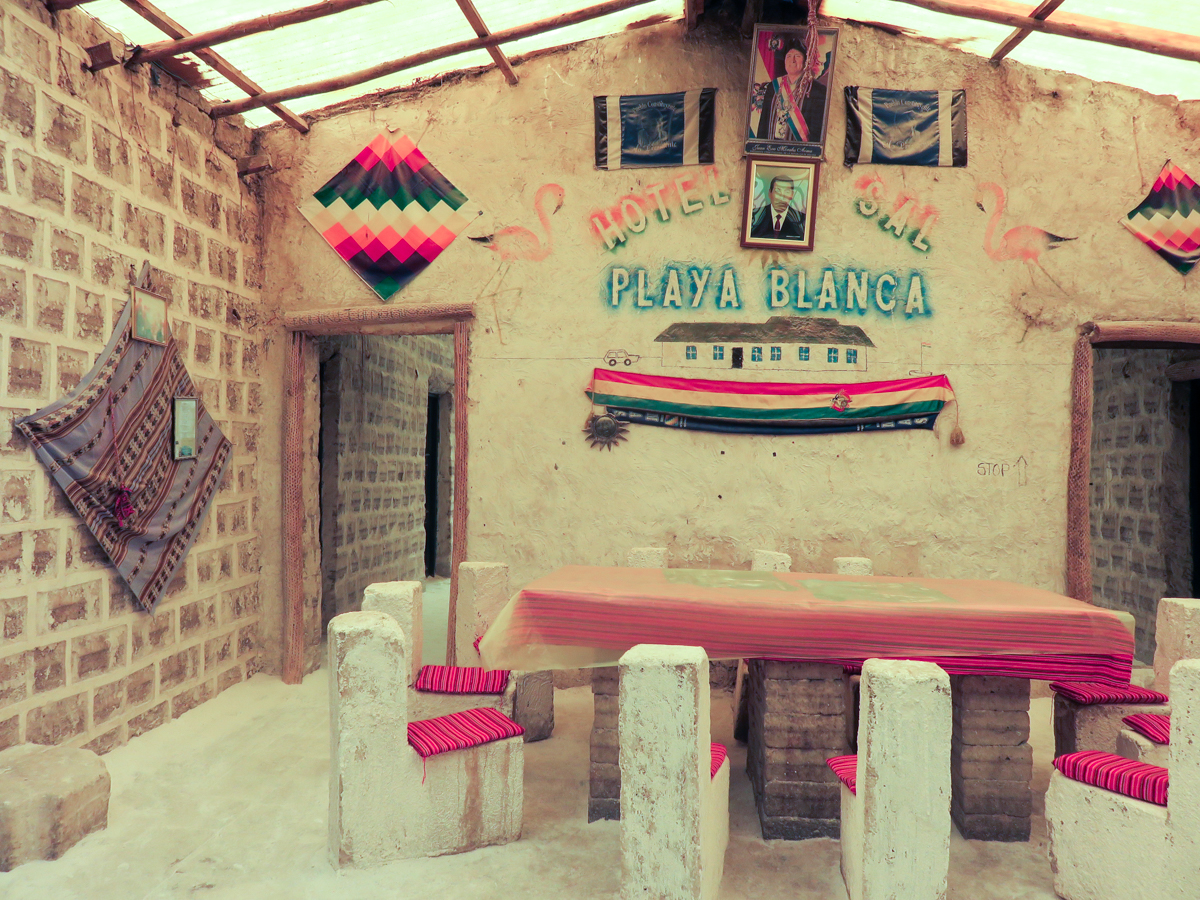

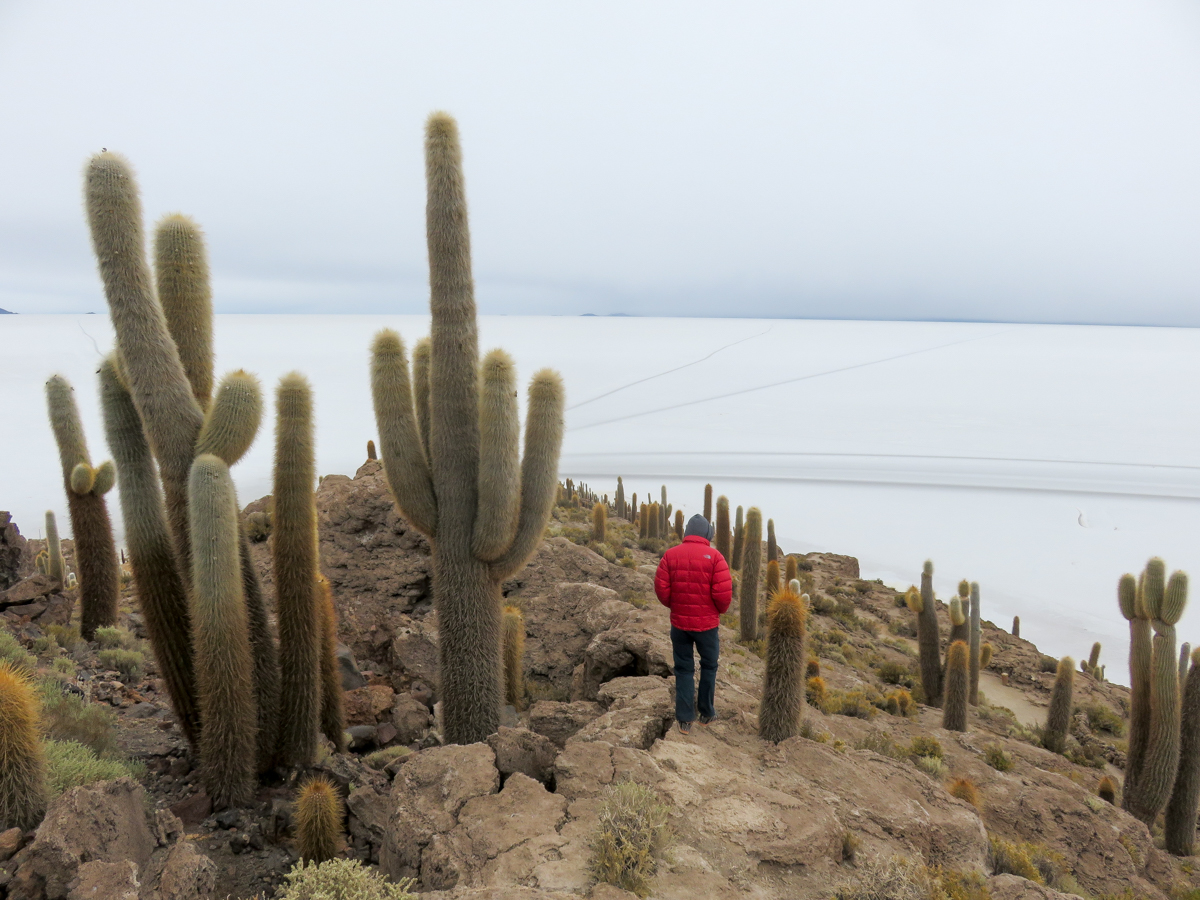
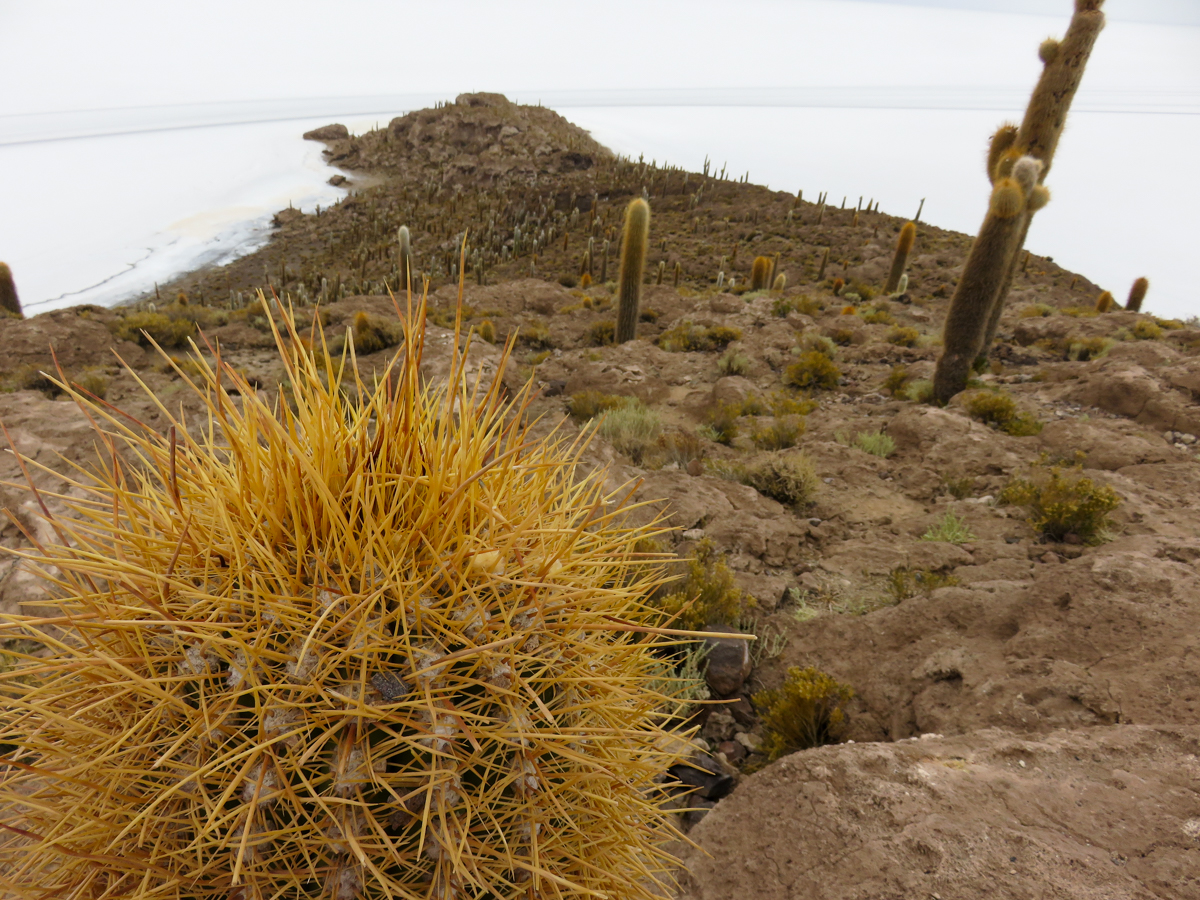
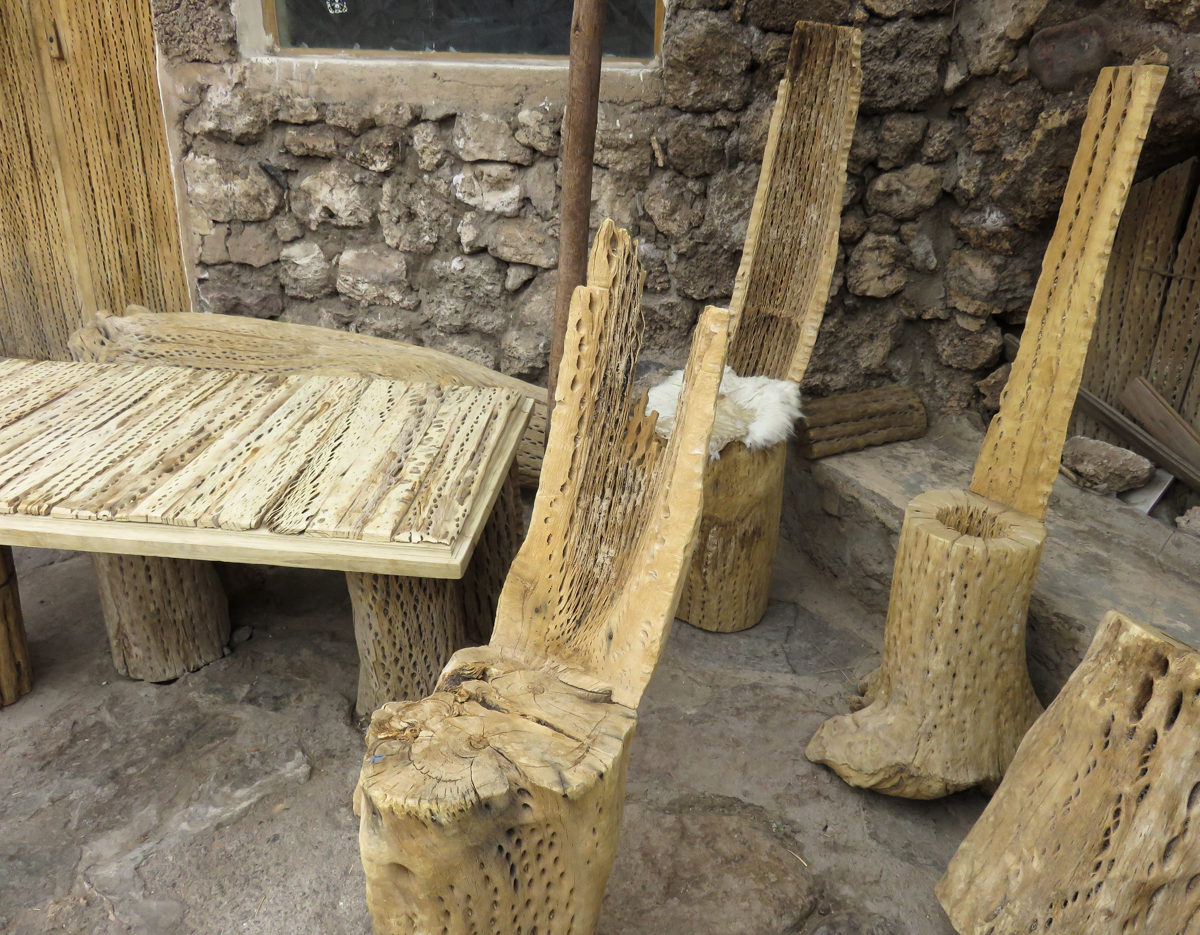
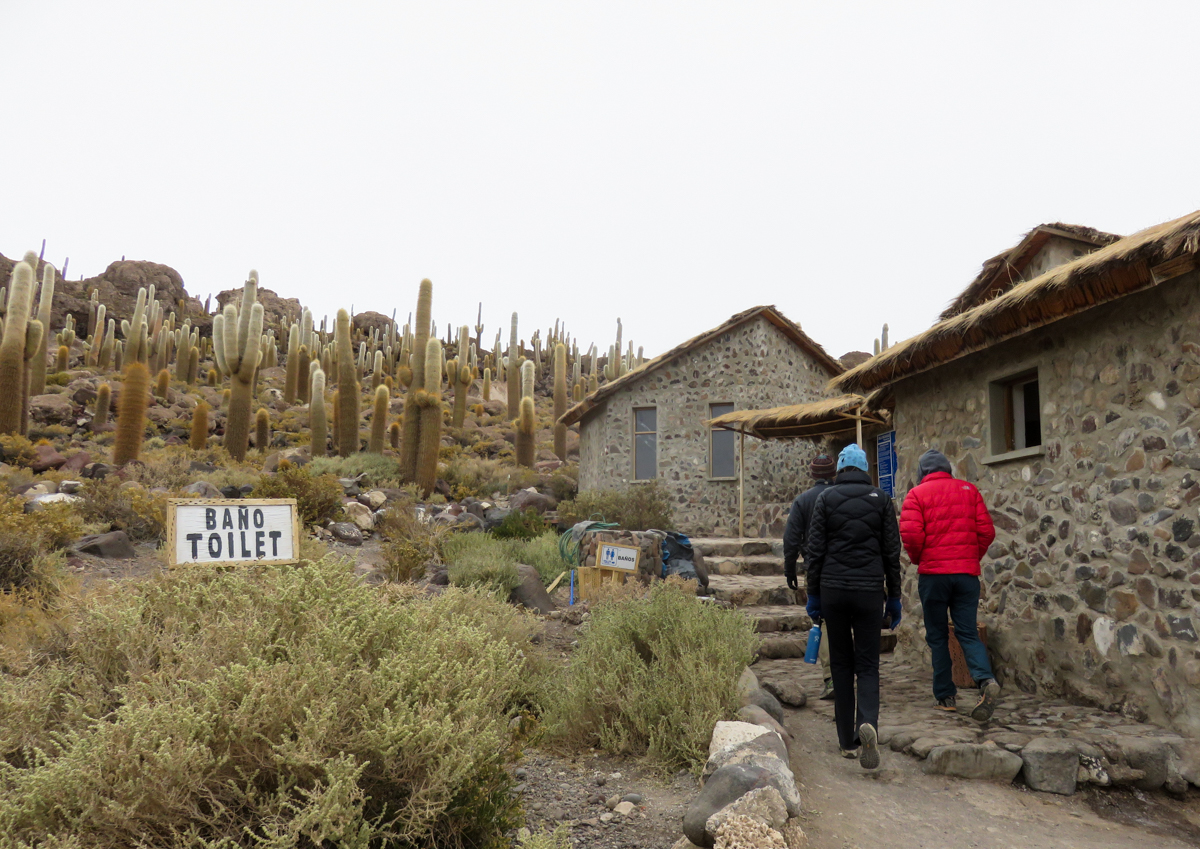
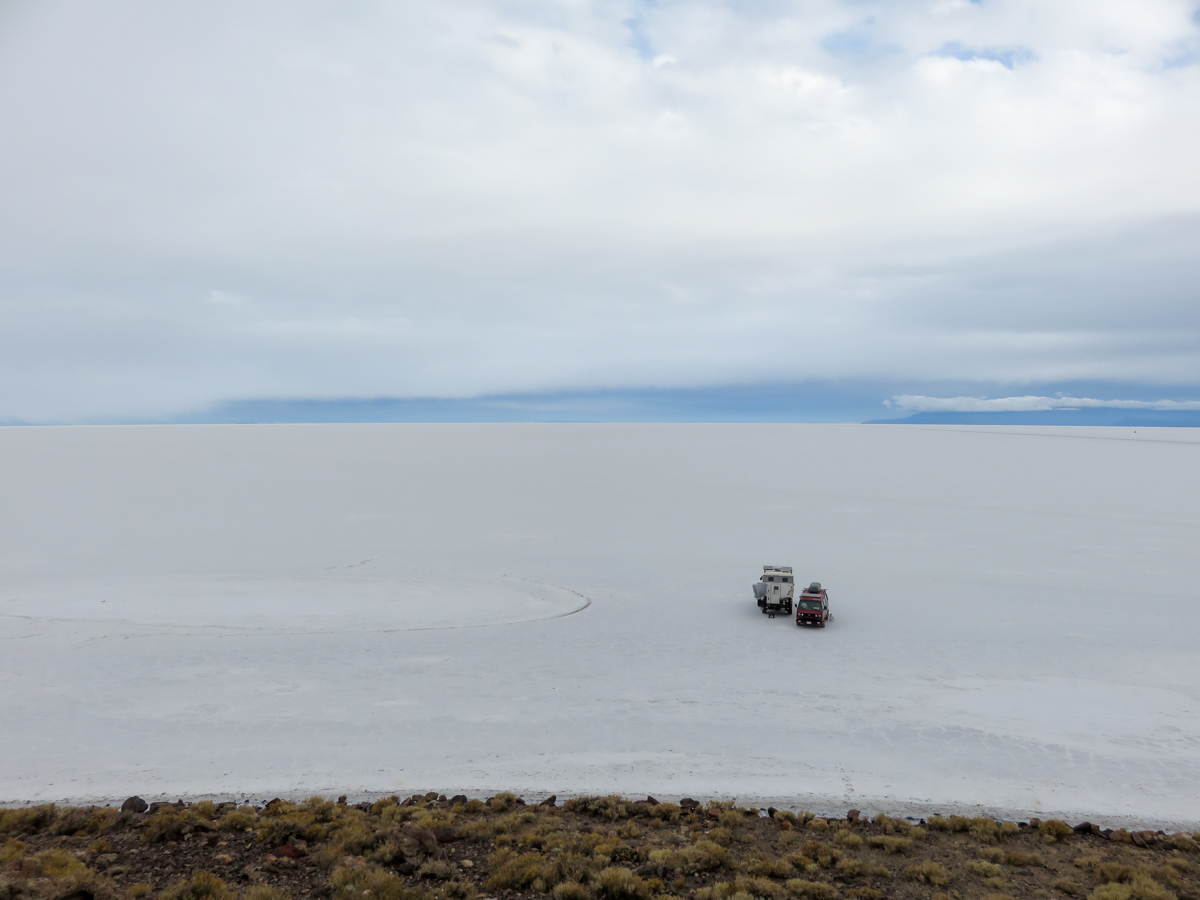
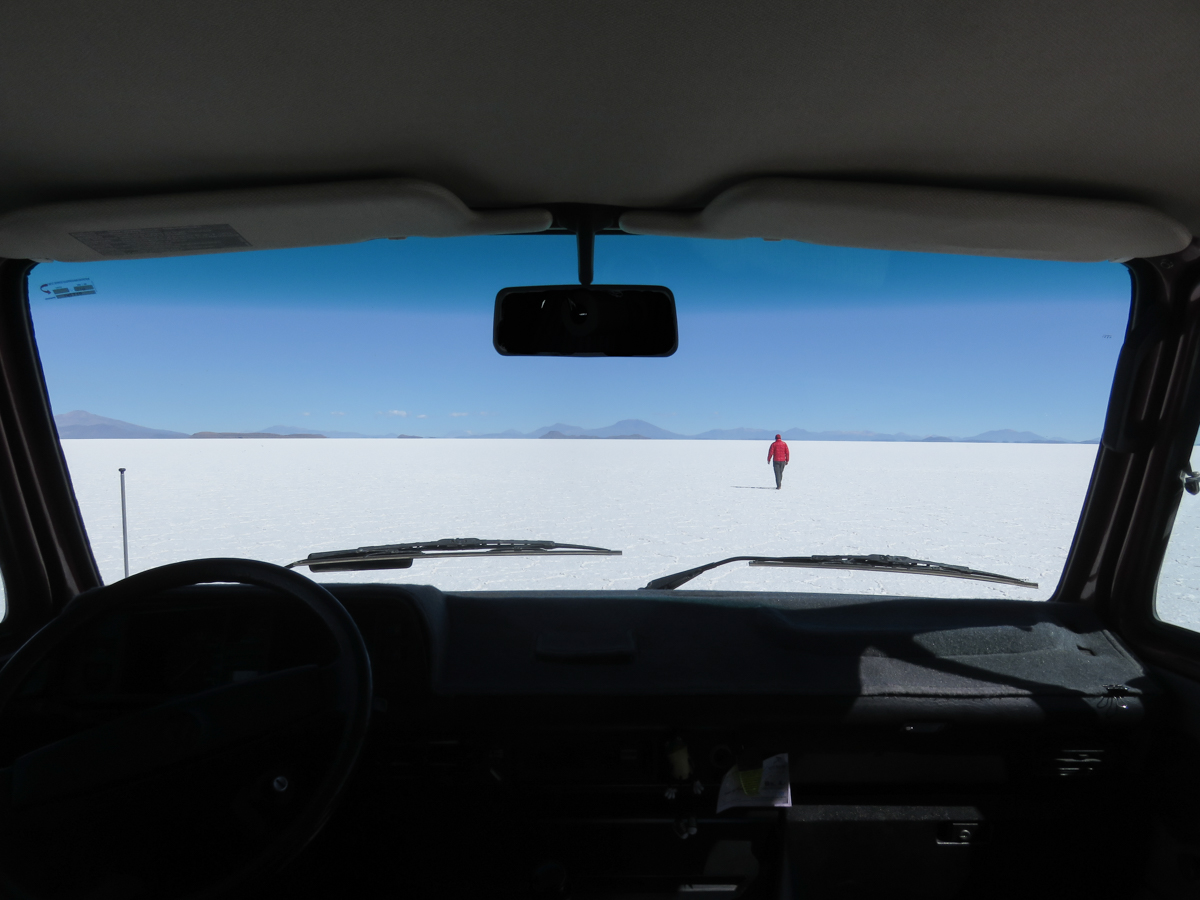

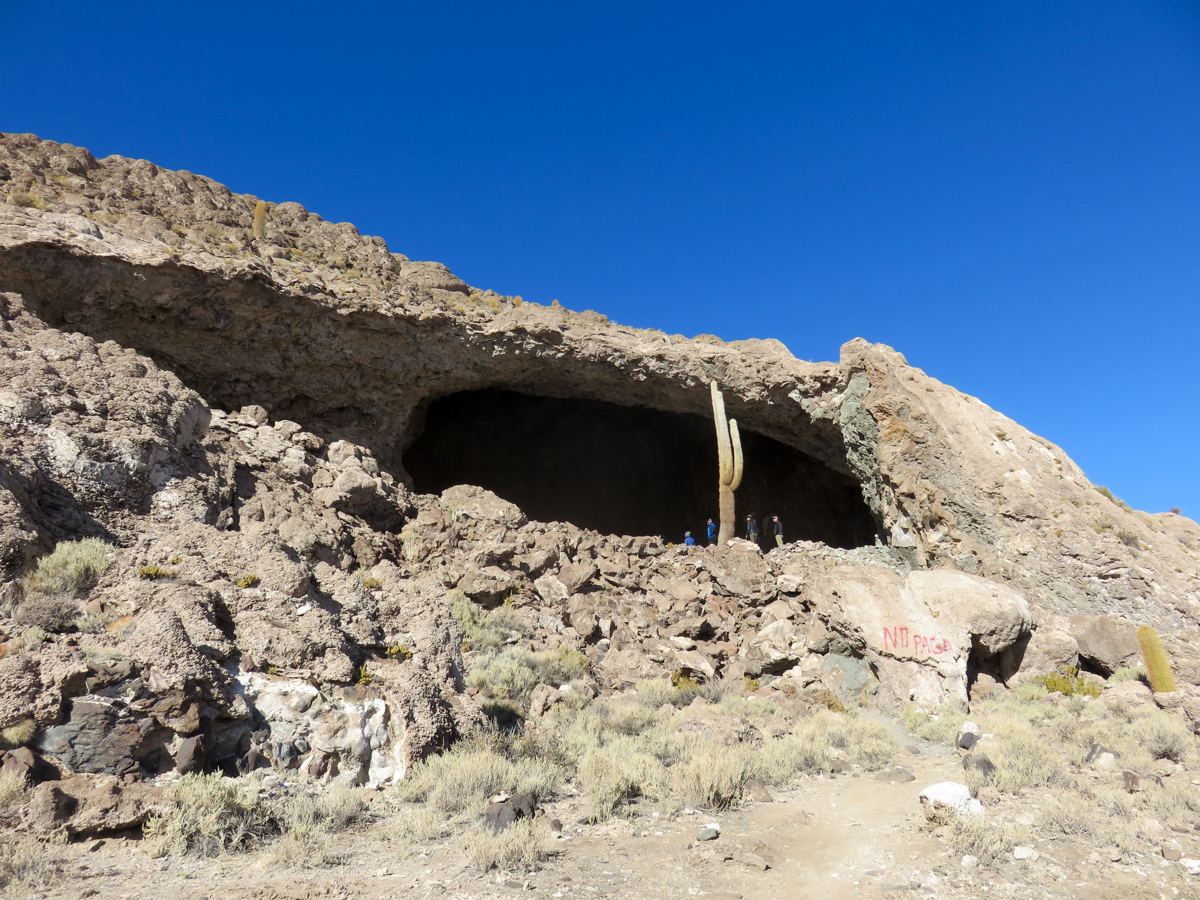
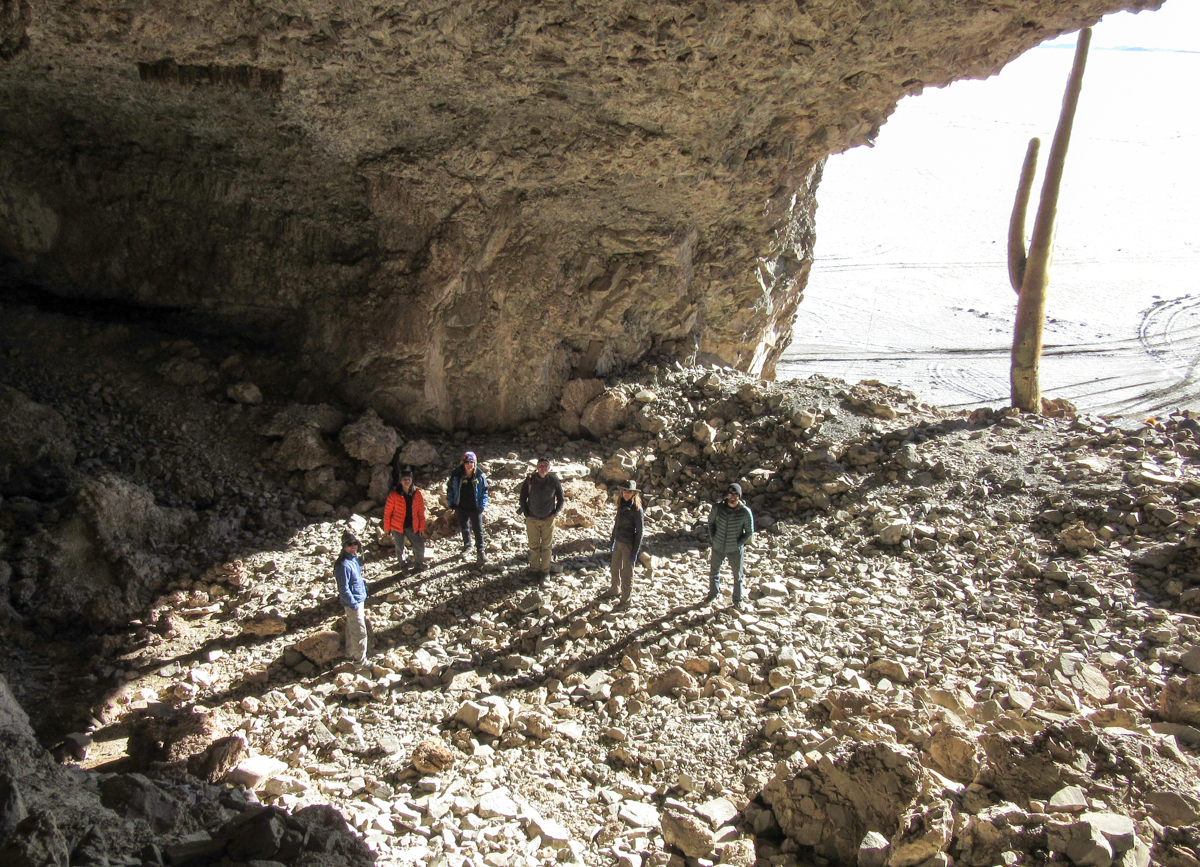
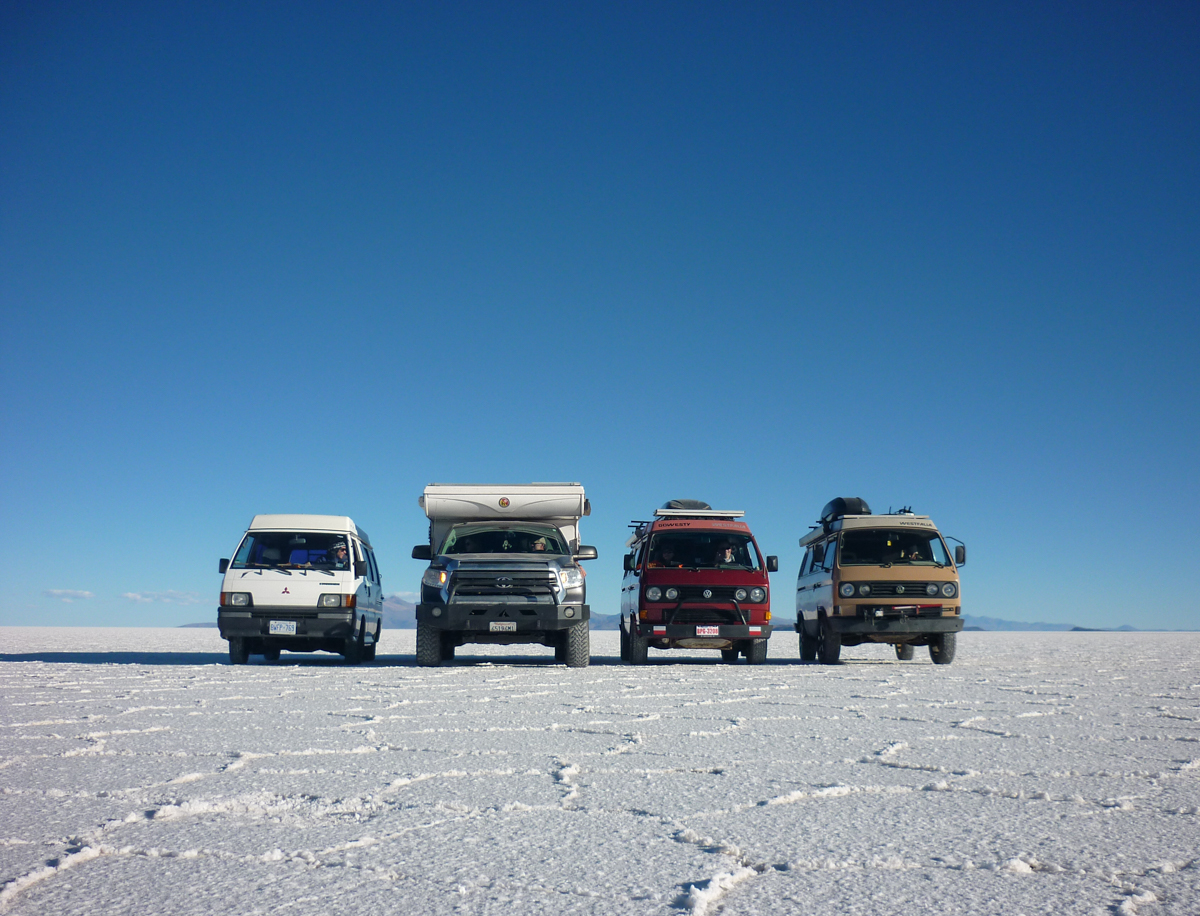
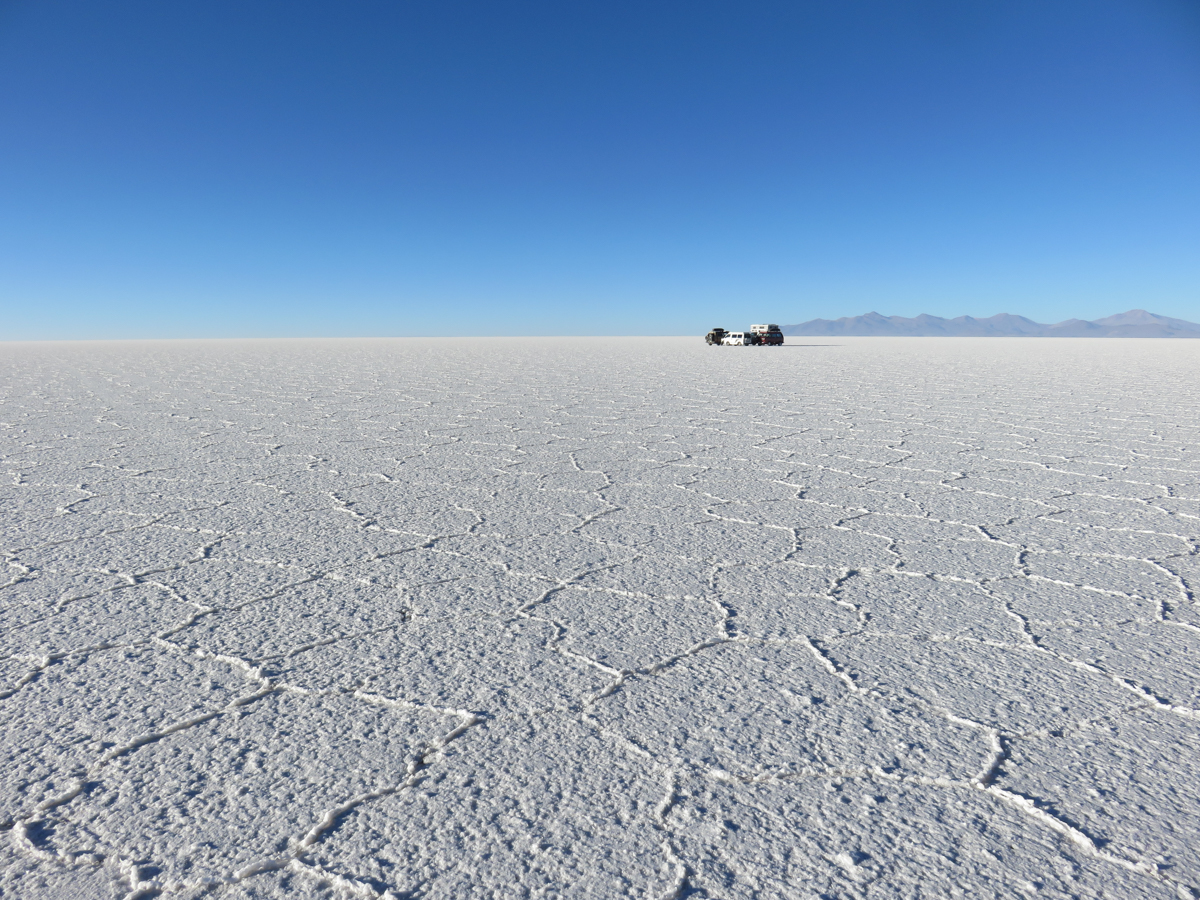
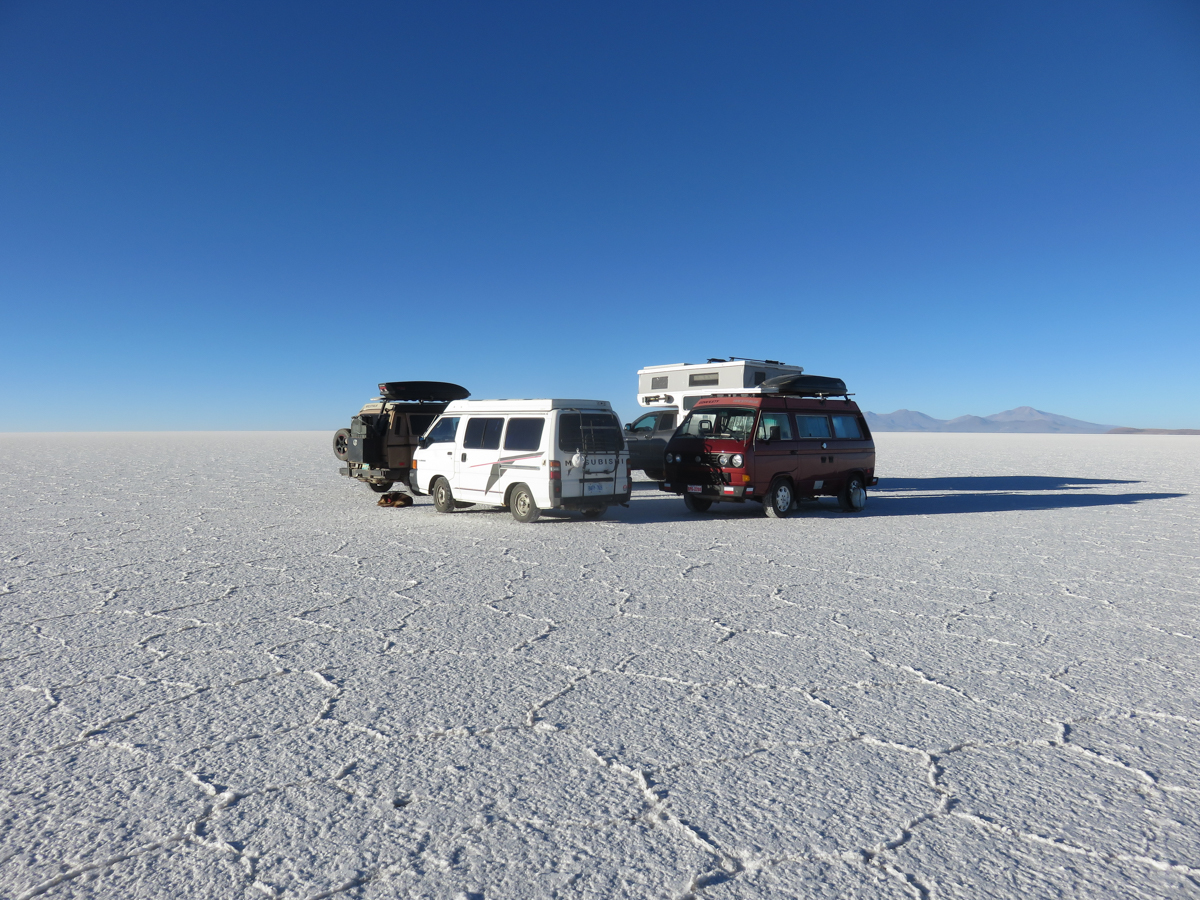
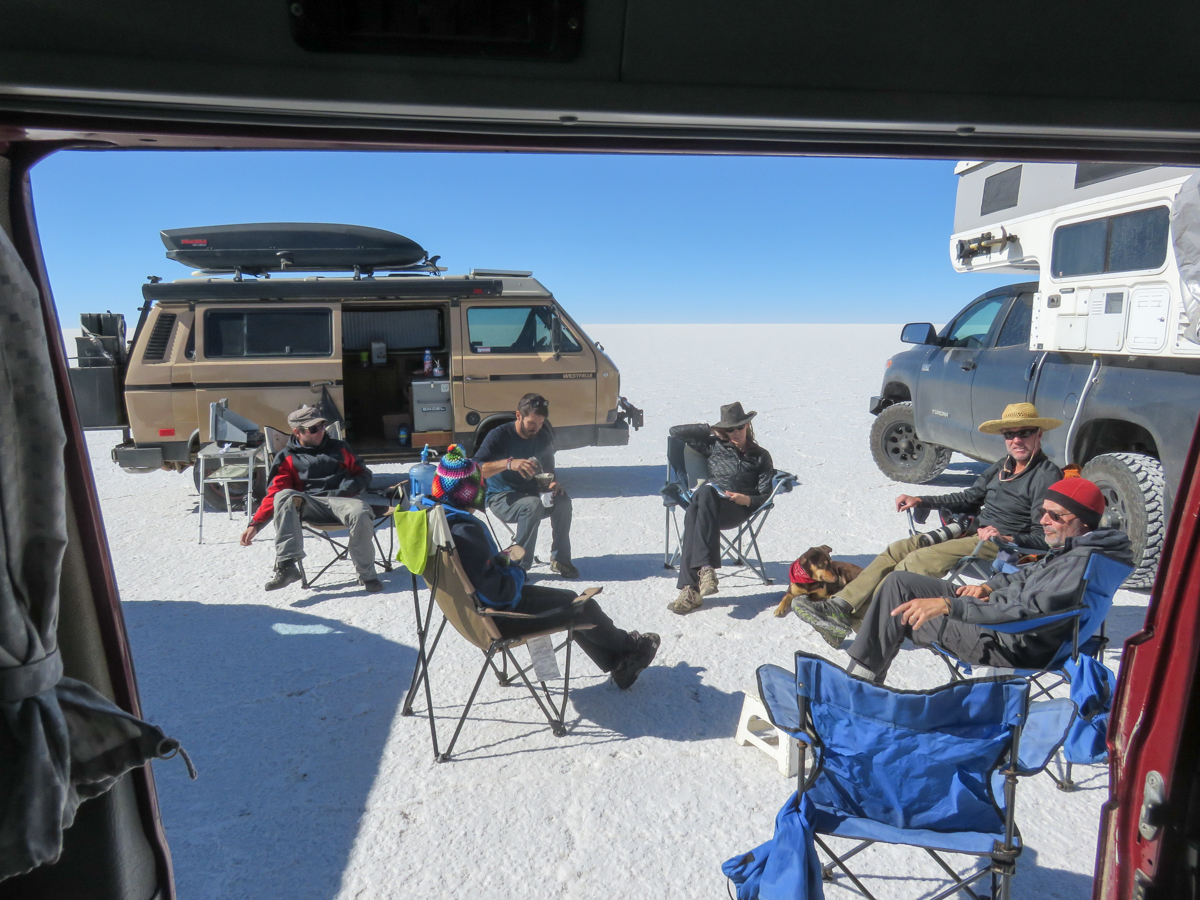
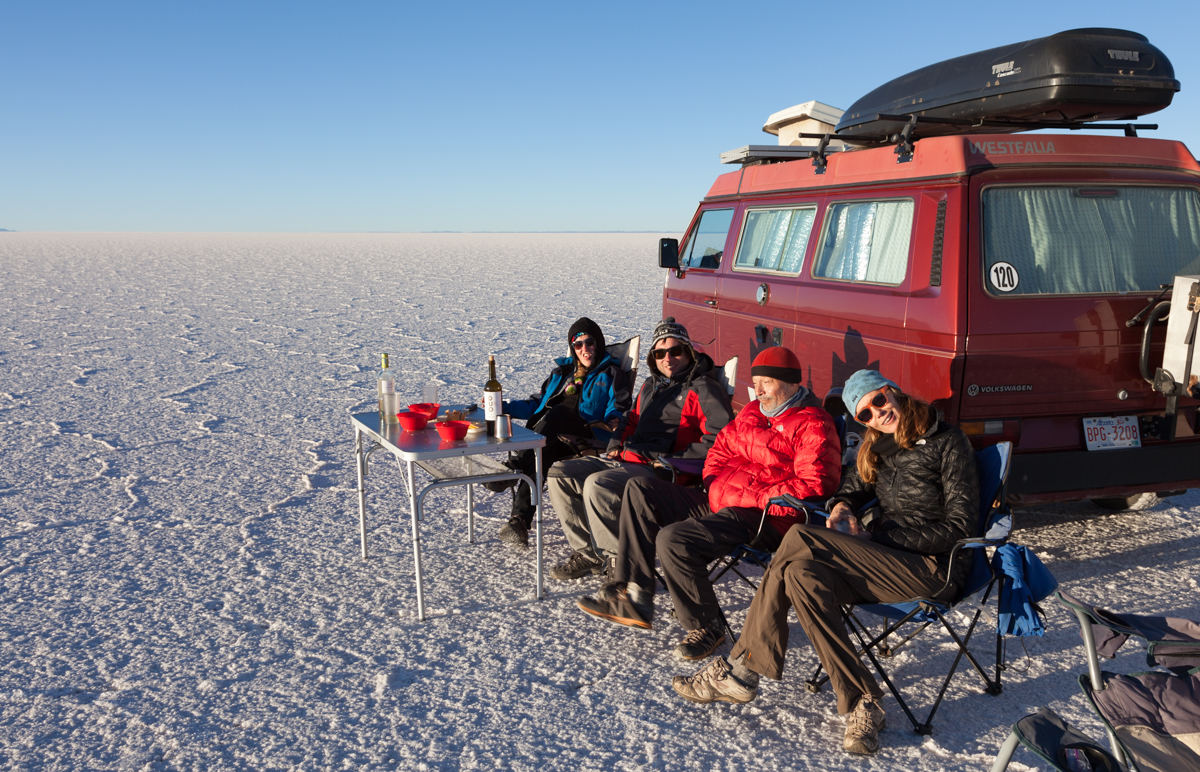
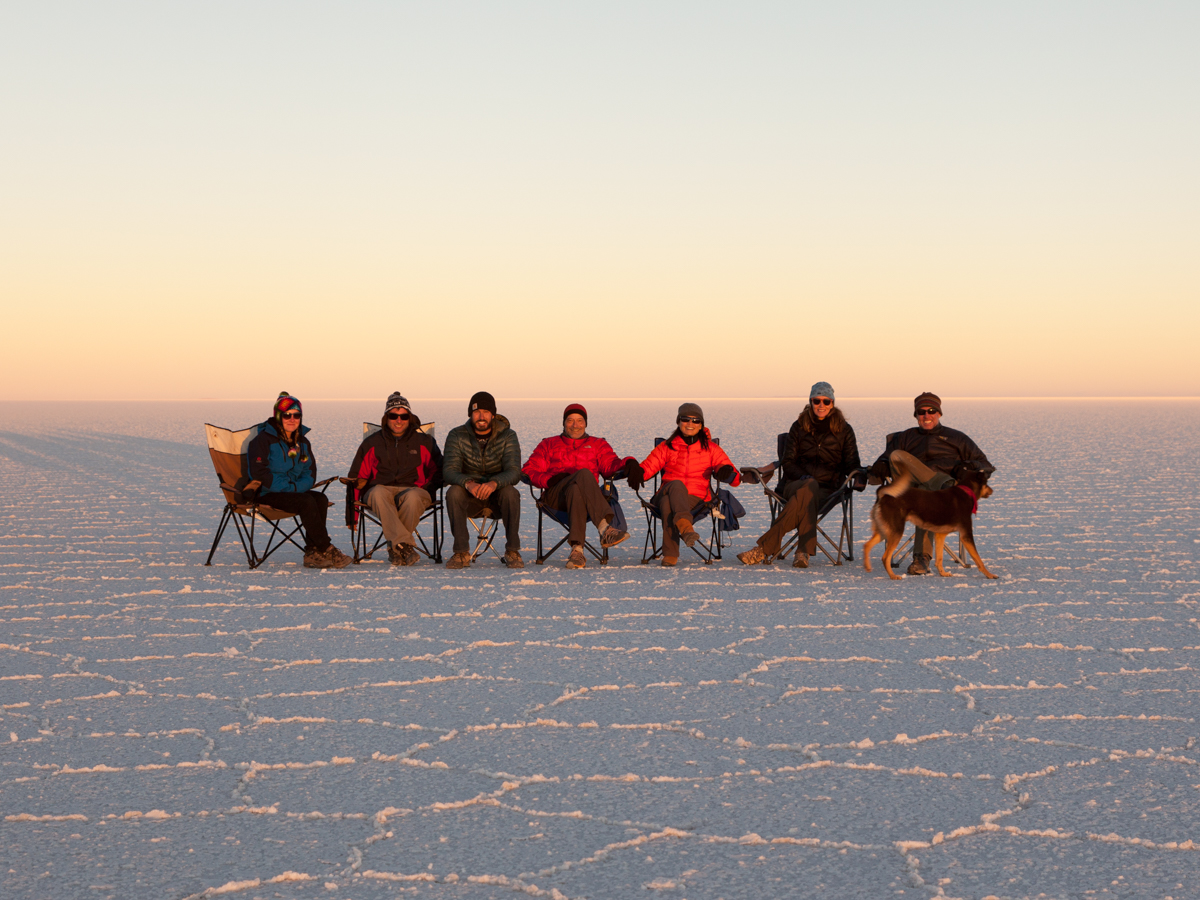
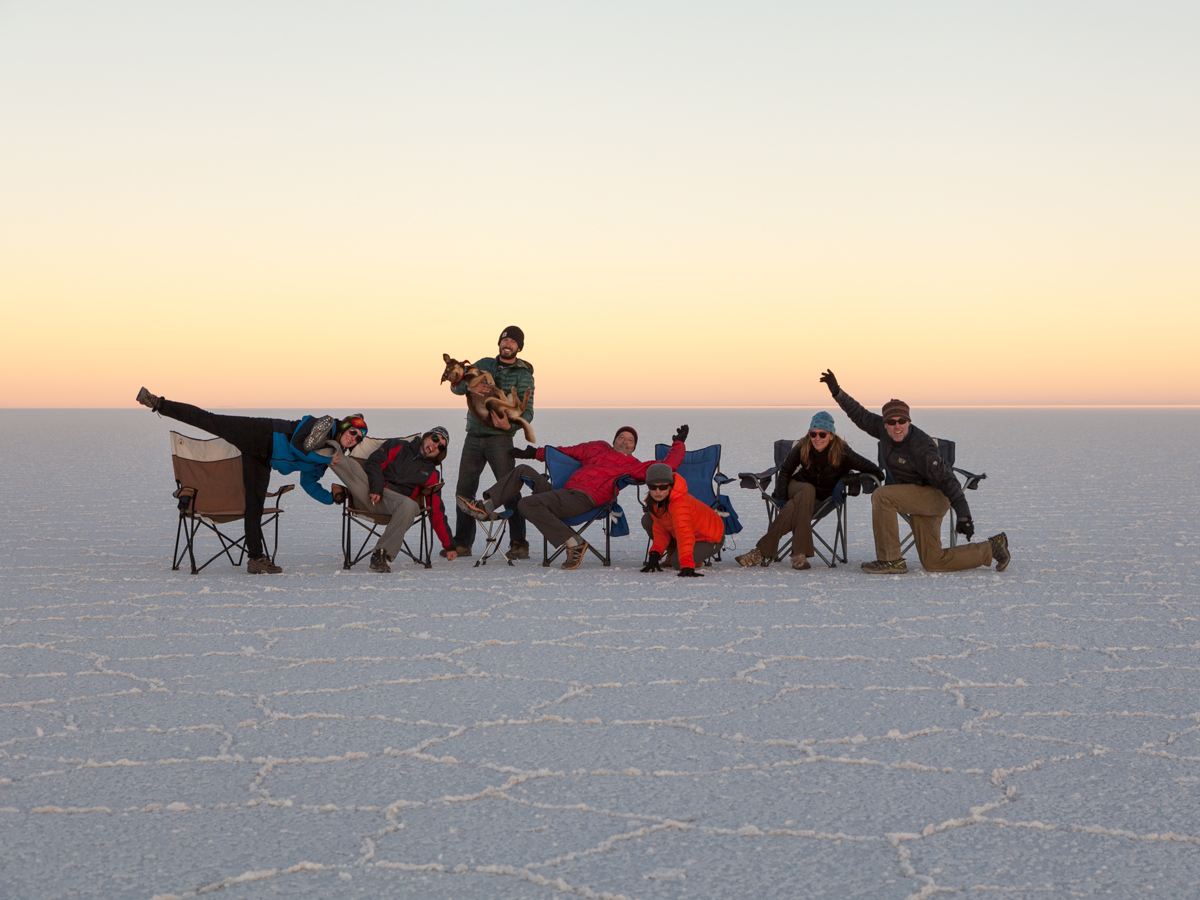
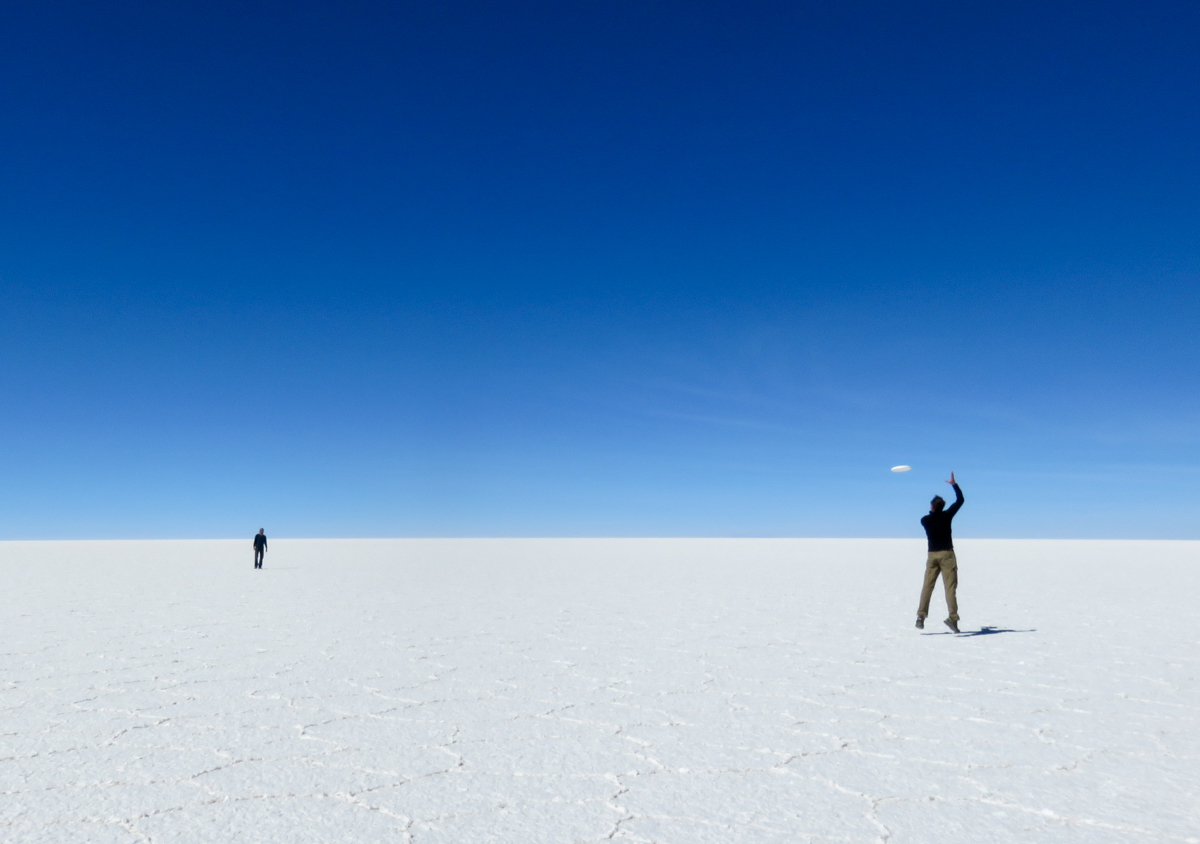

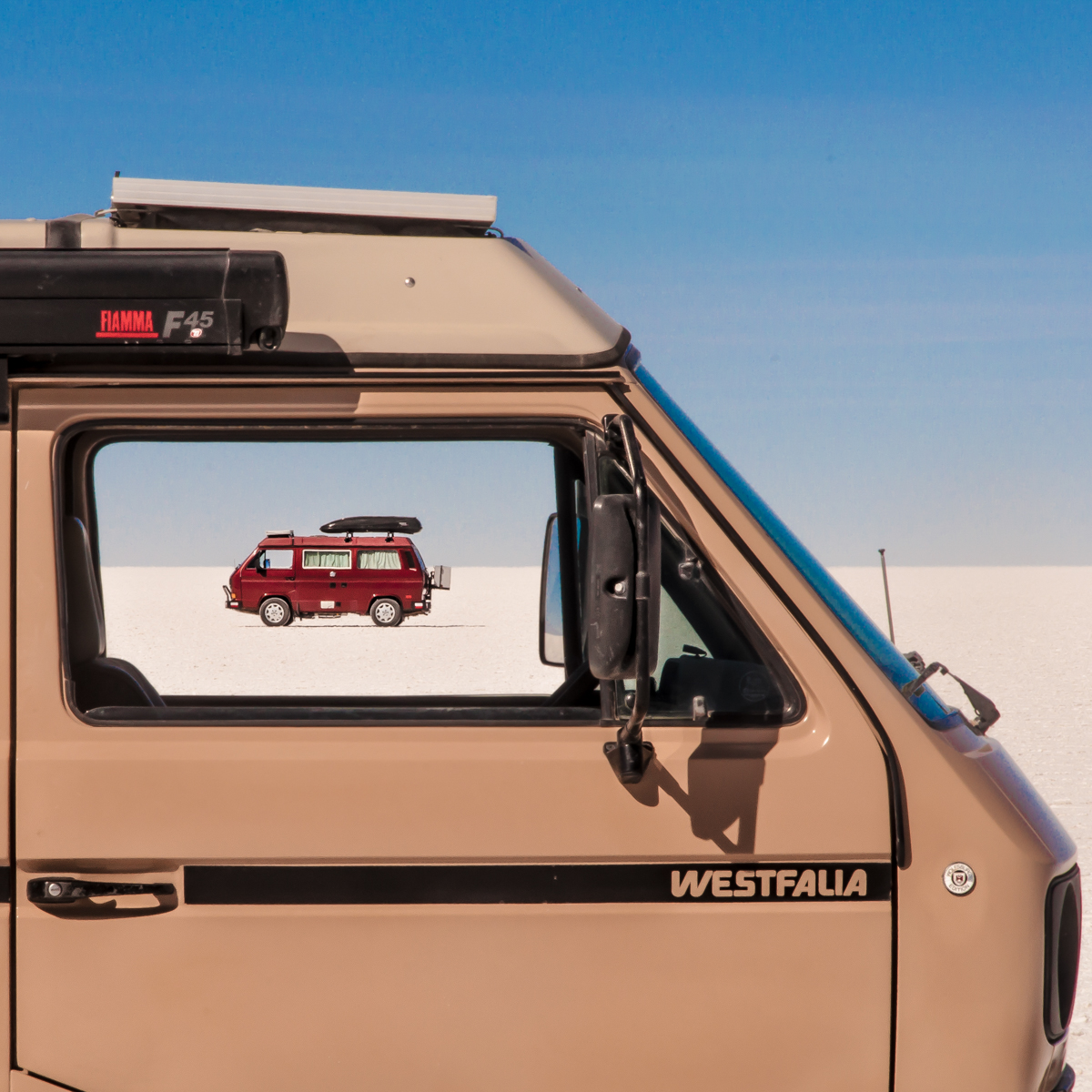
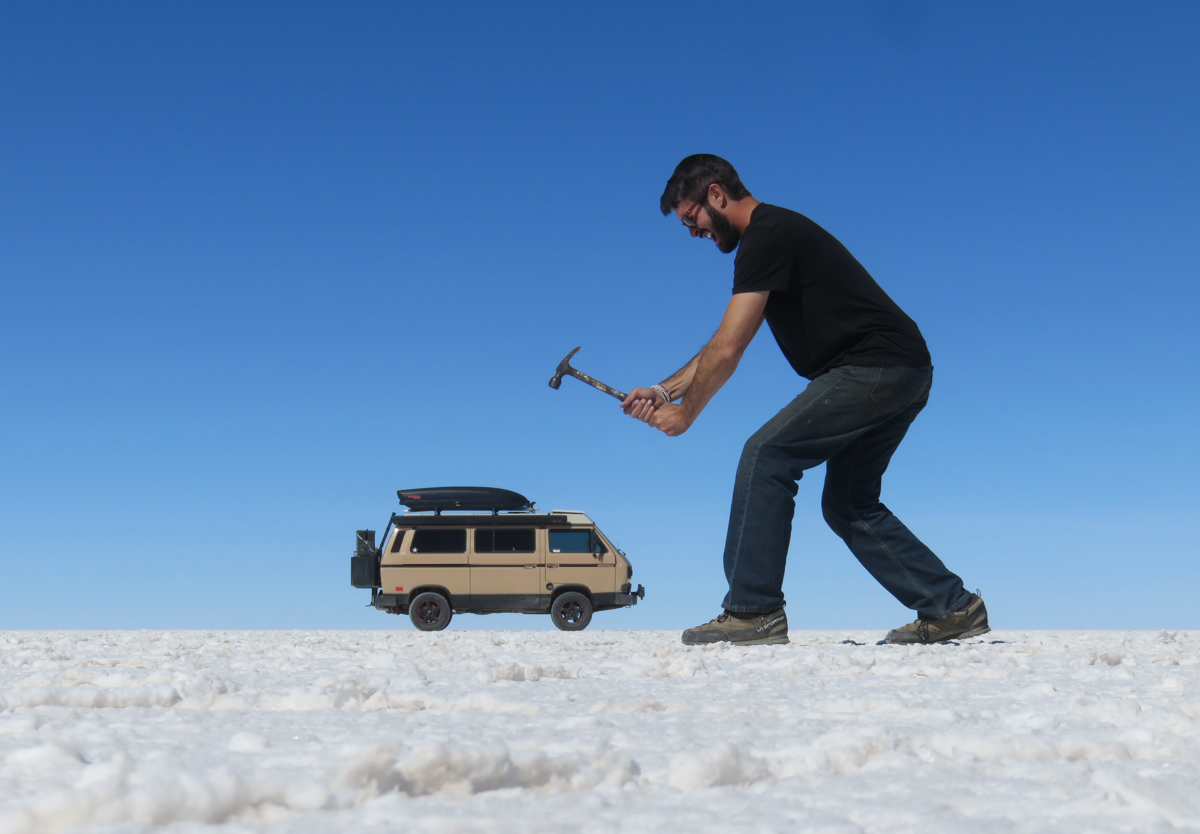
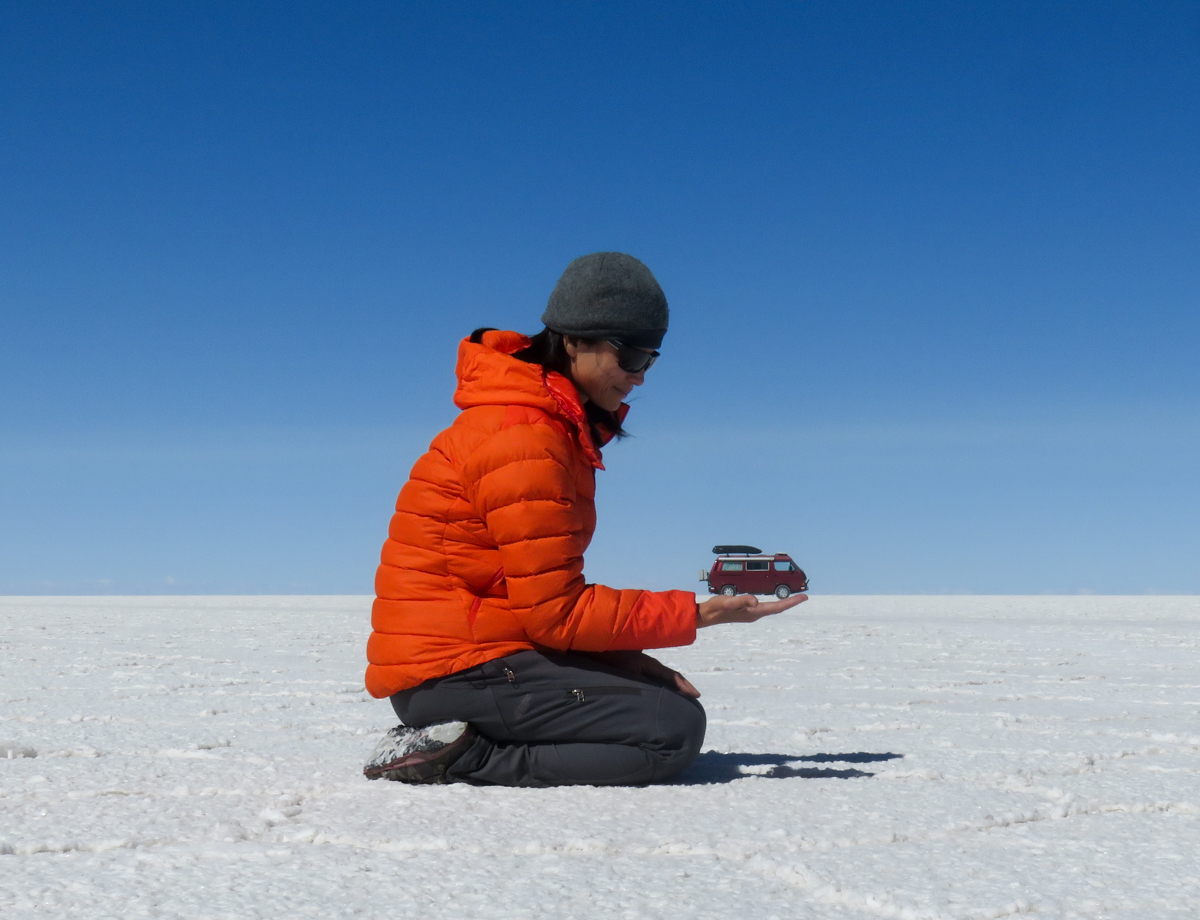
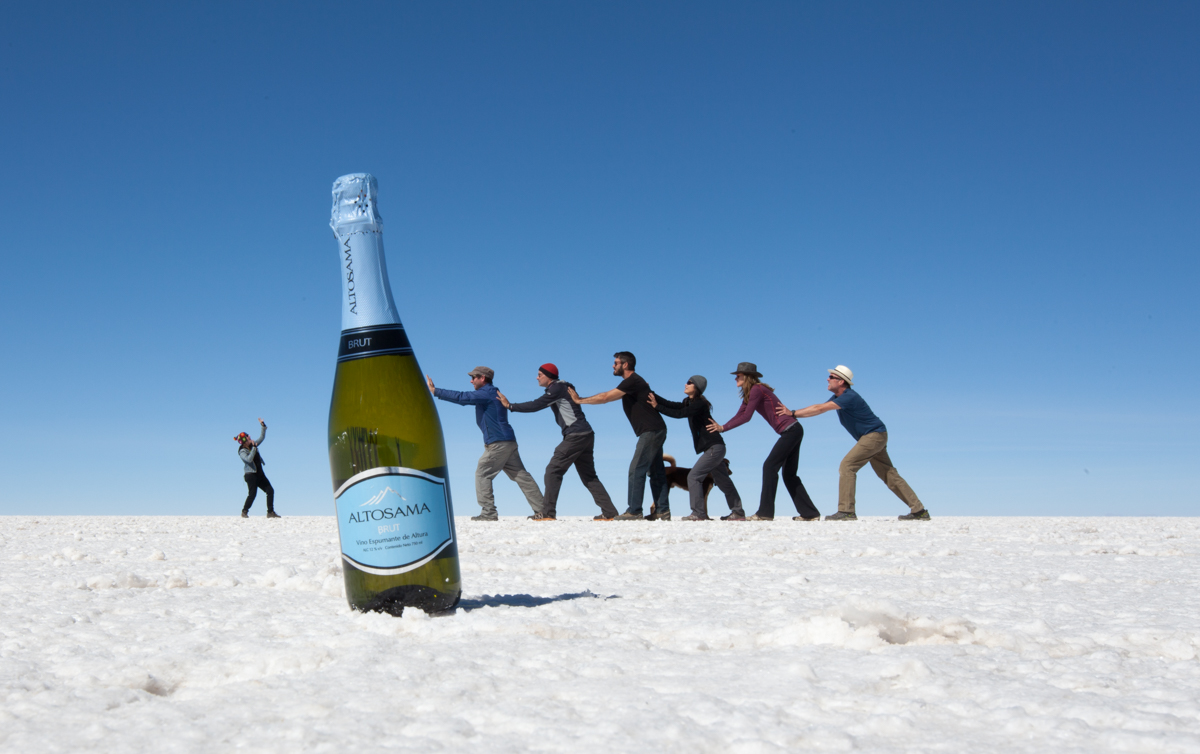
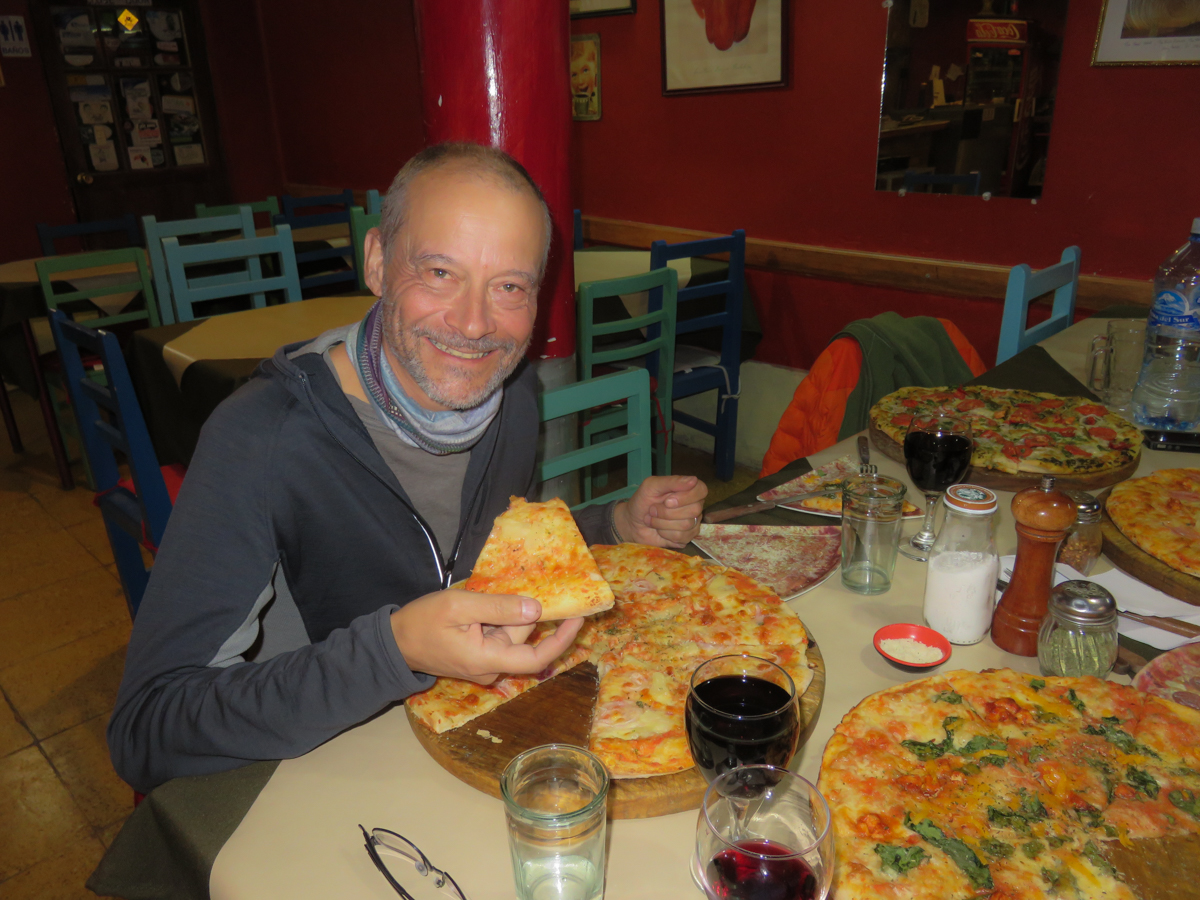
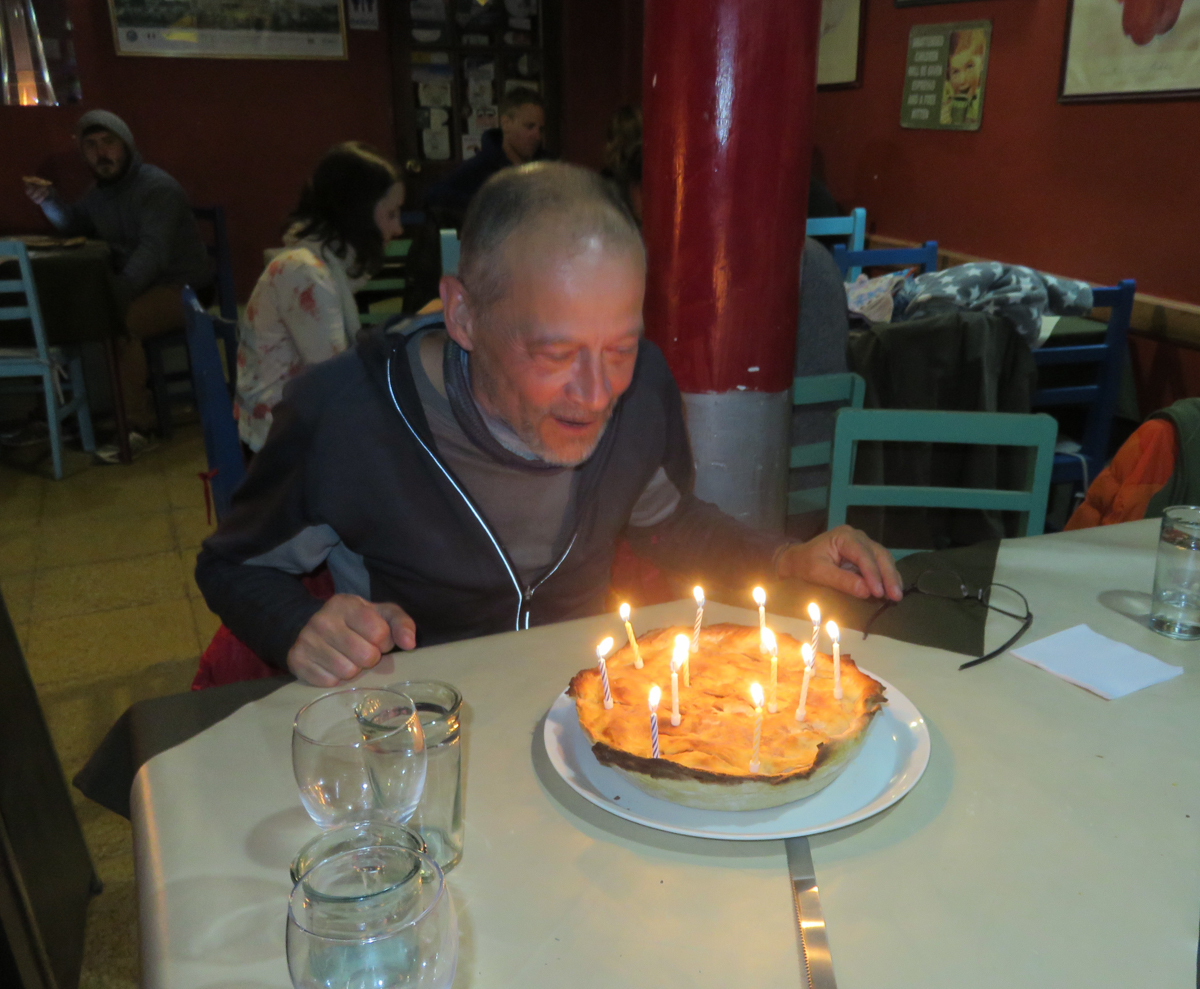
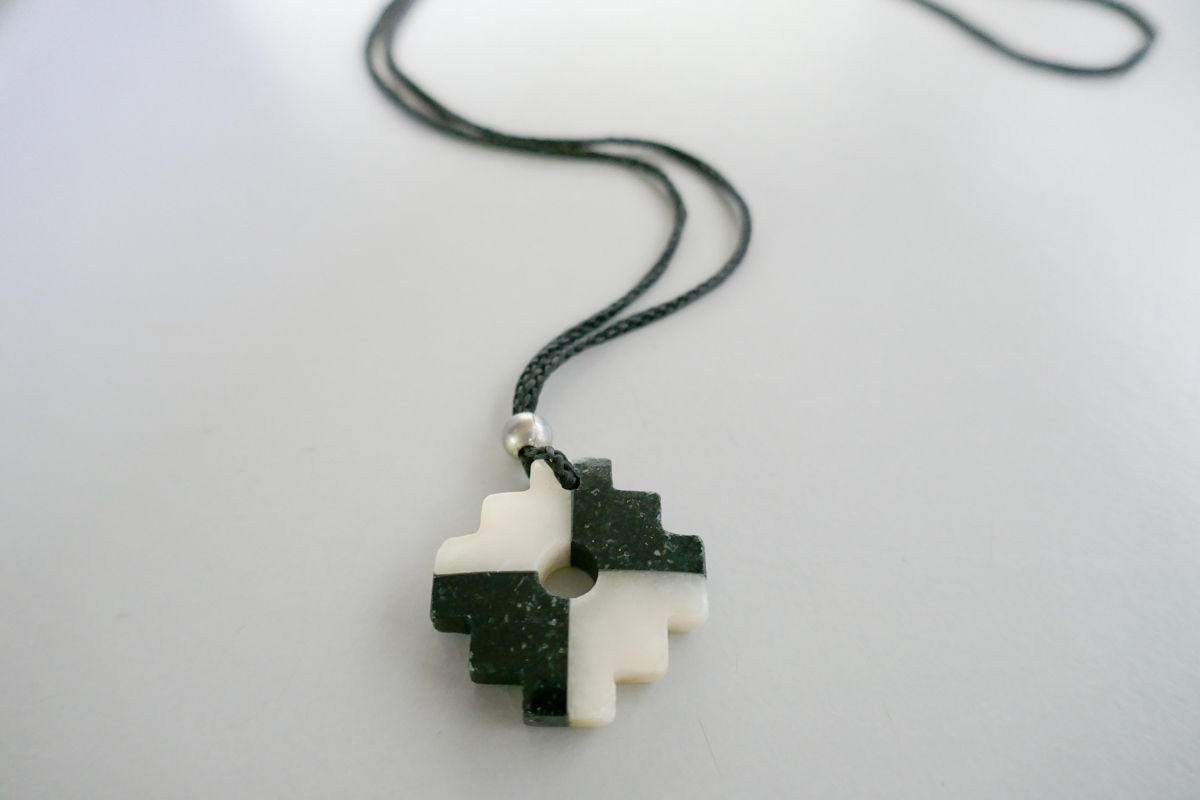
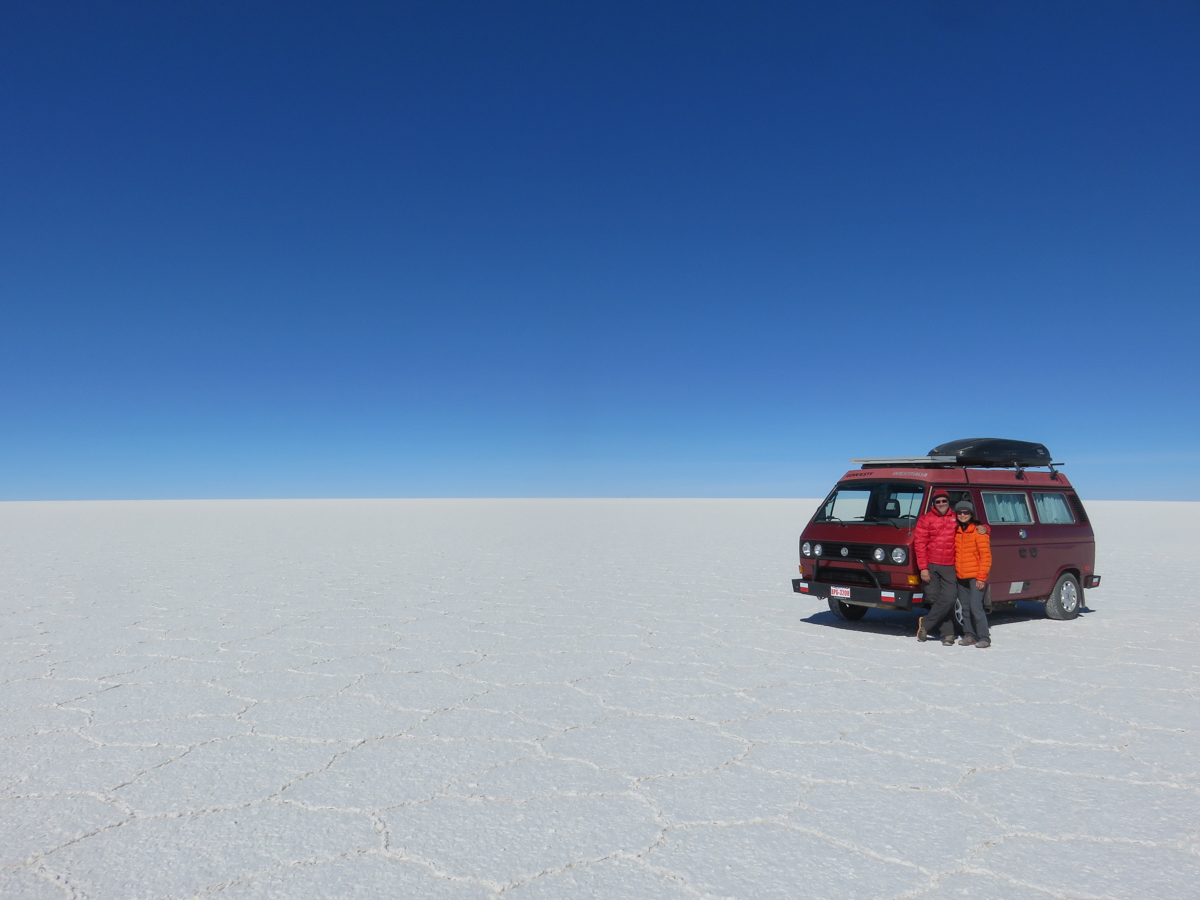
SO flipping happy we could do that stretch with you guys. So many monumental experiences together. And more to come! Great post, Janice!! hugs.
Here’s to more monumental experiences together!
Love your writing and continue to be inspired from your trip. Thanks for sharing, hoping to set off on our own journey south in our Westy come early 2017 🙂
Thanks for following along, you’ll have fun!
WoW! Bravo! Que fotos tan estupendas!!! I really love this post, Un súper abrazo amigos!
Hola amigo! Thanks for your nice comment 🙂 It was fun taking photos on the salar. Miss you guys!
Awesome blog, y’all!
I am jealous of John and Paula … I want to be there with you guys 🙁
I am glad you are having a great time!
Love, Jeff
Hey Jeff! Thanks for reading, it’s great to hear from you. We would have LOVED to be on the salt flats with all of you. Big hugs from Argentina!
I love reading about Uyuni. Great post!
Thanks for reading, George! After seeing everyone else’s awesome photos and blog posts about the Salar, it felt like a dream come true to actually be there.
Such a great read. The last few lines gave me the chills.
The salar is so trippy that we couldn’t help but feel moved. Nature does that sometimes.